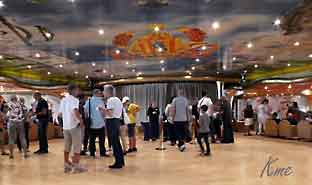flyplass og kjørt til Frihamnen Cruiseterminal, der Costa Magica ventet.
Lørdag 21. juli 2018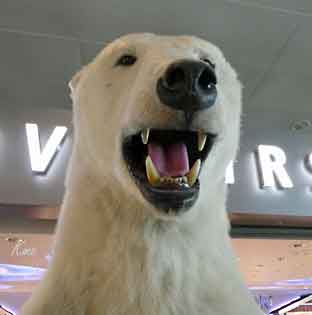 Isbjørn på Gardermoen Flyplass, Oslo |
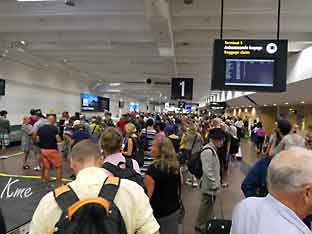 Stor trafikk på Arlanda Flyplass, Stockholm |
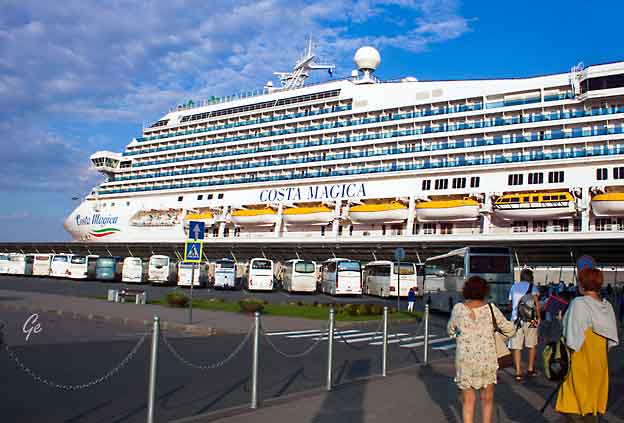
Costa Magica
Her i havn i St. Petersburg
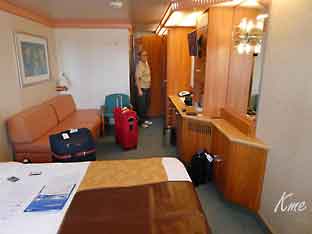 Vi er på plass i lugaren, vårt hjem de neste 7 dagene. Ombord rakk vi akkurat å spise før lunsjserveringen var over. Hadde vi ikke rukket den, hadde det ikke vært lenge å vente før det var tea-time med kaker og mere til. |
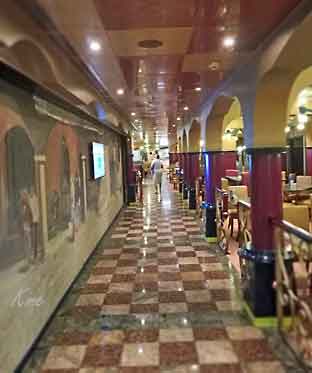 Ristorante Buffet Bellagio |
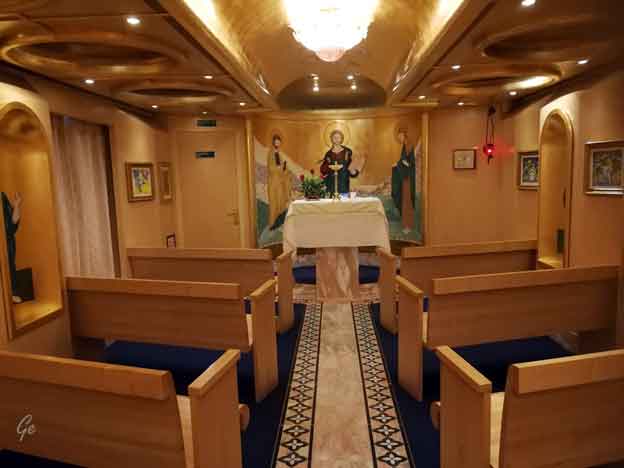
Kapellet ombord
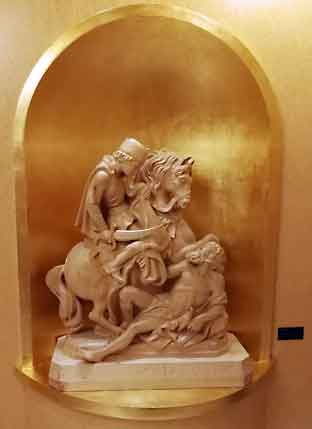 |
 Skulpturen står rett utenfor kapellet |
| Middagen
spiste vi på Ristorante Costa Smeralda hver kveld. Der hadde vi fast bord sammen med åtte andre norske turister. God mat hver kveld. Etter middagen gikk vi til baren. Her Pianobar Capo Colonna. |
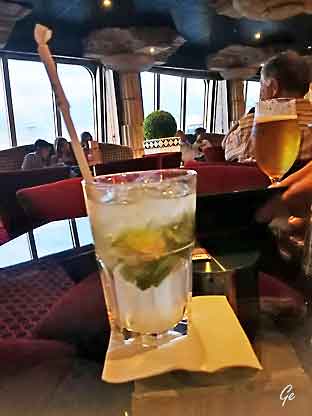 |
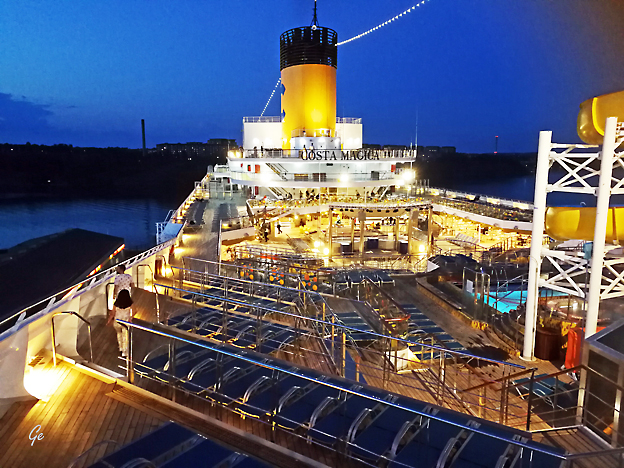
Kveld og stille på soldekk.
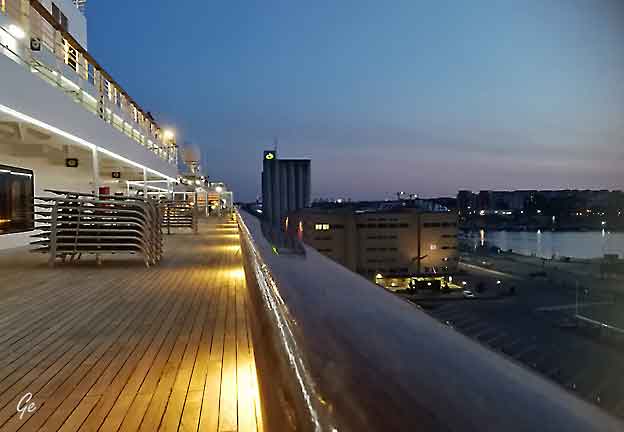
Stockholm en sen kveld.
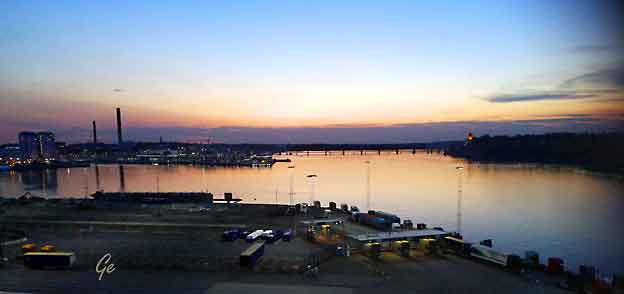
Solnedgang i Stockholm
Første natta lå båten i Stockholm.
Klokka 7 neste morgen seilte vi mot Helsinki.
En fin tur gjennom Stockholms skjærgård.
Ankomst Helsinki klokka 8 mandag 23. juli
Søndag 22. juli 2018
| Søndag
var vi på sjøen hele dagen. Fin seiling gjennom Stockholms skjærgård. 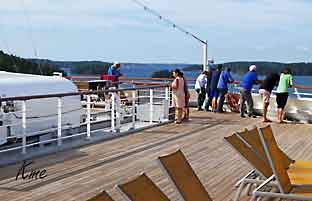 En fin dag på soldekket |
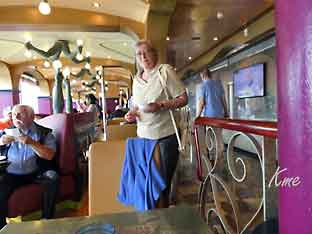 Frokost på restaurant Belaggio |
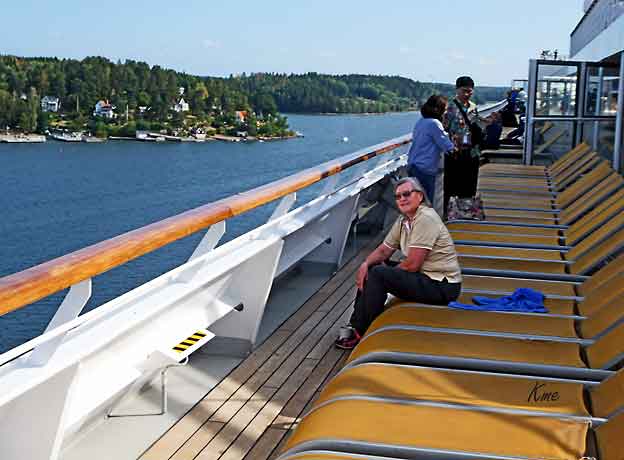
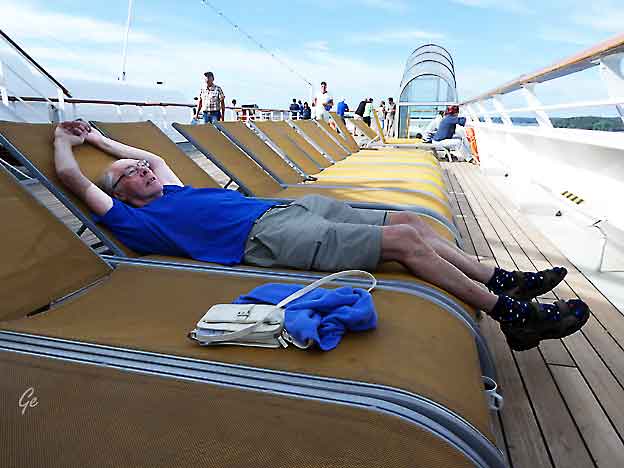
Cruiset begynte med en rolig dag.
Været var fint, og vi koste oss på dekk og i boblebadet.
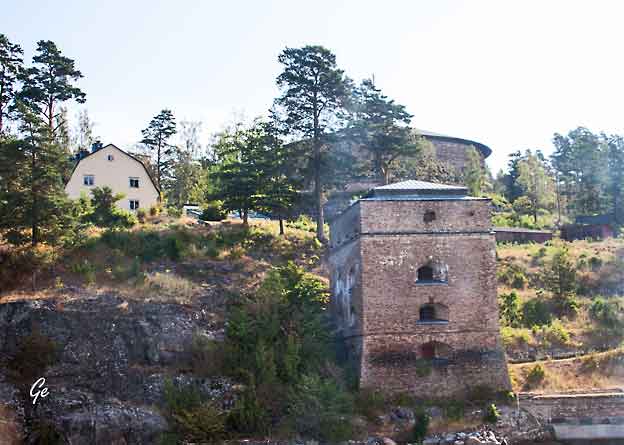
Fredriksborgs fästning är en befästningsanläggning i Värmdö kommun vid Oxdjupet, inloppet till Stockholm. Fästningen bestod av torn,
strandverk och kringbyggnader. Anläggningen ingick i försvaret som
byggdes upp i Stockholms skärgård för att skydda Stockholm efter rysshärjningarna utmed ostkusten 1719.
https://sv.wikipedia.org/wiki/Fredriksborgs_f%C3%A4stning
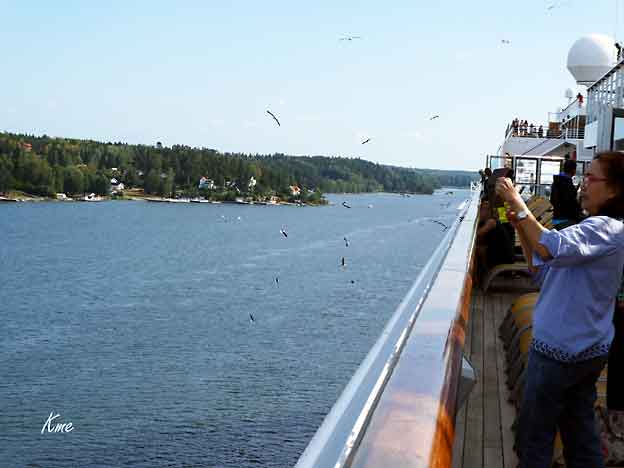
Måkene følger båten
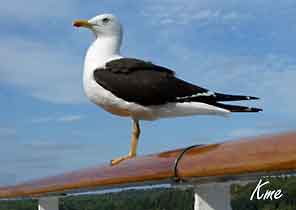 |
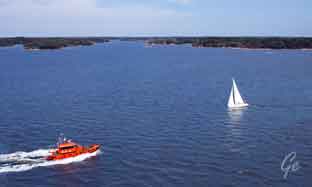 |
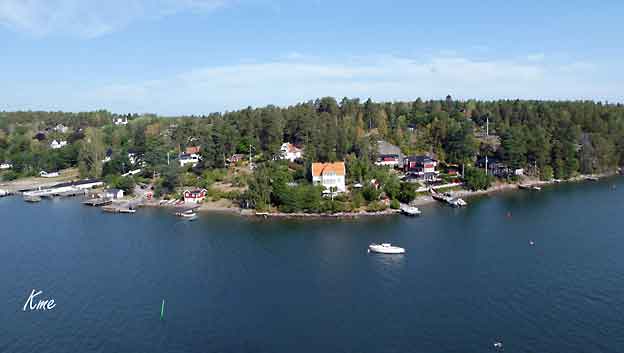
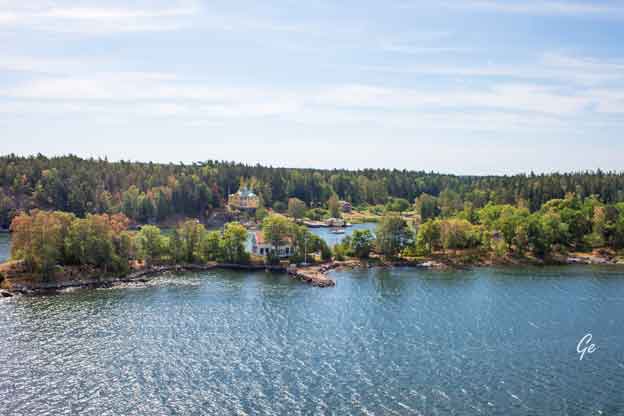
Mange idyller i Stockholms skjærgård
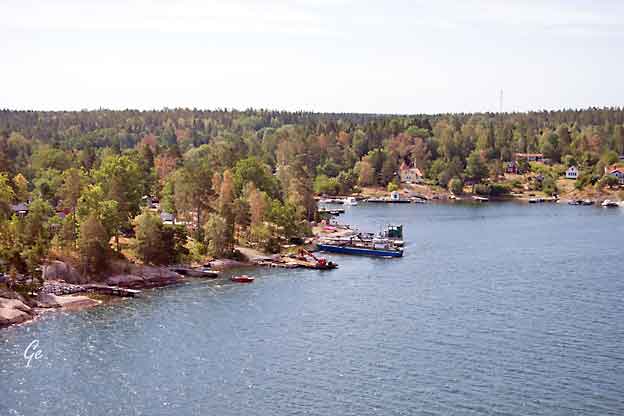
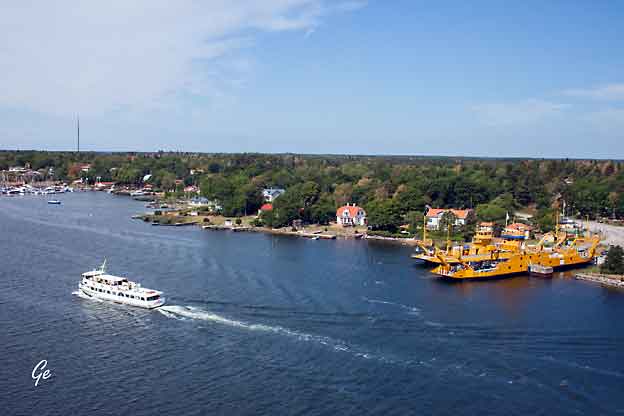
Fergene Gulli og Frida
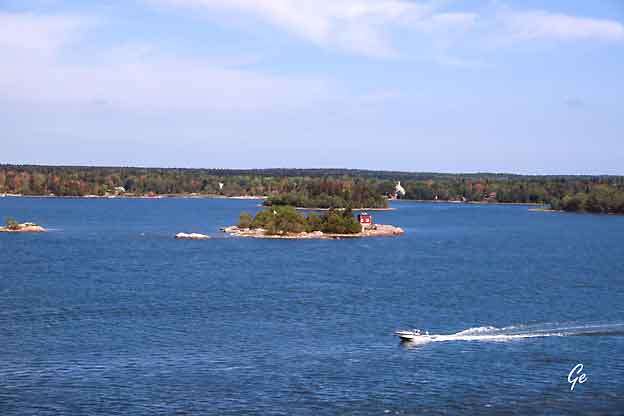
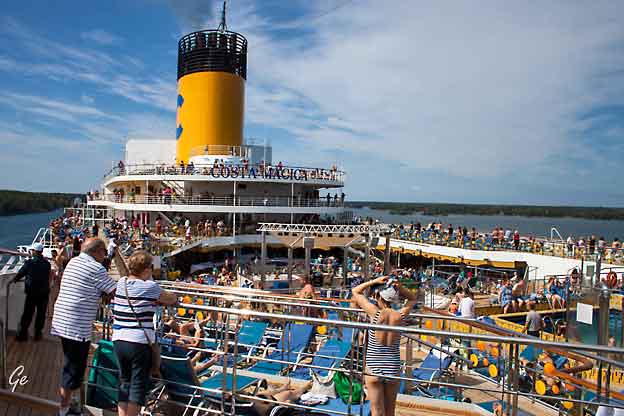
Folksomt rundt bassengene
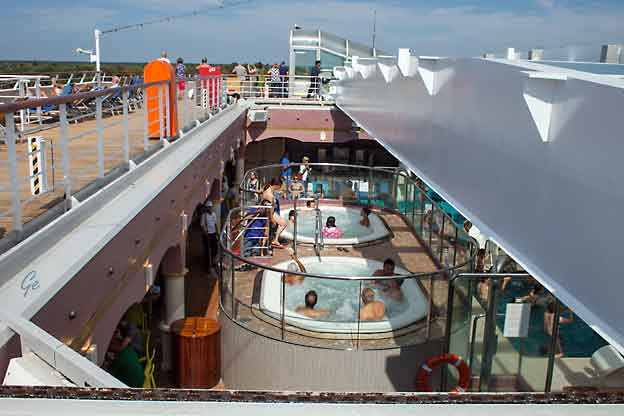
Taket over boblebad og basseng kan trekkes til side.
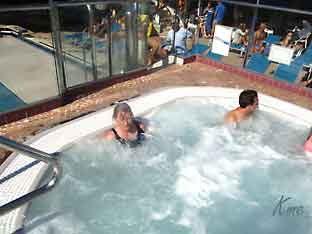 Grete tar boblebad |
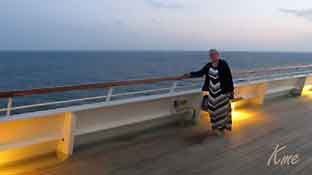 Det er kveld og middagstid. Grete stiller i lang kjole denne kvelden. |
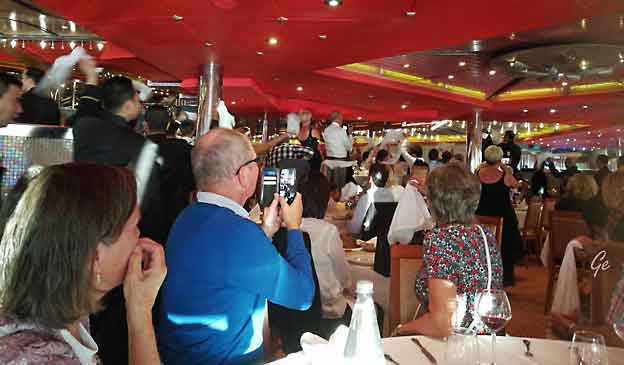
Ristorante Costa Smeralda.
Under middagen var det underholdning.
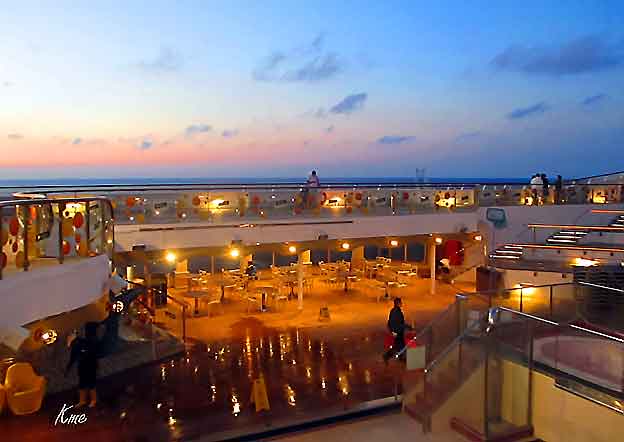
Det er kveld og stille på restaurantene rundt bassengene.
| Show
med ABBA-melodier i Gran Bar Salento |
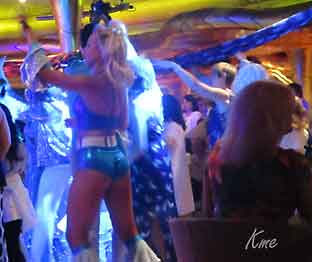 |
Ankomst Helsinki klokka 8.
Det var ca 3,5 km og gå inn til Helsinki sentrum.
Derfor var det satt opp chuttlebusser som skulle gå fra klokka 0830 til 1700.
Alle skulle være ombord kl 17 30 og klokka 18 00 skulle vi seile videre mot
St. Petersburg.
Helsinki (/ˈhɛlsɪŋki,
and most populous municipality of Finland. Located on the shore of the Gulf of Finland, it is the seat of the region of Uusimaa in southern Finland, and has a population of 642,045.
The city's urban area has a population of 1,231,595, making it by far the most populous urban area in Finland as well as the country's most important center
for politics, education, finance, culture, and research. Helsinki is located 80
kilometres (50 mi) north of Tallinn, Estonia, 400 km (250 mi) east
of Stockholm, Sweden, and 390 km (240 mi) west of Saint Petersburg, Russia.
It has close historical ties with these three cities.
https://en.wikipedia.org/wiki/Helsinki
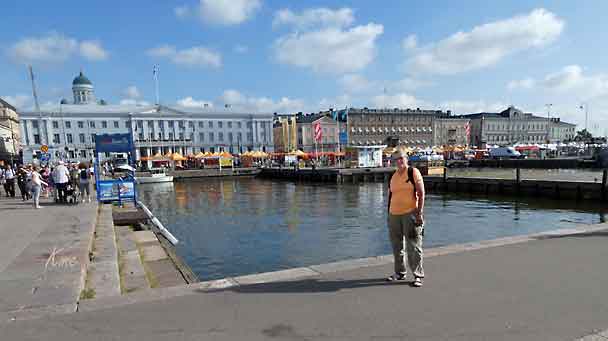
Grete i Helsinki havn
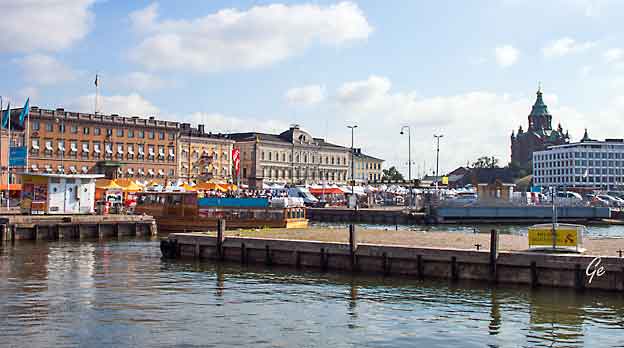
Havn, salgsboder og Uspenski-katedralen
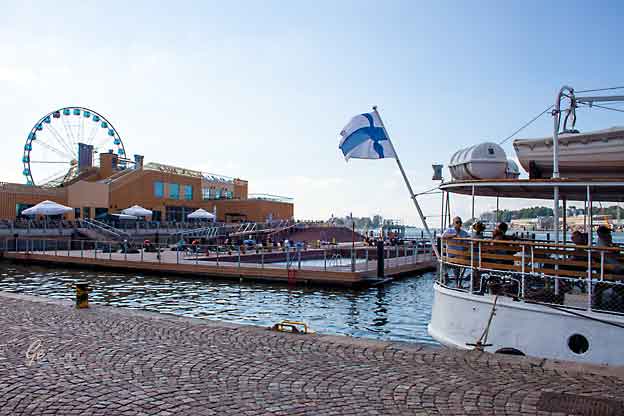
Samme sted som bildet til venstre var det pariserhjul og badebasseng.
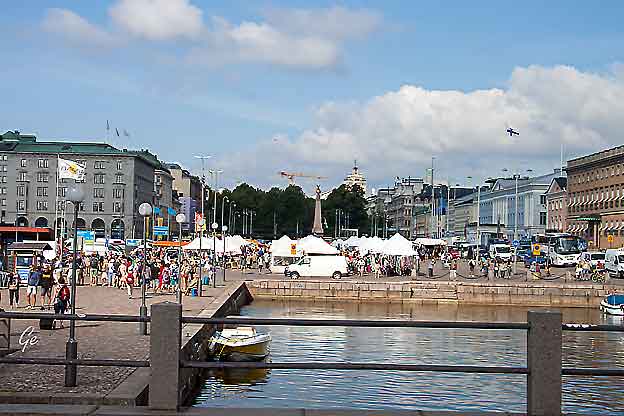
| Karl
Martin har alltid lyst på en Magnum is. |
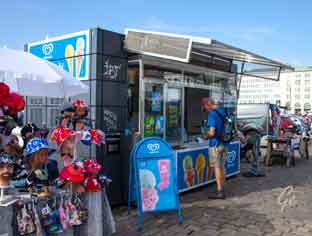 |
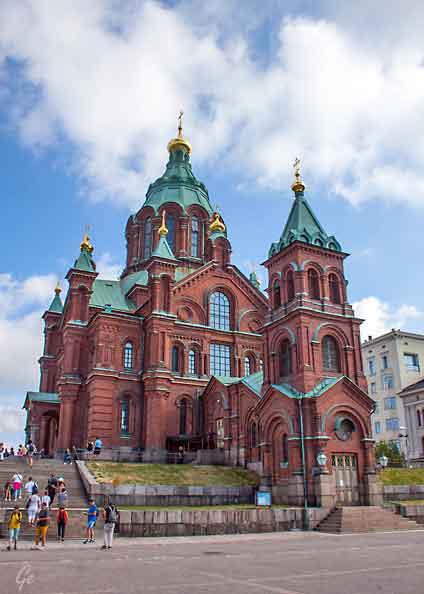 |
Uspenski Cathedral (Finnish: Uspenskin katedraali, Swedish: Uspenskij katedralen, Russian: Успенский собор, Uspenskij sobor) is an Eastern Orthodox cathedral in Helsinki, Finland, and main cathedral of the Orthodox Church of Finland, dedicated to the Dormition of the Theotokos (the Virgin Mary). Its name comes from the Old Church Slavonic word uspenie, which denotes the Dormition. Designed by the Russian architect Aleksey Gornostayev (1808–1862). The cathedral was built after his death in 1862–1868. |
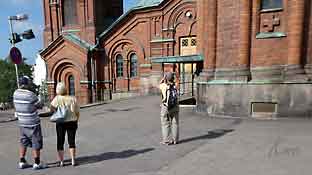 |
The
crypt chapel of the cathedral is named after the holy Alexander Hotovitzky, who served as vicar of the Orthodox parish of Helsinki 1914–1917. The Cathedral is set upon a hillside on the Katajanokka peninsula overlooking the city. On the back of the cathedral, |
the sovereign of the Grand Duchy of Finland during the cathedral's construction.
Main cathedral of the Finnish Orthodox Church in the diocese of Helsinki,
Uspenski Cathedral is claimed to be the largest orthodox church in Western
Europe.
https://en.wikipedia.org/wiki/Uspenski_Cathedral,_Helsinki
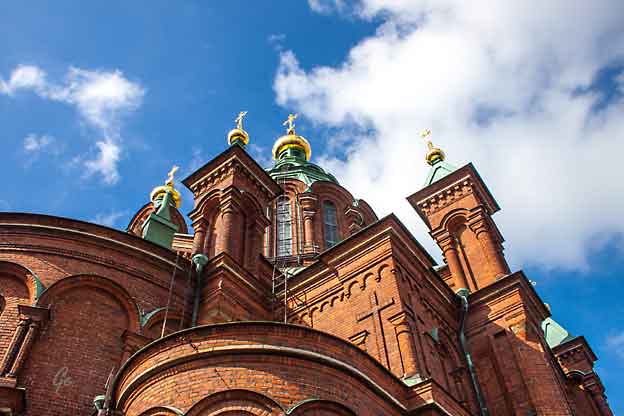 |
|
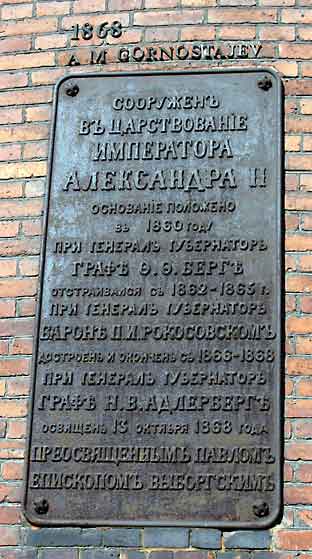 |
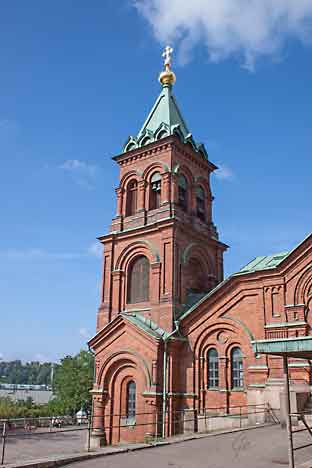 |
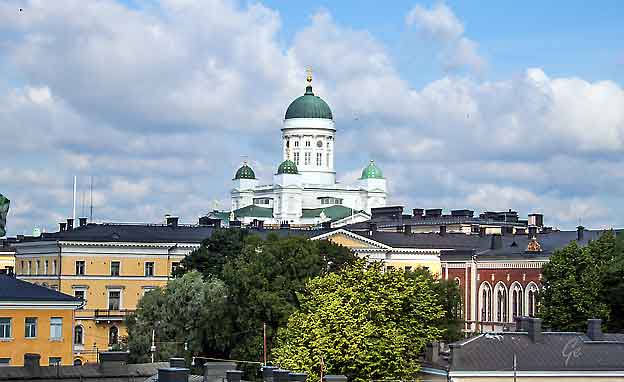
Domkirken sett fra Uspenskin-katedralen
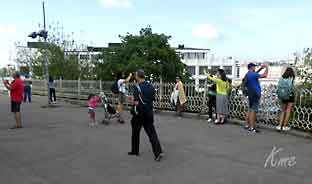 Plassen foran Uspenskin-katedralen |
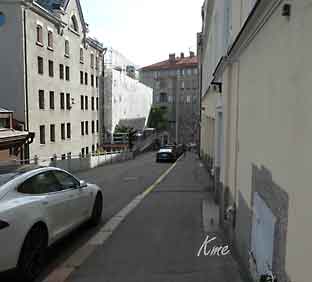 |
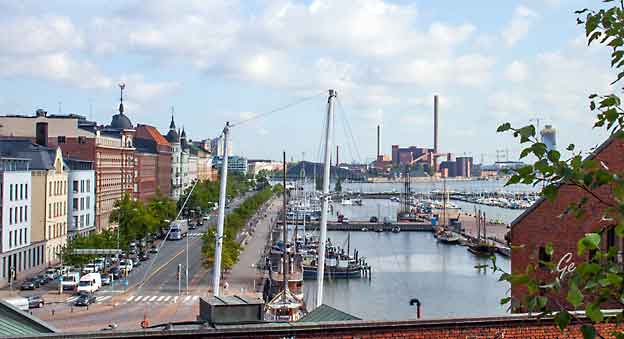
Havn i Helsinki
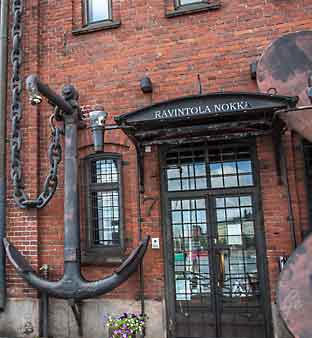 |
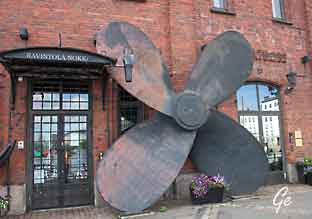 Ravintola Nokka |
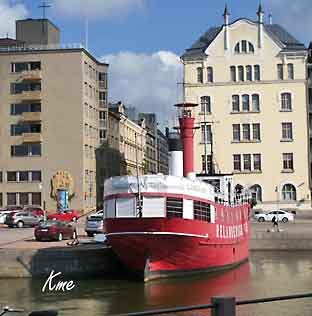 The lightship Relandersgrund at the Meritullintori quay is a floating cafe and bar, open from May to October. A nice seaview towards Korkeasaari island as well as over the Uspenski cathedral, along the shoreline of Katajanokka to the ice breakers and also towards the old wooden ships at Halkolaituri quay. A wide selection of beverages, also some snacks available. https://www.myhelsinki.fi/en/node/30479 (26.8.2019) |
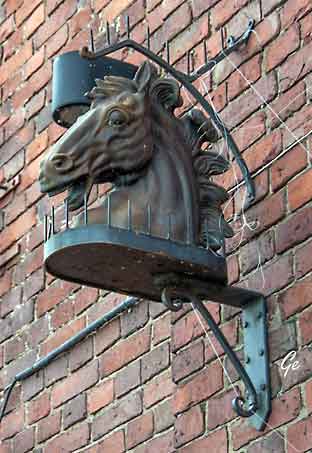 |
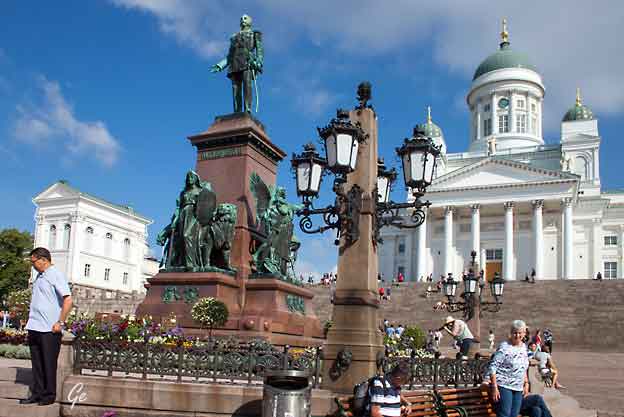
The Senate Square (Finnish: Senaatintori, Swedish: Senatstorget) presents Carl Ludvig Engel's architecture as a unique allegory of political, religious, scientific
and commercial powers in the centre of Helsinki, Finland.
Senate Square and its surroundings make up the oldest part of central Helsinki. Landmarks and famous buildings surrounding the square are the Helsinki
Cathedral, the Government Palace, main building of the University of Helsinki,
and Sederholm House (Finnish: Sederholmin talo), the oldest building of central Helsinki dating from 1757.
https://en.wikipedia.org/wiki/Helsinki_Senate_Square
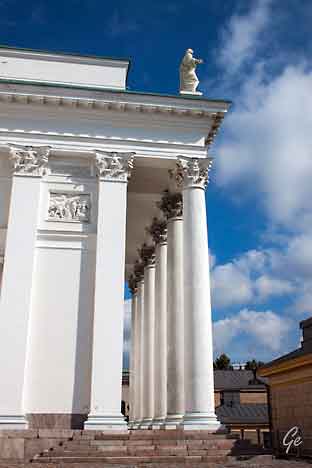 |
Helsinki Cathedral (Finnish:
Helsingintuomionkirkko, Suurkirkko; Swedish: Helsingfors domkyrka, Storkyrkan) is the Finnish Evangelical Lutheran cathedral of the Diocese of Helsinki, located in the neighborhood of Kruununhaka in the centre of Helsinki, Finland. The church was originally built from 1830-1852 as a tribute to the Grand Duke of Finland, Tsar Nicholas I of Russia. It was also known as St Nicholas' Church until the independence of Finland in 1917. It is a major landmark of the city. https://en.wikipedia.org/wiki/ Helsinki_Cathedral |
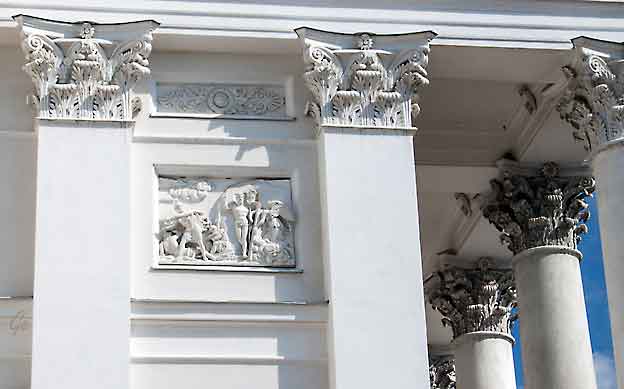
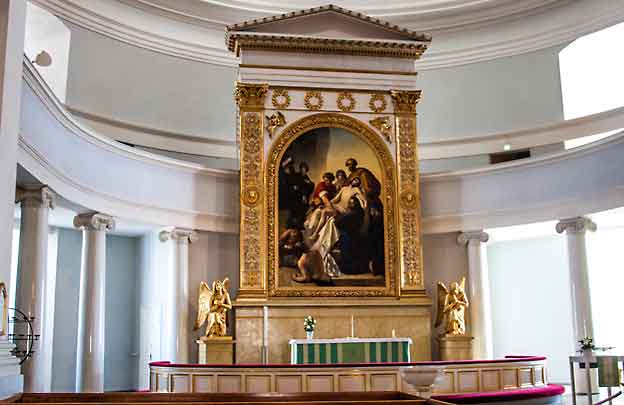
Helsinki Domkirke, alter
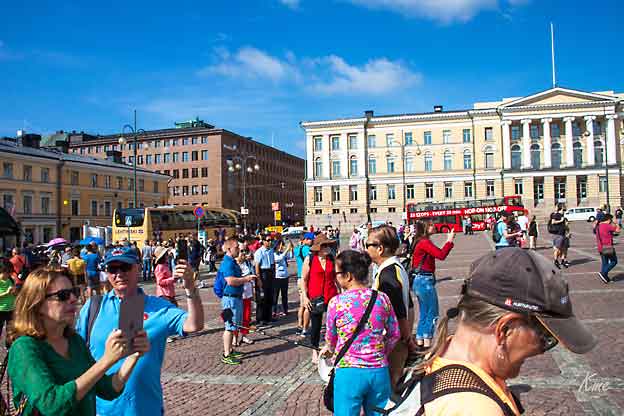
Senatsplassen
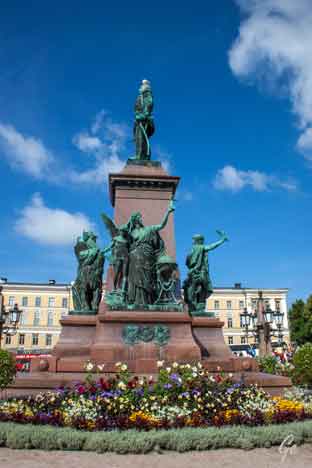 Statuen av Alexander II på Senatsplassen i Helsinki. Bak statuen ligger hovedbygningen til Universitetet. |
A statue of Emperor Alexander
II is located in the
center of the square. The statue, erected in 1894, was built to commemorate his re-establishment of the Diet of Finland in 1863 as well as his initiation of several reforms that increased Finland's autonomy from Russia. The statue comprises Alexander on a pedestal surrounded by figures representing law, culture, and peasants. The sculptor was Walter Runeberg. During the Russification of Finland from 1899 onwards, the statue became a symbol of quiet resistance, with people protesting against the decrees of Nicholas II by leaving flowers at the foot of the statue of his grandfather, then known in Finland as "the good czar". After Finland's independence in 1917, demands were made to remove the statue. Later, it was suggested to replace it with the equestrian statue of Mannerheim currently located on Mannerheimintie in front of the Kiasma museum. |
https://en.wikipedia.org/wiki/Helsinki_Senate_Square
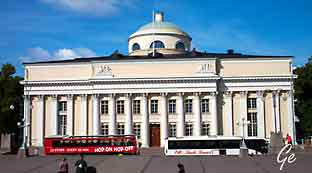 Nasjonalbiblioteket |
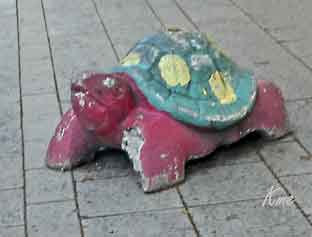 |
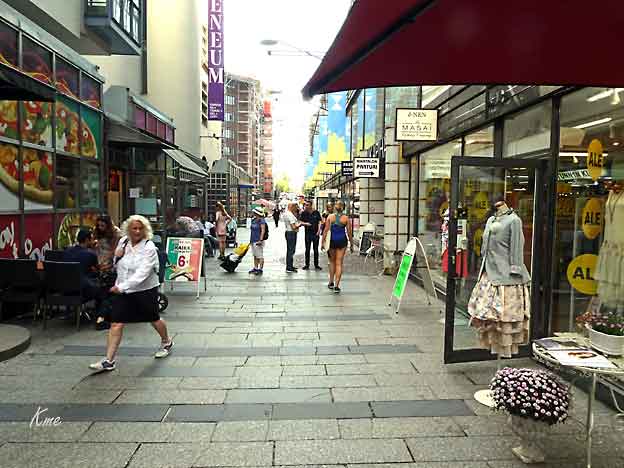
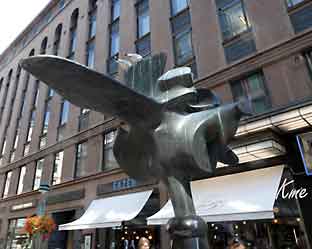 |
 |
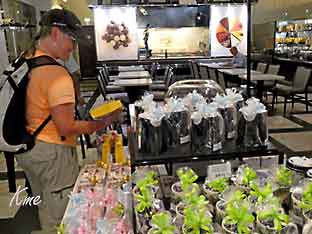 Grete handler i Fazer-butikken |
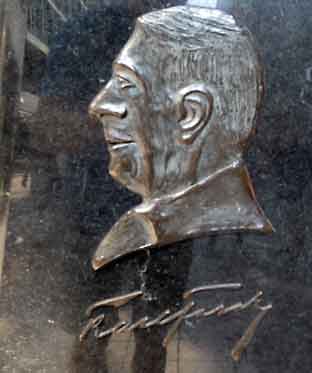 |
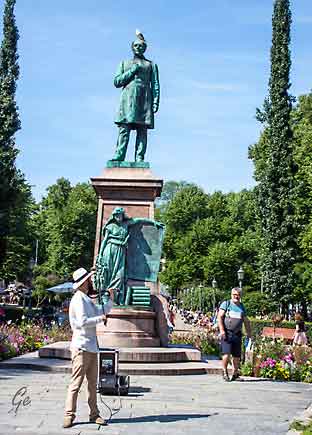 |
Statuen av Finlands nasjonalskald Johan Ludvig Runeberg i Esplanadparken i Helsingfors. Monumentet er formet av dikterens sønn Walter Runeberg og reist 1885. https://no.wikipedia.org/wiki/Esplanadparken#/ media/File:Statue_of_Johan_Ludvig_Runeberg_in_ Helsinki_-_DSC03903.JPG Esplanadparken, eller bare Esplanaden, (finsk Esplanadin puisto, populært Espen) er en park i sentrum av Helsingfors, avgrenset av gatene Norra Esplanaden og Södra Esplanaden, av Svenska Teatern og Mannerheimvägen i vest, og av Salutorget i øst. |
Parken er en av byens mest populære.
På nordsiden av parken står en rekke av byens fineste nyrenessansebygninger.
https://no.wikipedia.org/wiki/Esplanadparken
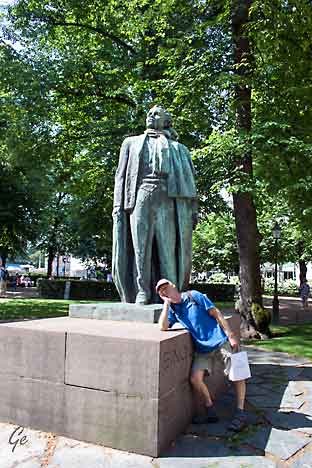 Karl Martin er sliten av kirker og handling |
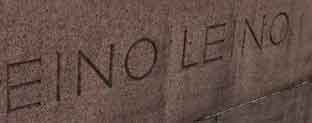 Eino Leino (6 July 1878 – 10 January 1926) was a Finnish poet and journalist and is considered one of the pioneers of Finnish poetry. His poems combine modern and Finnish folk elements. The style of much of his work is like the Kalevala and folk songs. Nature, love, and despair are frequent themes in Leino's work. He is beloved and widely read in Finland today. https://en.wikipedia.org/wiki/Eino_Leino |
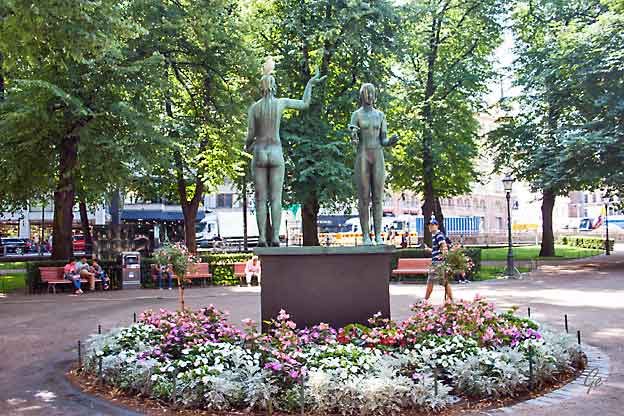
ETT MONUMENT ÖVER Z. TOPELIUS "Saga och sanning" av Gunnar Finne
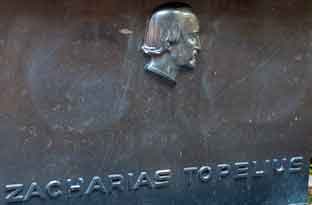 På sokkelen av skulpturen til venstre. Johan Gunnar Finne (4 April 1886 – 17 September 1952) was a Finnish sculptor. The architect Elna Kiljander became a single mother after a brief marriage with Finne from 1918 to 1926. |
Finne's best-known work is the memorial for the author Zachris Topelius in Helsinki. Finne entered the memorial competition arranged in 1928 with an entry titled "Fact and Fable" and won the competition. The finished bronze sculpture was unveiled in 1932 in the Esplanadi Park in central Helsinki. His other works include war heroes statues in Hollola (1941), Karkkila (1948) and Jyväskylä (1922). Finne was awarded the Pro Finlandia medal in 1951. Gunnar Finne - Wikipedia (26. januar 2026) |
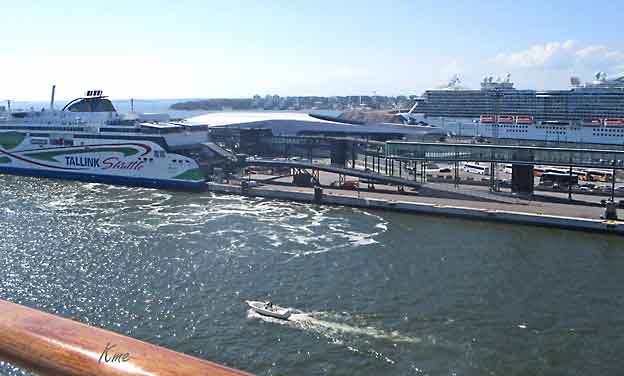 |
Cruisehavna
i Helsinki |
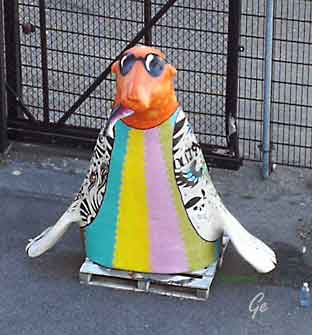 Denne selen ønsker velkommen til Helsinki |
 Grete tar et glass rødvin etter byturen. |
IPA: [ˈsankt pʲɪtʲɪrˈburk])
is Russia's second-largest city after Moscow, with 5 million inhabitants in
2012, part of the Saint Petersburg agglomeration with a population of
6.2 million (2015).
An important Russian port on the Baltic Sea, it has a status of a federal
subject (a federal city).
Situated on the Neva River, at the head of the Gulf of Finland on the
Baltic Sea, it was founded by Tsar Peter the Great on May 27 [O.S. 16]
1703. On 1 September 1914, the name was changed from Saint Petersburg
| Store
blokker på veien fra cruiseterminalen og inn til bysentrum. |
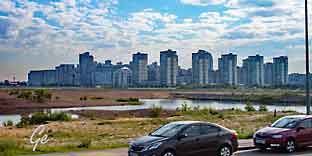 |
to Petrograd (Russian: Петрогра́д, IPA: [pʲɪtrɐˈgrat]), on 26 January
1924 to Leningrad (Russian: Ленингра́д, IPA: [lʲɪnʲɪnˈgrat]), and on
7 September 1991 back to Saint Petersburg.
Between 1713 and 1728 and in 1732–1918, Saint Petersburg was the
capital of Imperial Russia. In 1918, the central government bodies
moved to Moscow, which is about 625 kilometres (388 mi) to the
south-east.
Saint Petersburg is one of the most modern cities of Russia, as well as
its cultural capital. The Historic Centre of Saint Petersburg and
Related Groups of Monuments constitute a UNESCO World Heritage
Site. Saint Petersburg is home to the Hermitage, one of the largest art
museums in the world. Many foreign consulates, international
corporations, banks and businesses have offices in Saint Petersburg.
https://en.wikipedia.org/wiki/Saint_Petersburg
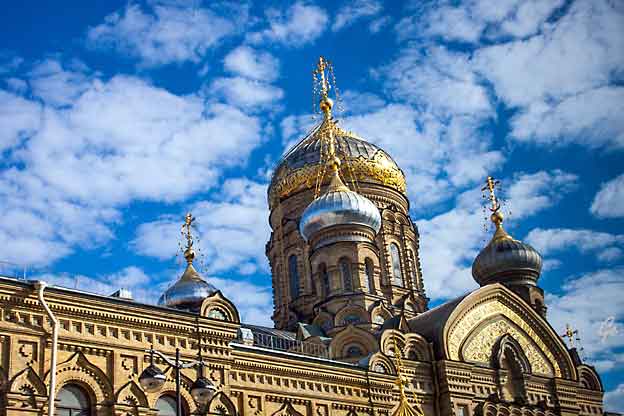
The Bolshoi CircusMore than 120 years ago, the"Circus on the Fontanka" was opened and became the first Russian building (made of stone) designated specifically for circus performances. The idea of the "stone circus" occurred to the Italian circus actor, rider, and trainer Gaetano Ciniselli. This building was considered to be one of the most beautiful circus edifices in Europe. It is common knowledge that |
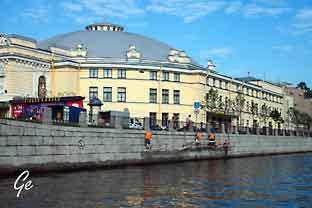 the last Russian Emperor’s (Nicholas II) family liked to visit this circus often. https://www.expresstorussia.com/ guide/petersburg-circus.html |
Church of the Dormition, Church of the Assumption (Saint Petersburg)
The church was built in 1895-1897 by the cellar of the Kiev-Pechersk Lavra.
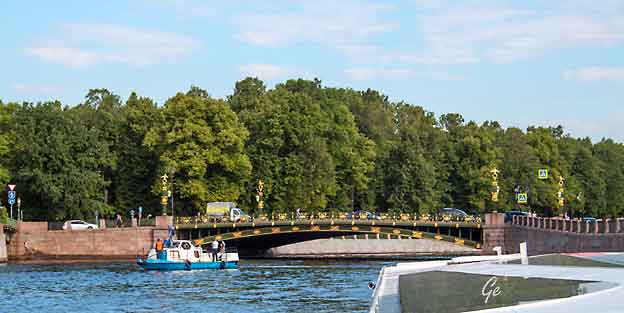
Fint med en båttur på elvene Fontanka og Neva
Fontanka (russisk: Фонтанка) er en elvekanal i Russland, en av floden Nevas
armer, som renner gjennom det sentrale Sankt Petersburg. Fontanka er 7,6 km
lang, har et maksimalt dyp på 3,5 m samt en største bredde på 70 m.
Fontanka kaltes for Den navnløse å (russisk: Безымянный ерик) fram
til ca 1712–1714 da den fikk det nåværende navnet i samband med at
den begynte å forsyne de mange fontenene i Sommerhagen med vann.
Frem til midten av 1700-tallet utgjorde den Sankt Petersburgs søndre
grense. Årene 1780-1789 forestod Andrej Kvasov en større regulering
av elvekanalen, og det var da den fikk sine karakteristiske granittbanker.
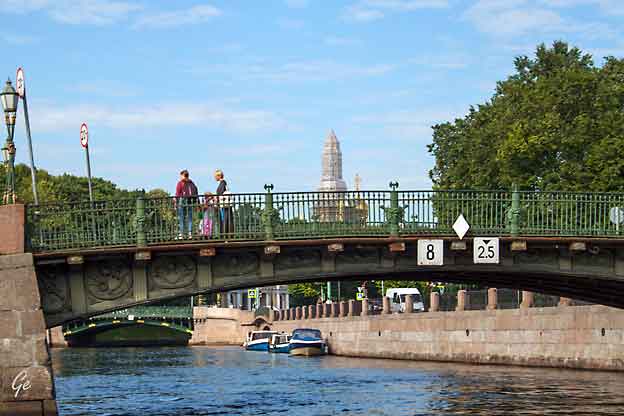
Fontanka krysses av femten broer. Den mest kjente turde være
Anitsjkovbroen på hovedgaten Nevskij prospekt.
To andre kjente broer er Lomonosovbroen og den ekstravagante
egyptiske bro.
https://no.wikipedia.org/wiki/Fontanka
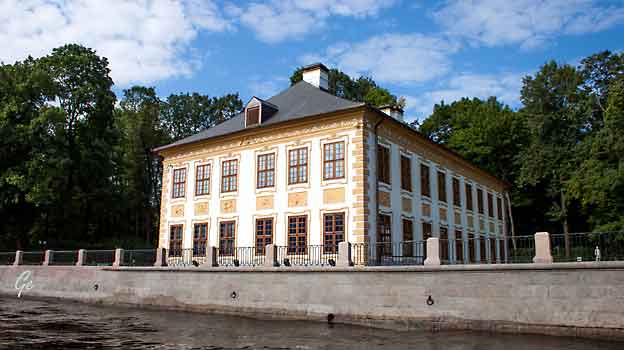
Summer Palace of Peter the Great
Summer Palace of Peter the Great
The first palace built in Saint Petersburg is not really a palace at all.
It is simply a regular two-story stone house in which Peter the Great,
the first Russian Emperor, spent the summer months. However,
this house is the beginning of the glorious history of Petersburg
palaces, which would soon match and even surpass the grandeur of
Versailles, Buckingham Palace and other great palaces of the world.
Since its construction, the Summer Palace has hardly been altered,
and today it gives its visitors a rare opportunity to see life as it was
300 years ago.
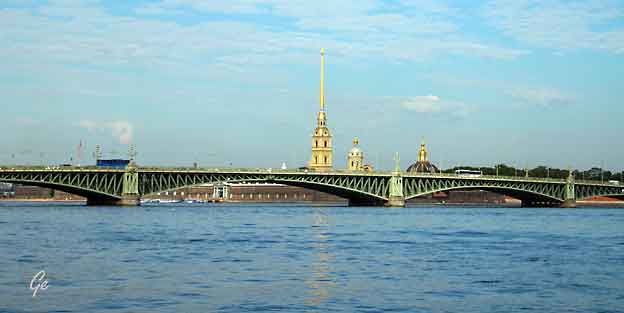
The Trinity (Troitsky) Bridge was opened in 1903 as part of the
celebrations of St. Petersburg's 200th anniversary.
It was the third permanent bridge, after Blagoveshchenskiy Bridge
and Liteiniy Bridge, to be laid across the River Neva, running form
just north of the Field of Mars on the left bank of the river to the
Petrograd Side next to the Peter and Paul Fortress. Measuring 582
meters, it is the second longest bridge in the city, one of the busiest,
and also one of the most beautiful thanks to its spectacularly
ornate Art Nouveau design.
http://www.saint-petersburg.com/bridges/unmissable-trinity-bridge/
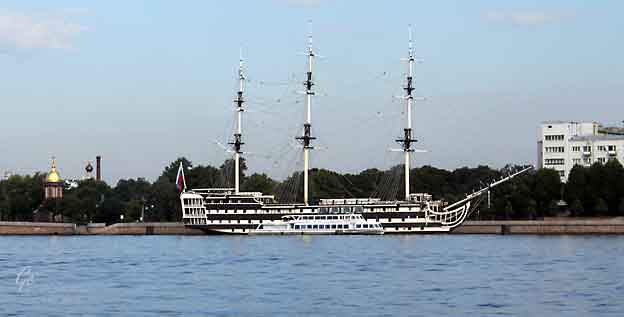
The Neva (Russian: Нева́, IPA: [nʲɪˈva]) is a river in northwestern Russia flowing
from Lake Ladoga through the western part of Leningrad Oblast (historical
region of Ingria) to the Neva Bay of the Gulf of Finland.
Despite its modest length of 74 kilometres (46 mi), it is the fourth largest river
in Europe in terms of average discharge (after the Volga, the Danube
and the Rhine).
The Neva is the only river flowing from Lake Ladoga. It flows through the city of
Saint Petersburg, three smaller towns of Shlisselburg, Kirovsk and Otradnoye,
and dozens of settlements. The river is navigable throughout and is part of the
Volga–Baltic Waterway and White Sea – Baltic Canal.
It is a site of numerous major historical events, including the Battle of the Neva in 1240 which gave Alexander Nevsky his name, the founding of Saint Petersburg in 1703, and the Siege of Leningrad by the German army during World War II.
https://en.wikipedia.org/wiki/Neva_River
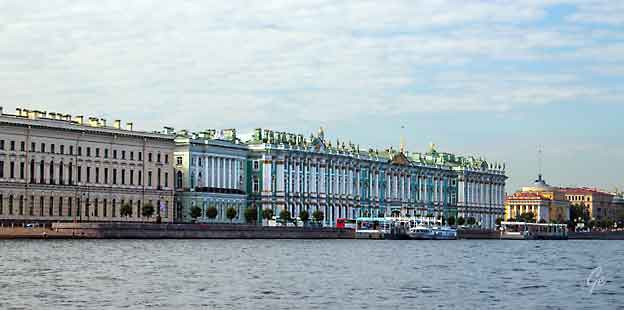
Vinterpalasset
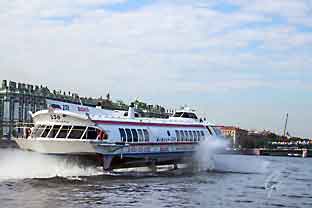 Hydrofoilen ankommer St Petersburg |
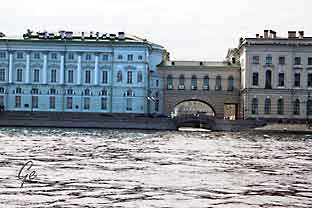 Hermetage Bridge |
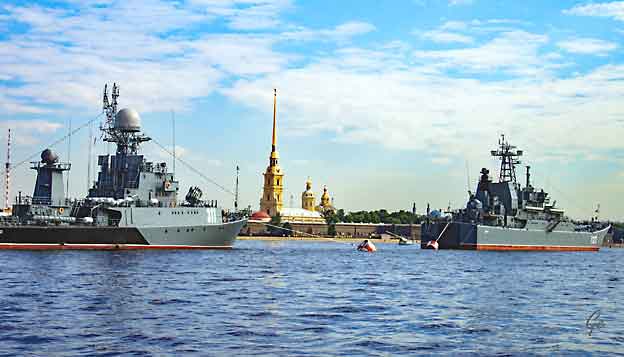
Krigsskip som er kommet for å delta i "Navy Day".
I bakgrunnen sees Peter and Paul Cathedral og Peter and Paul Fortress.
Day of the Russian Navy (Russian: День Военно-Морского Флота) is national holiday in the Russian Federation and a senior holiday in the Russian Armed
Forces. The day honors the sailors in units of the Russian Navy and its specialized
arms (Naval Aviation and the Coastal Troops consisting of the Naval Infantry
and the Coastal Missile and Artillery Troops). It is celebrated annually, on the
last Sunday of July.
Russia celebrates Navy Day with a 2-hour fleet review in St. Petersburg near the
Neva River and the Port of Kronstadt, commonly known as the Main Naval Parade (Russian: Главный военно-морской парад).
Navy Day (Russia) - Wikipedia (26. januar 2023)
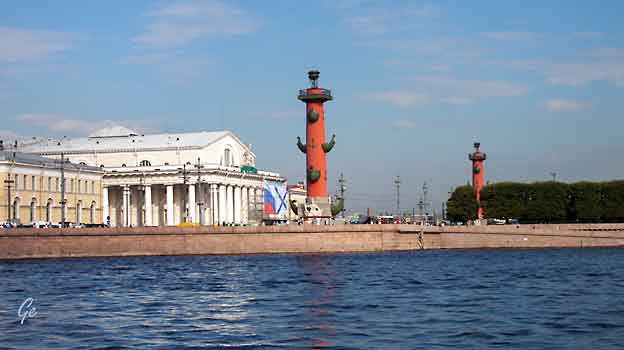
Rostral Columns
These two columns standing on the Strelka ("spit") of Vasilyevsky Island
are as much a symbol of St. Petersburg as the open arches of Palace
Bridge, the dome of St. Isaac's Cathedral, or the spires of the Admiralty
and the Ss. Peter and Paul Cathedral.
For over two centuries, they have formed an integral part of the city's
central panorama over the River Neva, and are particularly impressive
on major public holidays, when torches are lit on top of them.
http://www.saint-petersburg.com/monuments/rostral-columns/
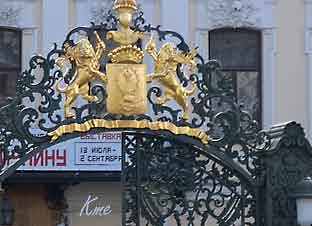 |
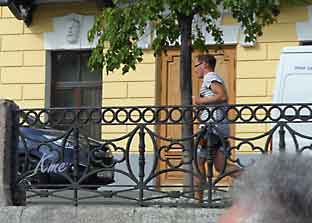 |
Etter båtturen på kanal og elv, kjørte vi til Vinterpalasset.
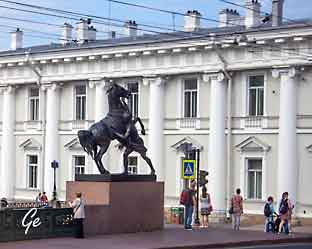 |
The most striking decorations on
Anichkov Bridge, however, are the Horse Tamers by Pyotr Klodt, who also sculpted the equestrian statue of Nicholas I on St. Isaac's Square, and the quadriga above the portico of the Bolshoi Theatre in Moscow. These beautiful bronze cast proved so popular that copies of the sets at the eastern end of the bridge, installed in 1841, were sent as Imperial gifts to Frederick |
at the western end were erected in 1850. During the Siege of Leningrad, the
sculptures were removed and buried in the grounds of the Anichkov Palace
nearby. Thus, unlike the bridge, they survived the war intact. All damage was
repaired, however, and the statues were restored to their rightful place on
1 May 1945, a week before victory was declared.
http://www.saint-petersburg.com/bridges/unmissable-anichkov-bridge/
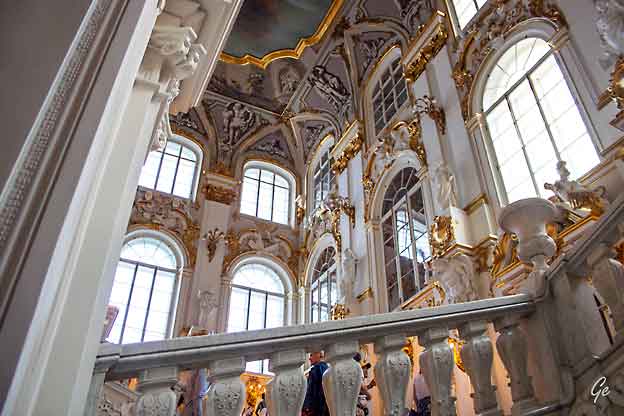
Her kom vi inn i palasset
The Winter Palace was built between 1754 and 1762 for Empress Elizabeth,
the daughter of Peter the Great.
| Unfortunately, Elizabeth died before the palace's completion and only Catherine the Great and her successors were able to enjoy the sumptuous interiors of Elizabeth's home. Many of the palace's impressive interiors have been remodeled since then, particularly after 1837, when a huge fire destroyed most of the building. Today the Winter Palace, together with four more buildings arranged side by side along the river embankment, houses the extensive collections of the Hermitage. The Hermitage Museum is the largest art gallery in Russia and is among the largest and most respected art museums in the world. http://www.saint-petersburg.com/virtual-tour/hermitage/ |
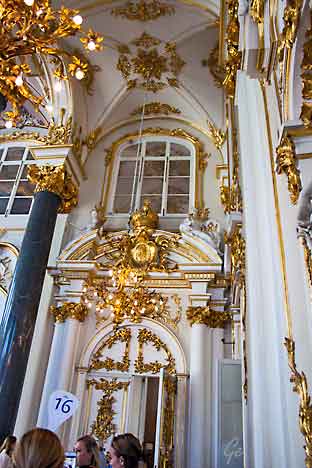 |
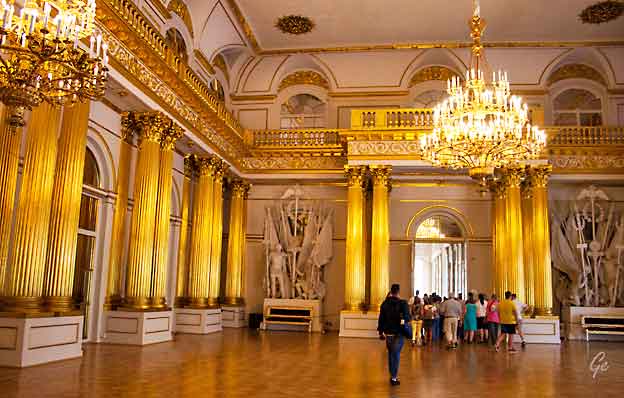
The Armorial Hall, or Guard Room is decorated with vast stuccopanoplies.
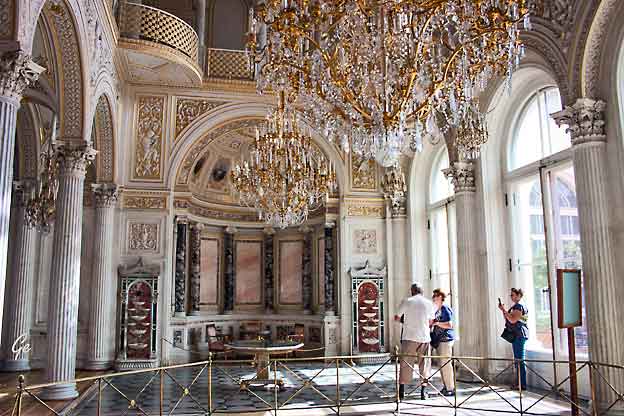
Pavilion Hall
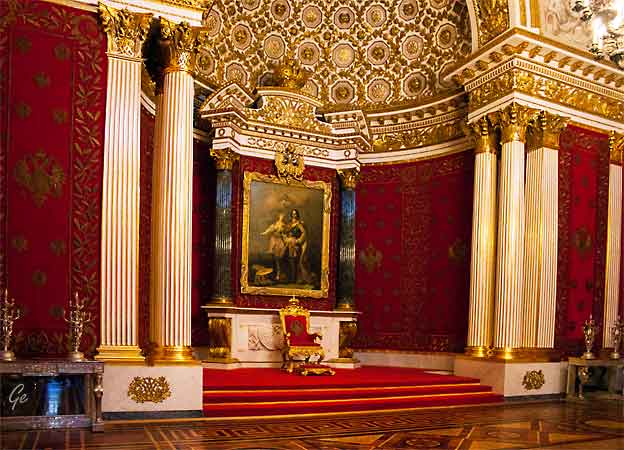
The Small Throne Room of the Winter Palace, St Petersburg, also known
as the Peter the Great Memorial Hall, was created for Tsar Nicholas I in
1833, by the architect Auguste de Montferrand. Following a fire in 1837,
in which most of the palace was destroyed, the room was recreated
exactly as it had been before by the architect Vasily Stasov.
https://en.wikipedia.org/wiki/Small_Throne_Room_of_the_Winter_Palace
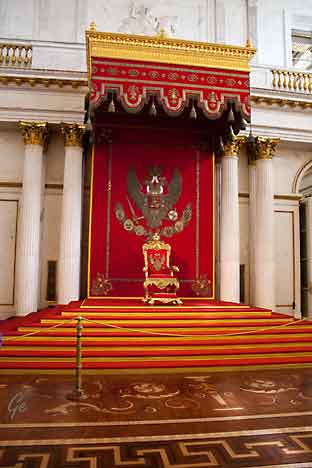 |
St George's Hall, which
served as the palace's principal throne room, was the scene of many of the most formal ceremonies of the Imperial court. Most historically, it was the setting of the opening of the First State Duma by Nicholas II, in 1906. The Tsar was forced to agree to the establishment of a Duma as a concession to his people in an attempt to avert revolution. However, the Imperial family saw it as "the end of Russian autocracy". https://en.wikipedia.org/wiki/St_ George%27s_Hall_and_ Apollo_Room_ of_the_Winter_Palace |
of the largest state rooms in the Winter Palace, St Petersburg.
It is located on the eastern side of the palace, and connected to The
Hermitage by the smaller Apollo Room.
https://en.wikipedia.org/wiki/St_George%27s_Hall_and_Apollo_Room_
of_the_Winter_Palace
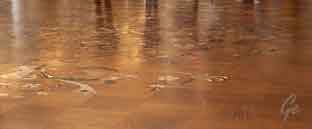 St George's Hall Ikke så lett å se på bildet, men det er samme mønster i gulv og tak, |
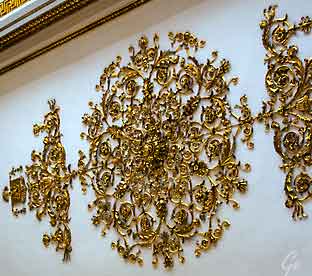 |
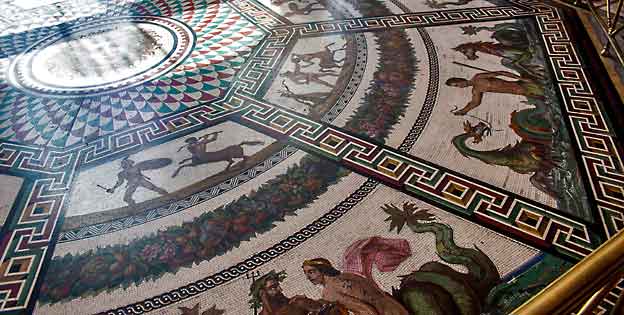
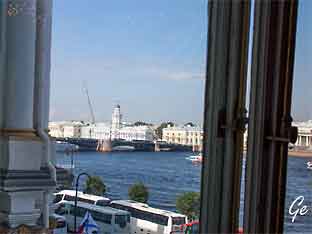 Utsikt fra Vinterpalasset |
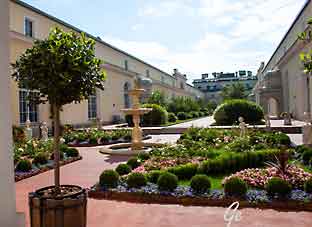 Hage i 2. etasje |
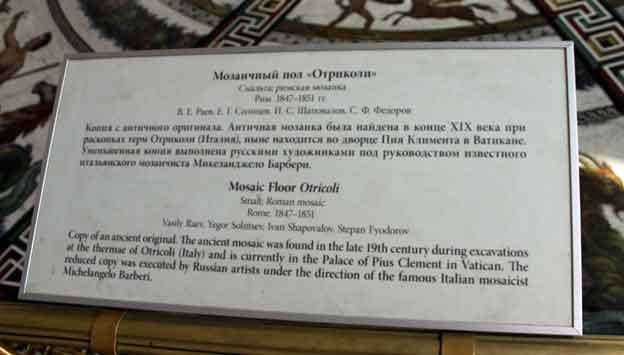
 |
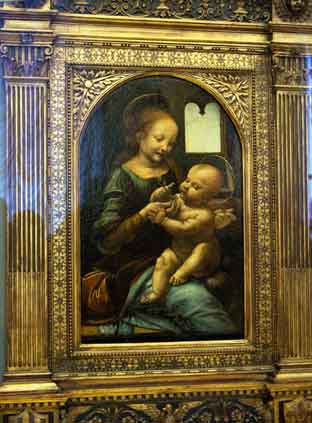 |
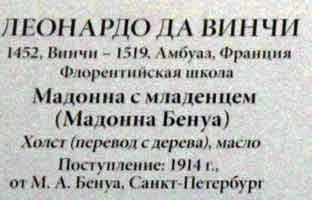 |
|
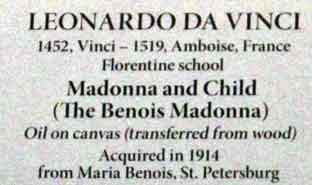 |
|
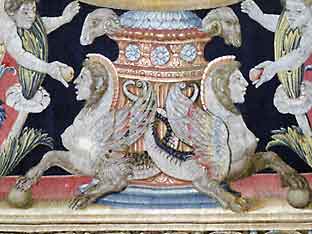 |
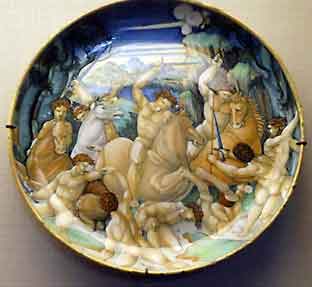 |
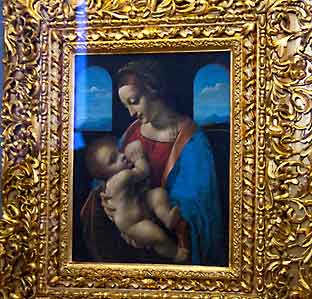 |
Leonardo
da Vinci - Madonna and Child |
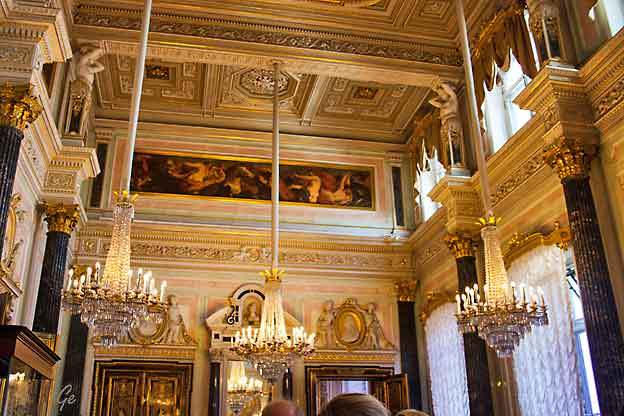
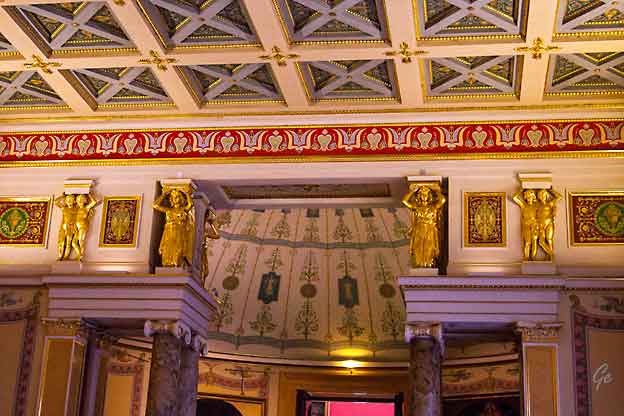
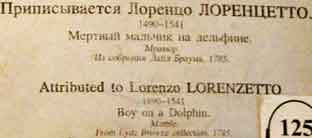 |
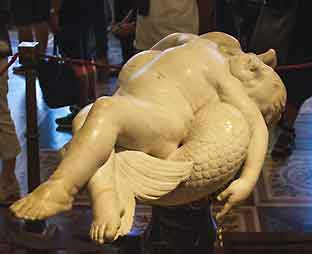 |
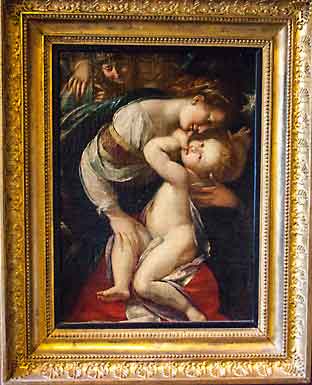 |
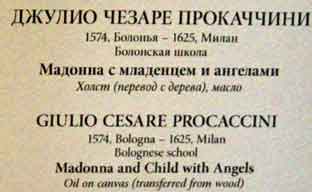 |
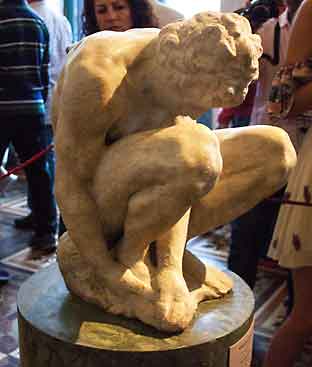 |
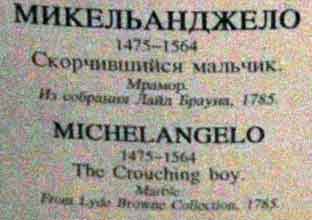 |
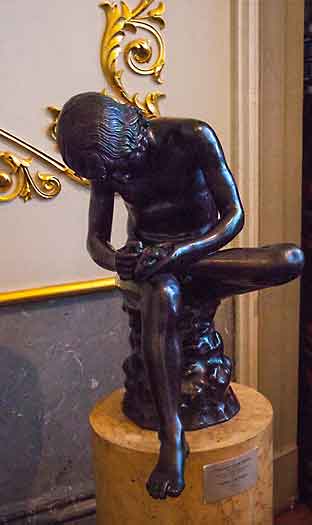 |
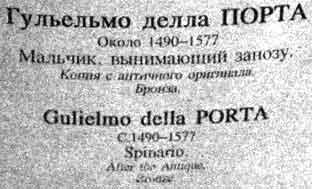 |
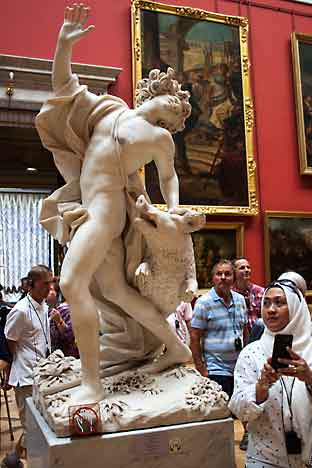 |
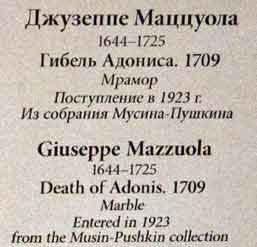 |
The museum was founded in 1764 when Catherine the Great purchased
a collection of 255 paintings from the German city of Berlin. Today, the
Hermitage boasts over 2.7 million exhibits and displays a diverse range
of art and artifacts from all over the world and from throughout history
(from Ancient Egypt to the early 20th century Europe).
The Hermitage's collections include works by Leonardo da Vinci,
Michelangelo, Raphael and Titian, a unique collection of Rembrandts
and Rubens, many French Impressionist works by Renoir, Cezanne, Manet,
Monet and Pissarro, numerous canvasses by Van Gogh, Matisse, Gaugin
and several sculptures by Rodin.
http://www.saint-petersburg.com/virtual-tour/hermitage/
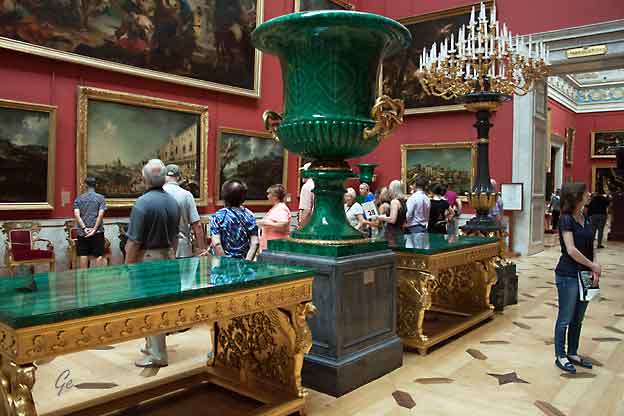
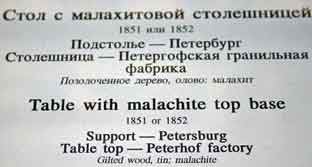 |
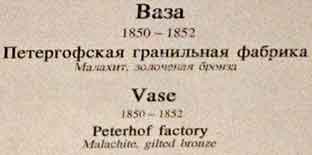 |
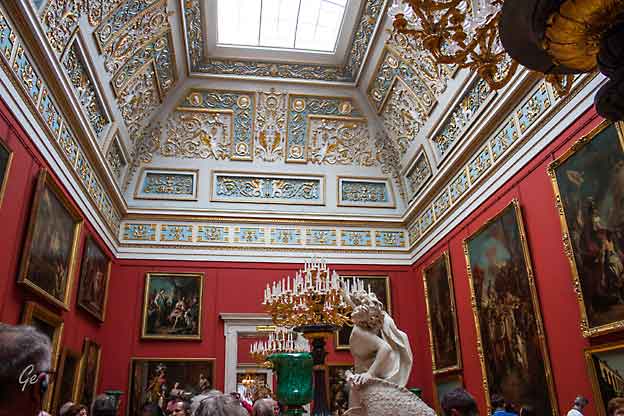
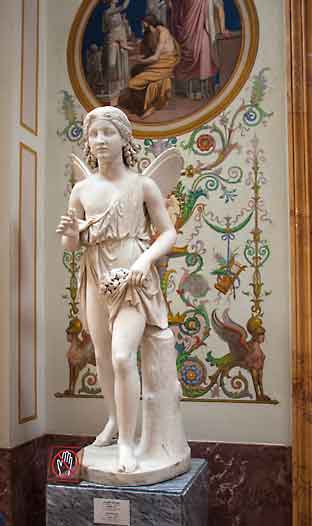 |
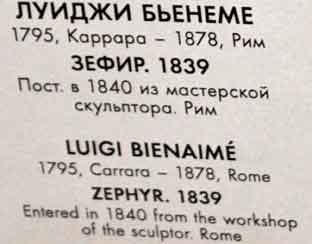 |
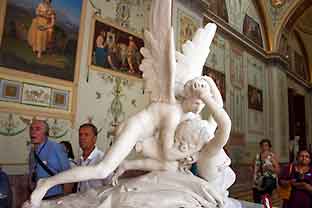 |
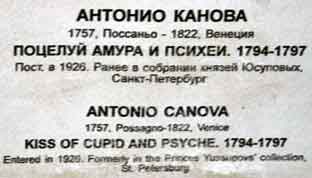 |
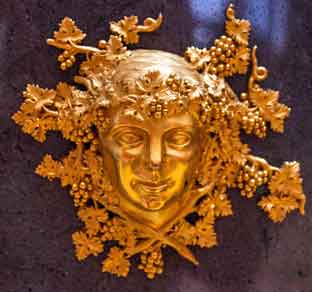 |
Etter
Vinterpalasset kjørte vi til Church on the Spilled Blood. |
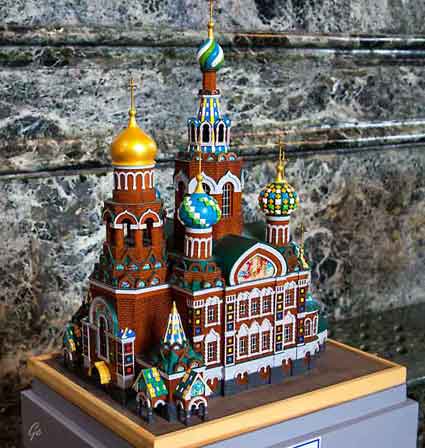 St_Petersburg: modell av "Church on the Spilled Blood" |
Church of the Resurrection of Jesus Christ is known to Petersburgers as the Church of the Savior on the Spilled Blood - or even just the Church on the Blood - as it marks the spot where Alexander II was fatally wounded in an assassination attempt on March 1, 1881. Designed by Alfred Parland in the style of 16th and 17th-century Russian churches, the Church of the Resurrection |
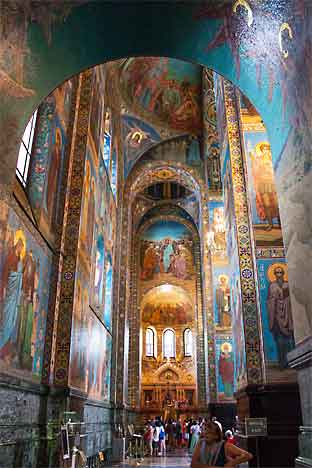 |
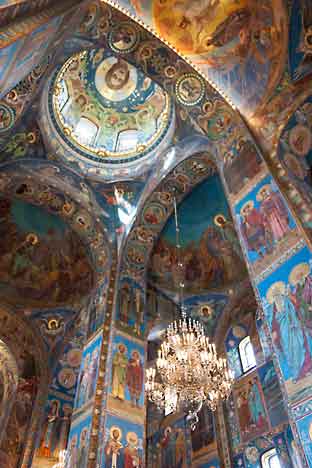 |
surroundings of Baroque, Classical and Modernist architecture.
http://www.saint-petersburg.com/cathedrals/church-resurrection-jesus-christ/
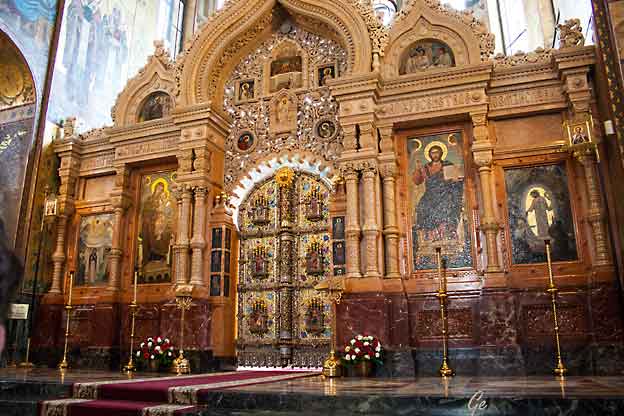
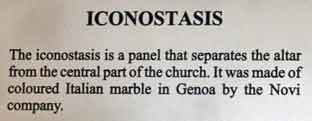 Bildet til venstre  Bildet til høyre |
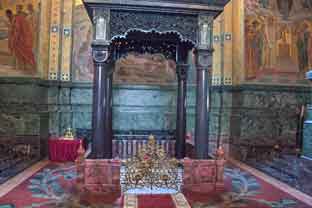 |
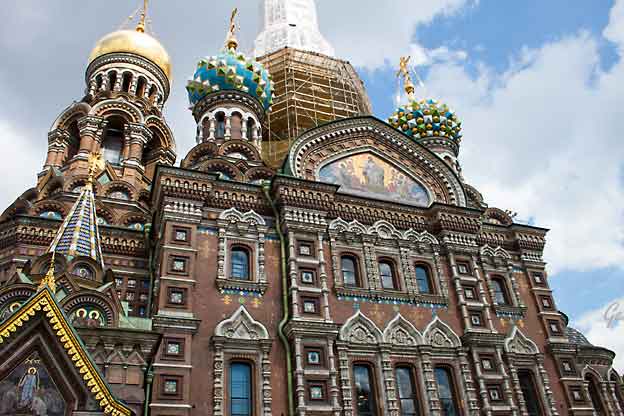
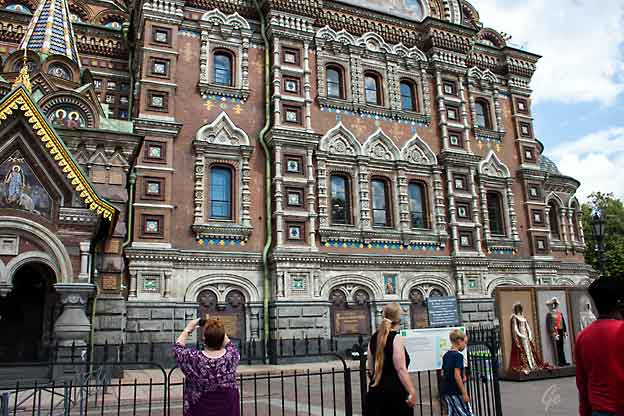
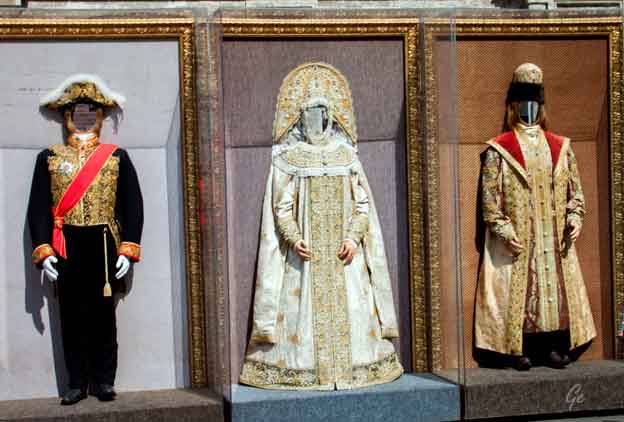
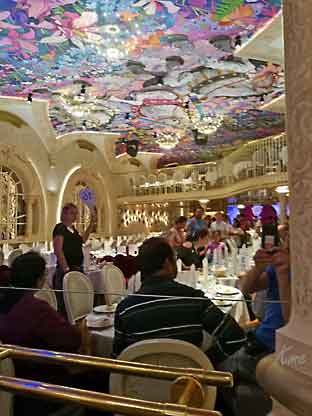 |
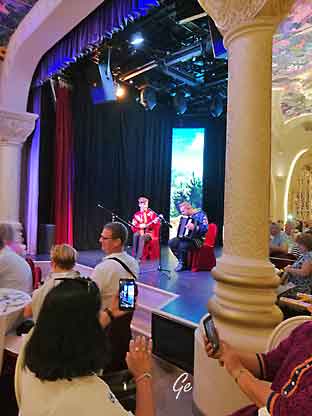 |
og til det russisk musikk. Et fint måltid
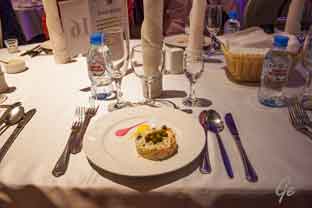 |
Rett
nr 1 av 5 Rett nr to var potetkake med kaviar, nr 3 var rødbetsuppe, nr 4, kjøttsaus med potetmos, nr 5, dessert |
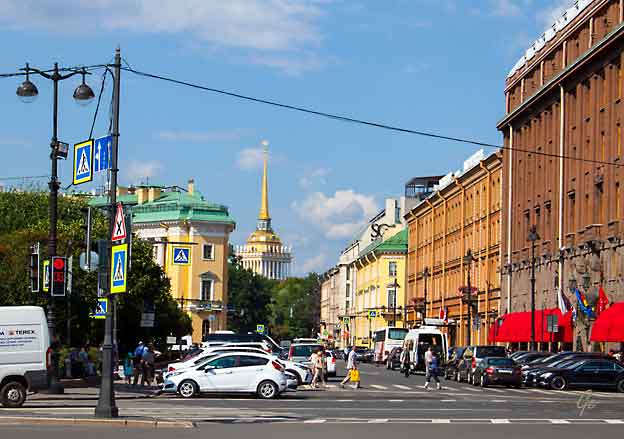
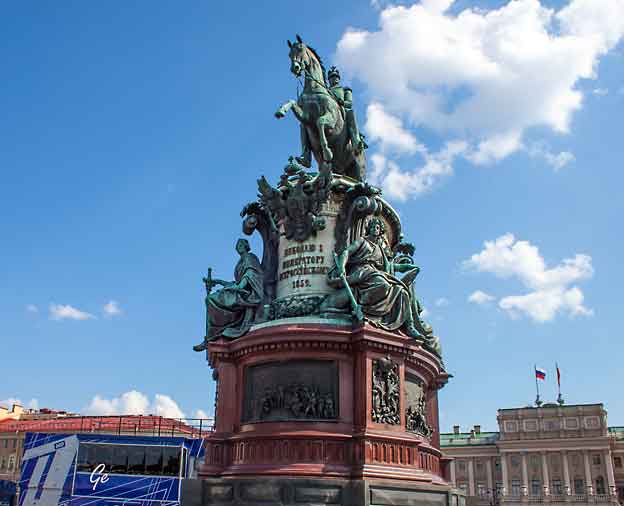
The Monument to Nicholas I (Russian: Памятник Николаю I) is a bronze equestrian monument of Nicholas I of Russia on St Isaac's Square
(in front of Saint Isaac's Cathedral) in Saint Petersburg, Russia.
Unveiled on July 7th [O.S. June 25th] 1859, the six-meter statue was a
technical wonder of its time. It was the first equestrian statue in Europe
with only two support points (the rear hooves of the horse), the only precedent
being the 1852 equestrian statue of U.S. President Andrew Jackson.
https://en.wikipedia.org/wiki/Monument_to_Nicholas_I
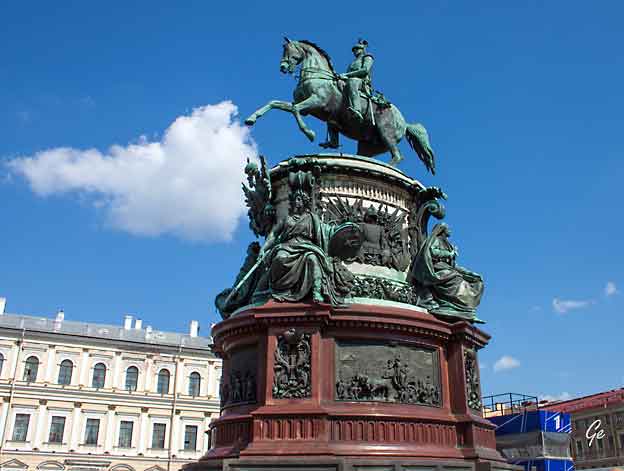
Saint Isaac's Square or Isaakiyevskaya Ploshchad (Russian: Исаа́киевская пло́щадь), known as Vorovsky Square (Russian: Площадь Воровского)
between 1923 and 1944, in Saint Petersburg, Russia is a major city square
sprawling between the Mariinsky Palace and Saint Isaac's Cathedral, which
separates it from Senate Square. The square is graced by the equestrian
Monument to Nicholas I.
https://en.wikipedia.org/wiki/Saint_Isaac%27s_Square
Designer: Auguste de Montferrand is the project head, the architect.
Sculptors: Peter Klodt, Robert Salemann, Nicholas Ramazanov
Architects: Ludwig Bohnstedt, Roman Weigelt
Material: Bronze is a sculpture, high reliefs, letters, a fencing; Pedestal is a red, grey granite, the shohansky porphyry, the Italian marble
Height: 16.3 meters full, Equestrian statue is 6 meters
https://en.wikipedia.org/wiki/Monument_to_Nicholas_I
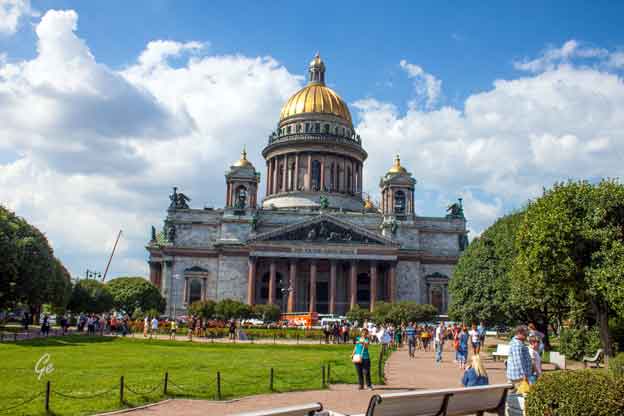
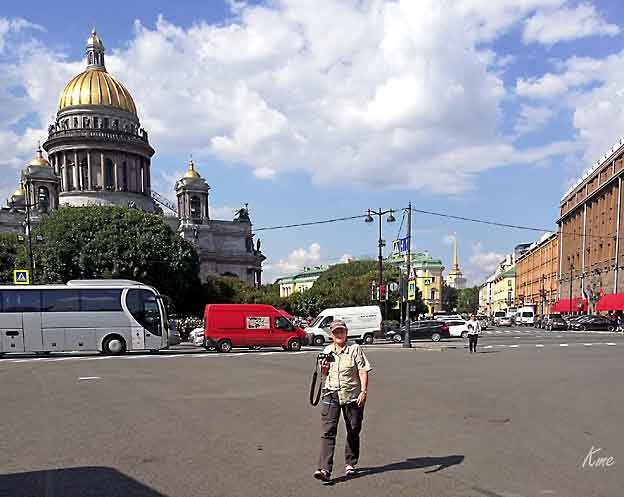
(Russian: Исаа́киевский Собо́р) in Saint Petersburg, Russia,
is the largest Russian Orthodox cathedral (sobor) in the city.
It is the largest orthodox basilica and the fourth largest (by the volume
under the cupola) cathedral in the world. It is dedicated to Saint Isaac of
Dalmatia, a patron saint of Peter the Great, who had been born on the
feast day of that saint.
The church on St Isaac's Square was ordered by Tsar Alexander I, to
replace an earlier structure by Vincenzo Brenna, and was the fourth
consecutive church standing at this place.
that of the French-born architect Auguste de Montferrand (1786–1858),
who had studied in the atelier of Napoleon's designer, Charles Percier.
Montferrand's design was criticised by some members of the commission
for the dry and allegedly boring rhythm of its four identical pedimented
octastyle porticos. It was also suggested that despite gigantic dimensions,
the edifice would look squat and not very impressive. The members of the
commission, which consisted of well-known Russian architects, were also
particularly concerned by necessity to build a new huge building on the
old unsecure foundation. The emperor, who favoured the ponderous
Empire style of architecture, had to step in and solve the dispute in
Montferrand's favour.
https://en.wikipedia.org/wiki/Saint_Isaac%27s_Cathedral
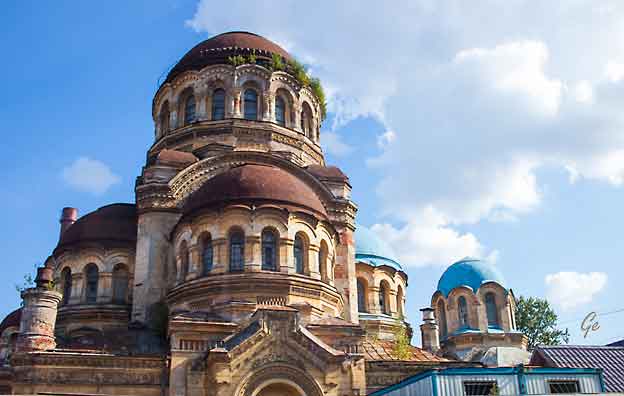
Dette gudshuset ser ikke ut til å være i bruk
Khram Ikony Bozhyey Materi Miluyushchaya
Храм иконы божьей матери Милующей
(navn funnet på google maps)
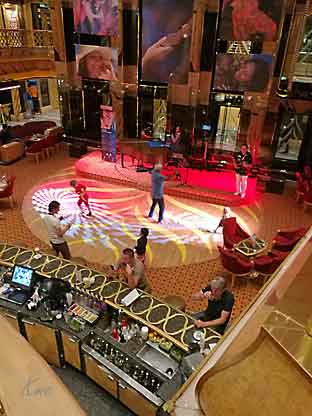 |
Vi kom tilbake til Costa Magica i passe tid til middag. Etterpå var vi i Teatro Urbina, som viste forestillingen: "Magic moments with the singers Silvia Santoro and Simone Pavesio and the Costa Magica dancers." |
| Tidlig
opp igjen for å få med mest mulig av St. Petersburg. Bussen skulle gå fra cruiseterminalen klokka 07 00 og ta oss på landtur. Først skulle vi til Catarina-palasset i Tsarskoje Sela 25 km sørøst for byen. Derfra til Peterhof som ligger 25 km vest for St. Petersburg. Fra Peterhof skulle vi tilbake til byen og se Peter og Paul-katadralen. |
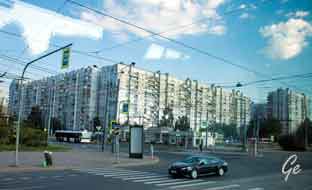 Store blokker mellom cruiseterminalen og bysentrum |
The Catherine Palace is named after Catherine I, the wife of Peter the
Great, who ruled Russia for two years after her husband's death.
Originally a modest two-storey building commissioned by Peter for
Catherine in 1717, the Catherine Palace owes its awesome grandeur to
their daughter, Empress Elizabeth, who chose Tsarskoe Selo as her chief
summer residence. Starting in 1743, the building was reconstructed by
four different architects, before Bartholomeo Rastrelli, Chief Architect of
the Imperial Court, was instructed to completely redesign the building on
a scale to rival Versailles.
http://www.saint-petersburg.com/pushkin/catherine-palace/
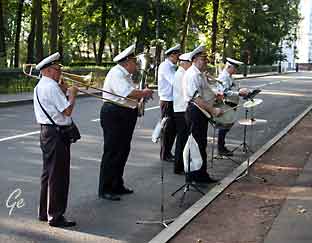 Musikere på veien opp mot palasset. Vi fikk et glimt av palasset også. |
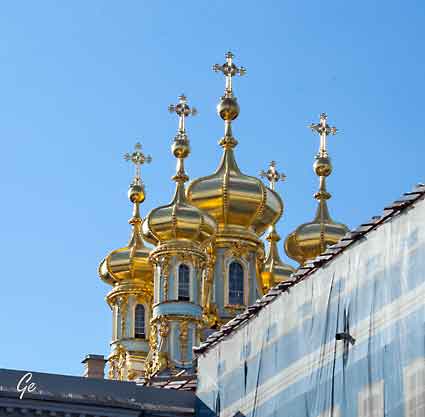 |
The Church of the Resurrection in the Catherine Palace.
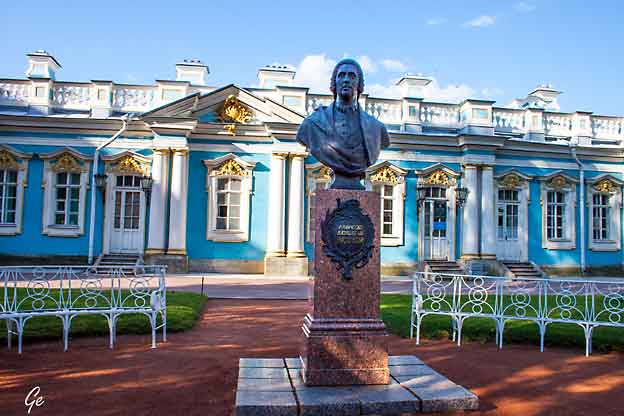
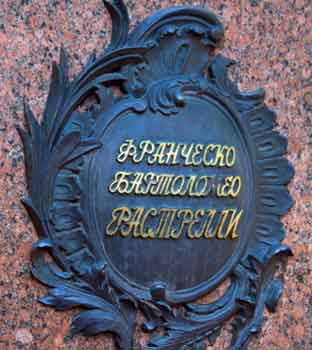 |
Vi var litt tidlig ute. Da vi kom til Palasset var det ca 20 minutter å vente til portene ble åpnet. Da var det greit å tilhøre en gruppe. Vi kunne gå litt rundt for å se oss om, mens andre passet plassen i køen. |
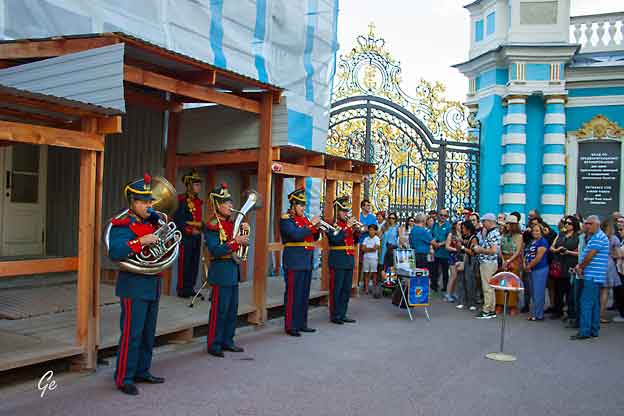
Musikere utenfor Katarina-palasset
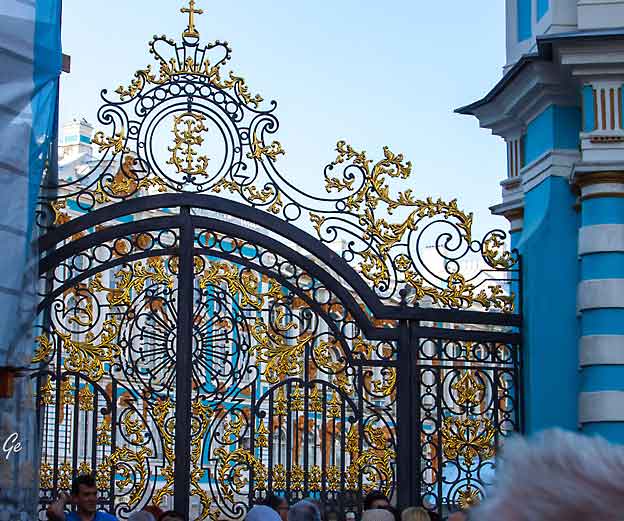
Snart åpnes porten.
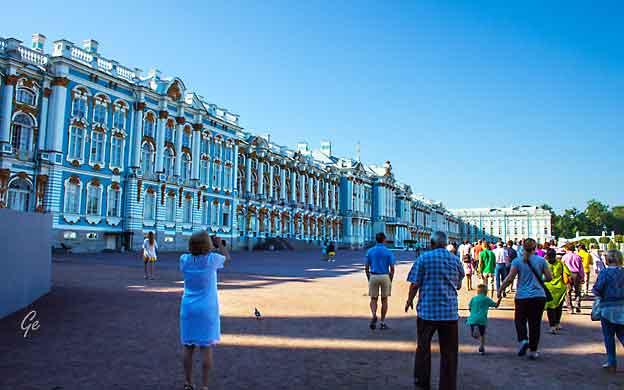
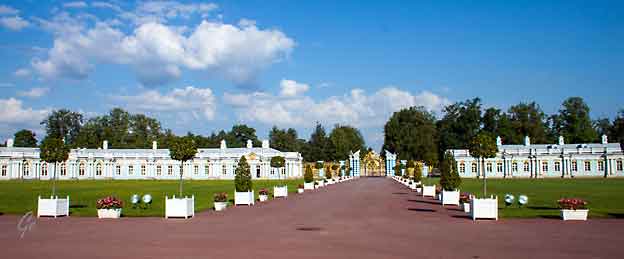
Vi er innenfor porten til palasset
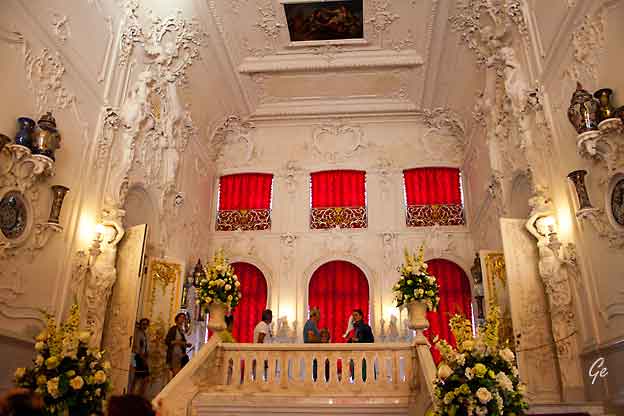
Her kom vi inn. Mektig inngang.
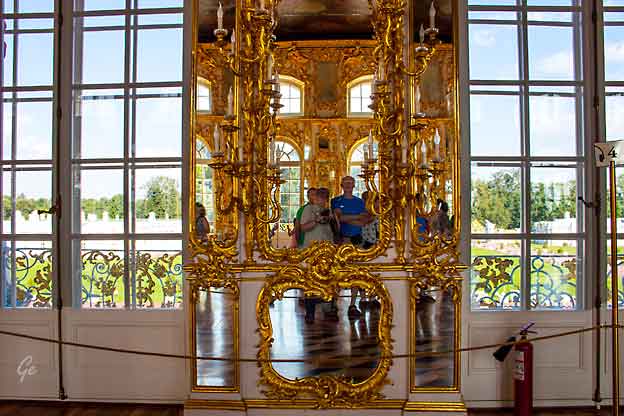
Keiserinne Elisabeth likte gull, mye gull.
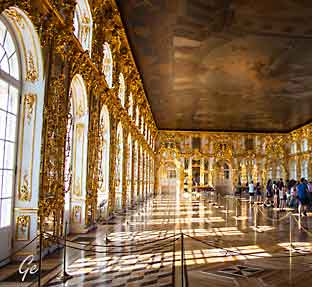 The Great Hall or the Light Gallery The Great Hall, also known as the Hall of Light, measures nearly 1,000 square meters, and occupies the full width of the palace so that there are superb views on either side. The large arched windows provide enough light to relieve the vast quantity of gilded stucco decorating the walls, and the entire ceiling is covered by a monumental fresco entitled The Triumph of Russia. |
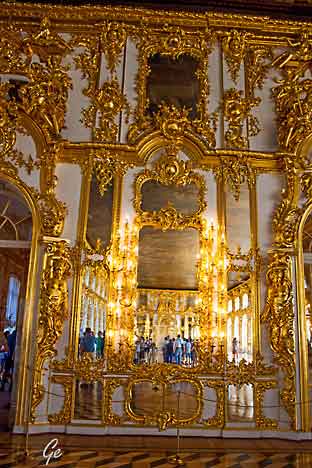 Catherine Palace, Tsarskoe Selo, St. Petersburg (saint-petersburg.com) 3. mars 2020 |
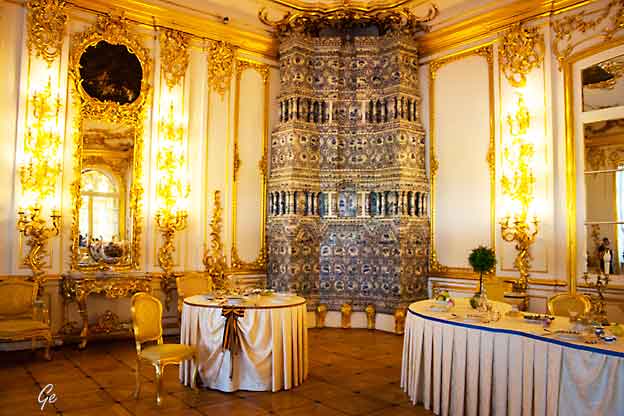
The first room beyond the Great Hall is the Chevalier Dining Room.
---------------------------------------------------------------------------------------------
More than 100 kilograms of gold were used to gild the sophisticated stucco
façade and numerous statues erected on the roof.
In front of the palace a great formal garden was laid out. It centres on the
azure-and-white Hermitage Pavilion near the lake, designed by Mikhail
Zemtsov in 1744, remodelled by Francesco Bartolomeo Rastrelli in 1749
and formerly crowned by a grand-gilded sculpture representing The
Rape of Persephone.
https://en.wikipedia.org/wiki/Catherine_Palace
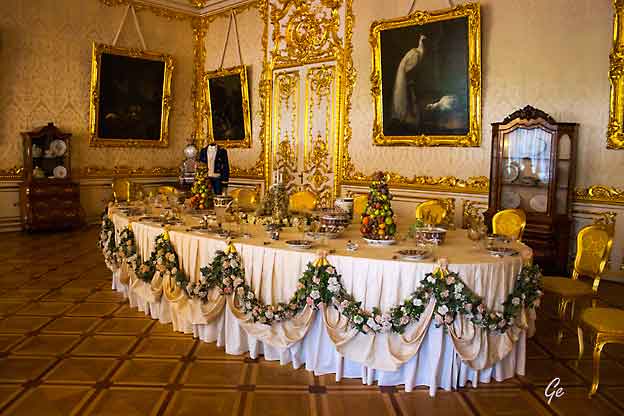
the White State Dining Room by Rastrelli
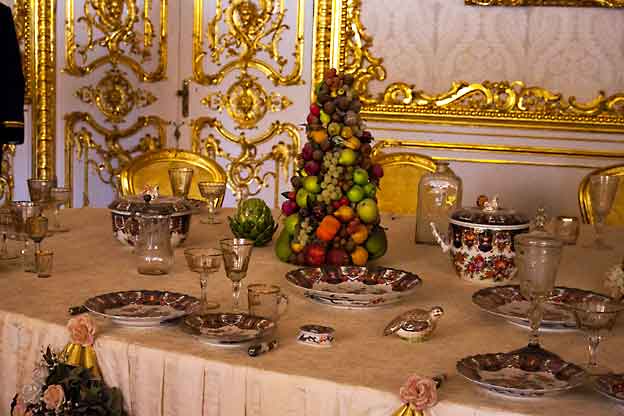
the White State Dining Room by Rastrelli
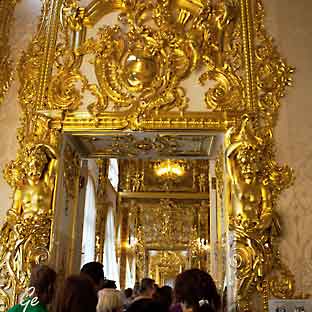 |
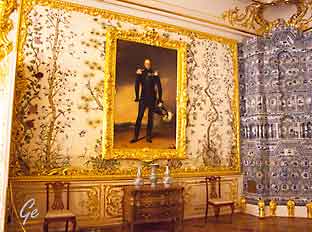 The Chinese Drawing Room, |
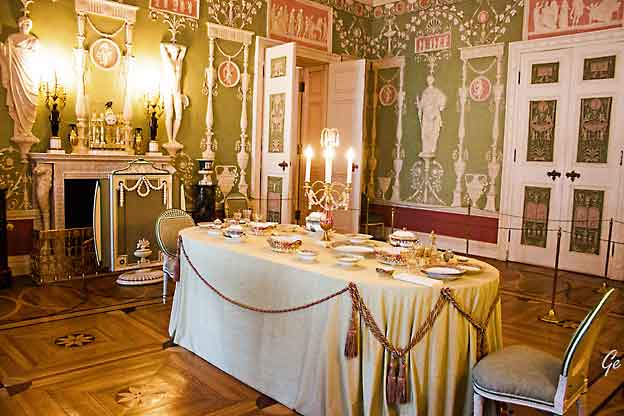
The Green Dining Room
is a reconstructed chamber decorated in amber panels backed with
gold leaf and mirrors, located in the Catherine Palace of Tsarskoye
Selo near Saint Petersburg. Constructed in the 18th century in
Prussia, the original Amber
Room was dismantled and eventually disappeared during World War II.
Before its loss, it was considered an "Eighth Wonder of the World".
A reconstruction was installed in the Catherine Palace between 1979 and
2003.
The Amber Room was intended in 1701 for the Charlottenburg
Palace, in Berlin, Prussia, but was eventually installed at the Berlin City
Palace. It was designed by German baroque sculptor Andreas Schlüter
and Danishamber craftsman Gottfried Wolfram. Schlüter and Wolfram
worked on the room until 1707, when work was continued by amber
masters Gottfried Turau and Ernst Schacht from Danzig (Gdańsk).
 |
Rav-rommet
var det eneste rommet vi ikke fikk lov til å ta bilder. Dette er fra: https://en.wikipedia.org/ wiki/Amber_Room |
Frederick William I to his then ally, Tsar Peter the Great of the Russian Empire.
In Russia, the room was expanded, and after several renovations, it
covered more than 55 square metres (590 sq ft) and contained over
6 tonnes (13,000 lb) of amber.
https://en.wikipedia.org/wiki/Amber_Room
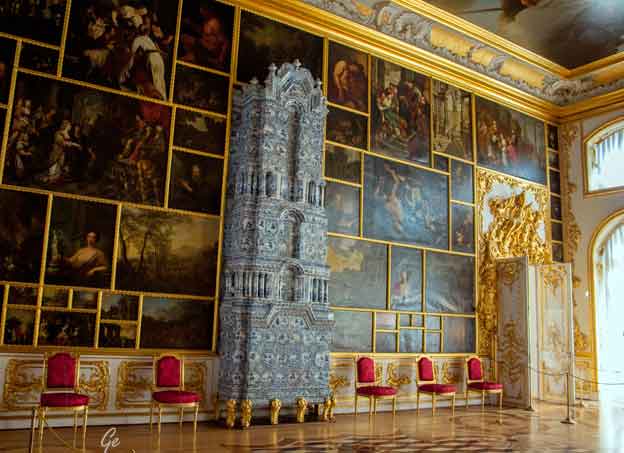
The Picture Hall
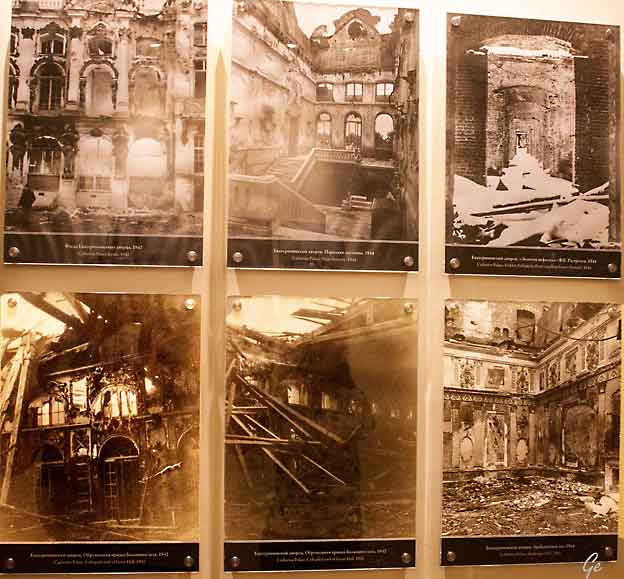
When the German forces retreated after the siege of Leningrad, they
intentionally destroyed the residence. leaving only the hollow shell of the palace behind. Prior to World War II, Soviet archivists managed to document a fair
amount of the interior, which proved of great importance in reconstructing
the palace.Although the largest part of the reconstruction was completed in
time for the Tercentenary of St. Petersburg in 2003, much work is still
required to restore the palace to its former glory.
https://en.wikipedia.org/wiki/Catherine_Palace
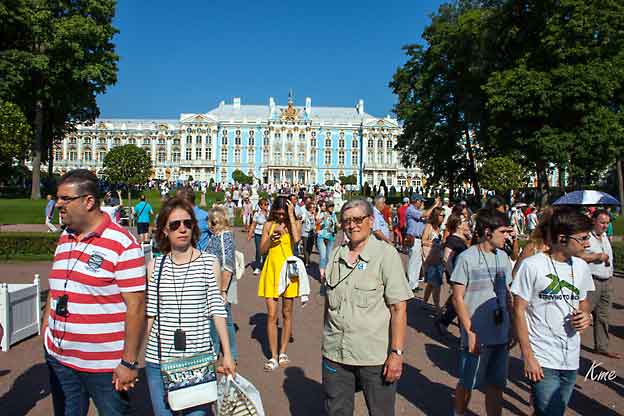
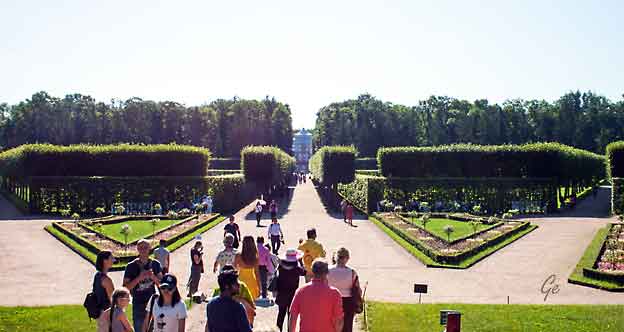
Etter å ha vandret gjennom slottet,
gikk vi gjennom den store parken utenfor.
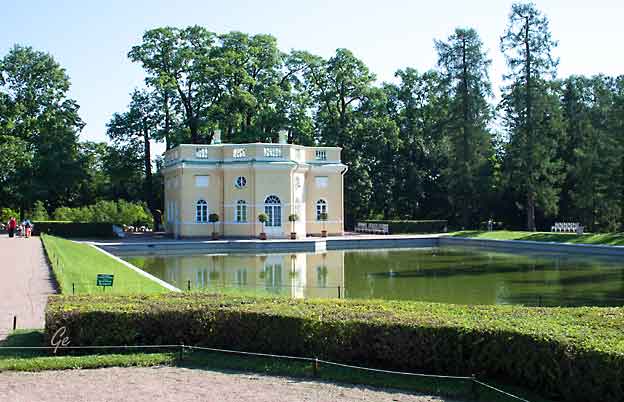
Katarinaparken
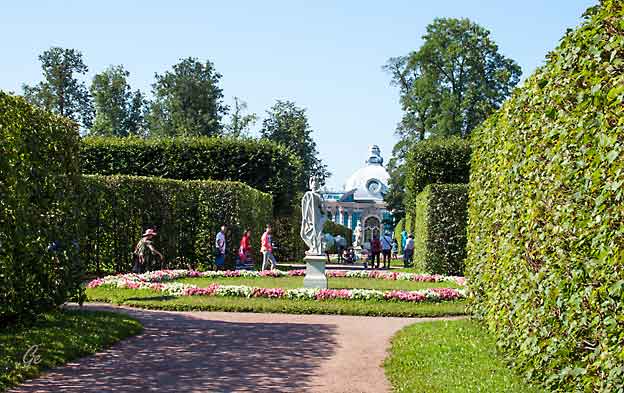
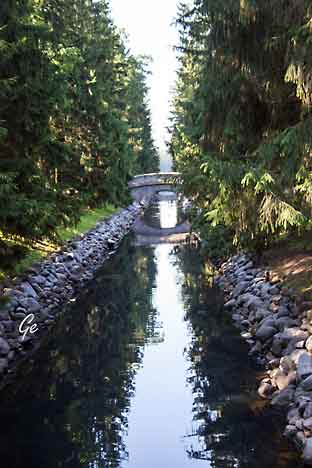 Kanal i Catherine-parken |
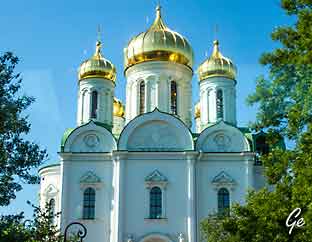 St. Catherine's Cathedral in Tsarskoe Selo - Sister Church to Christ the Savior in Moscow |
Fra Cathrine-slottet kjørte vi til Peterhof Park
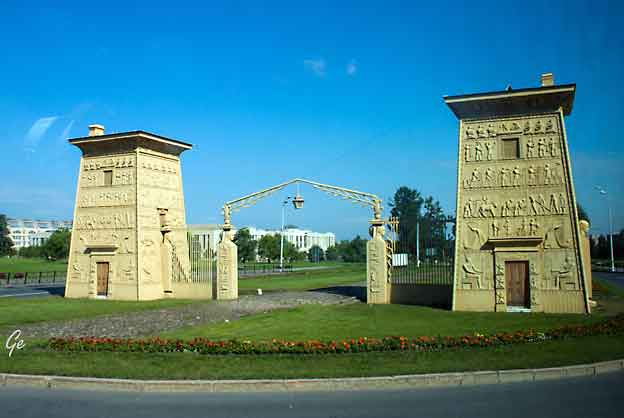
The Egyptian Gate of Tsarskoye Selo was built in 1829 to replace the old
toll-bar, which had been made redundant by the expansion of Tsarskoe Selo.
The gate, which resembles the Egyptian revival style, was designed by Adam Menelaws, who was inspired by the Temple of Khonsu gates. The hieroglyphics
were modeled by the professor Demut-Malinovsky. The iron gate and the cast
iron columns and plates, covered with hieroglyphics, were cast in St. Petersburg
at the Alexander Iron Works. The Alexander Park extended to this gate until
1895, when part of it was used for the building of barracks.
https://en.wikipedia.org/wiki/Egyptian_Gate_of_Tsarskoye_Selo
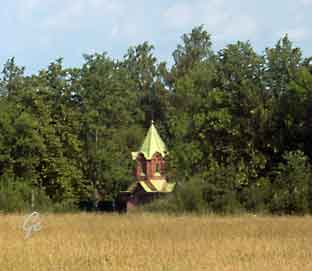 |
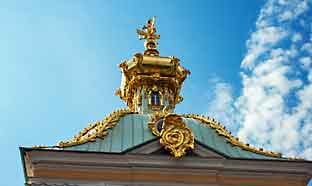 |
Court) is a series of palaces and gardens located in Petergof, Saint Petersburg,
Russia, laid out on the orders of Peter the Great.
These palacesand gardens are sometimes referred as the "Russian Versailles".
The palace-ensemble along with the city center is recognized as a UNESCO World Heritage Site
https://en.wikipedia.org/wiki/Peterhof_Palace
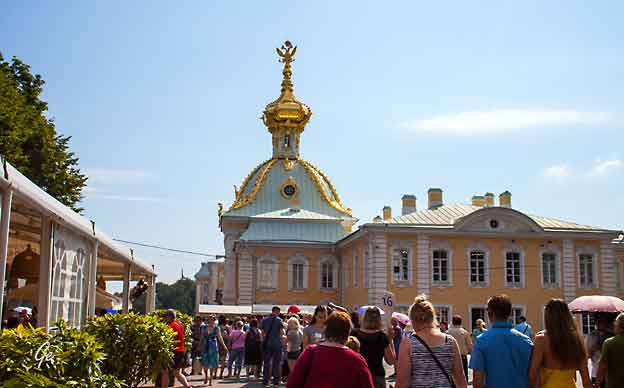
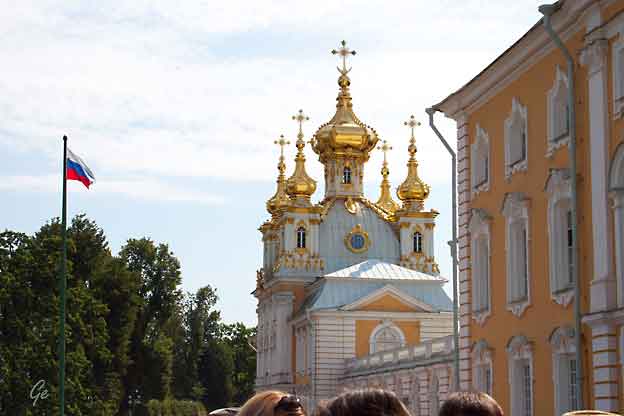
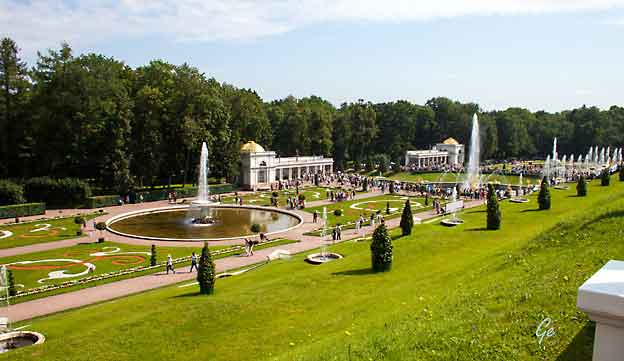
The expanse of the Lower Gardens is designed in the formal style of French
formal gardens of the 17th century. Although many trees are overgrown, in the
recent years the formal clipping along the many allees has resumed in order to
restore the original appearance of the garden. The many fountains located here exhibit an unusual degree of creativity. One of the most notable designs is entitled
'The Sun'. A disk radiating water jets from its edge creates an image of the sun's
rays, and the whole structure rotates about a vertical axis so that the direction in which the "sun" faces is constantly changing.
https://en.wikipedia.org/wiki/Peterhof_Palace
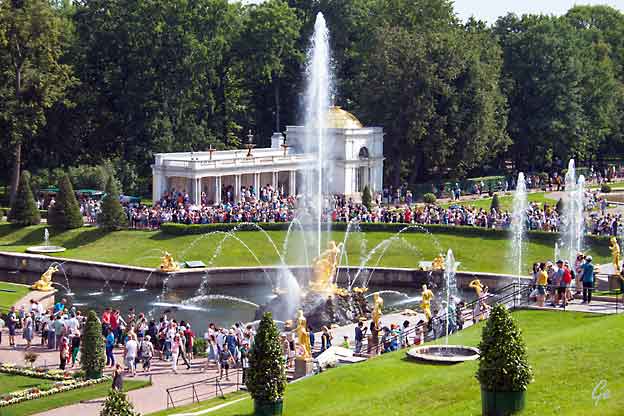
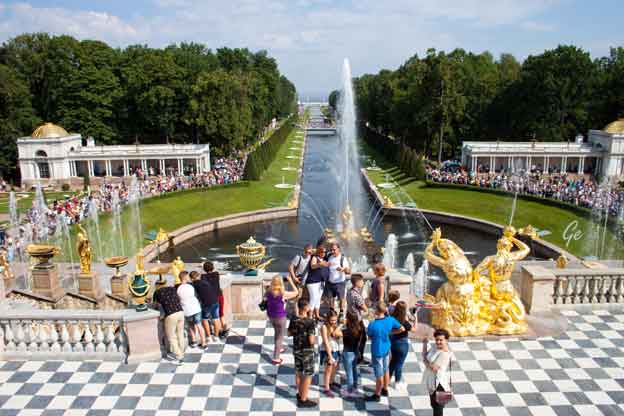
The Canal runs from the Palace all the way to the Gulf of Finland
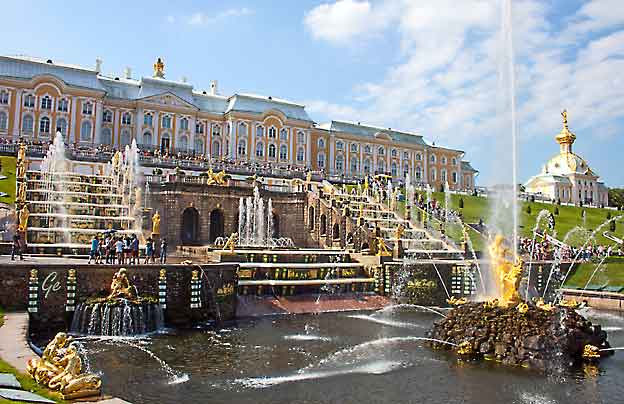
Grand Peterhof Palace and the Grand Cascade.
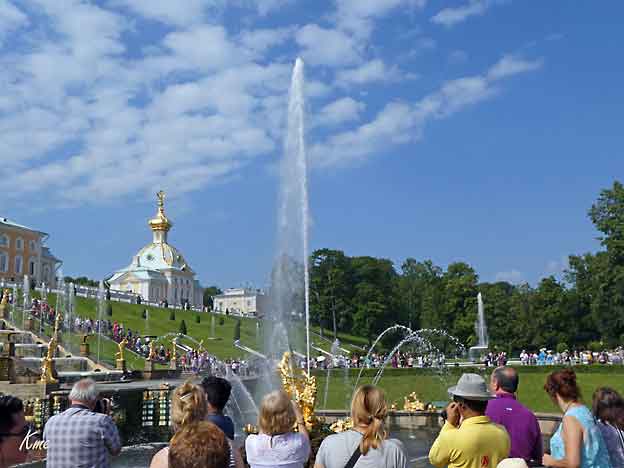
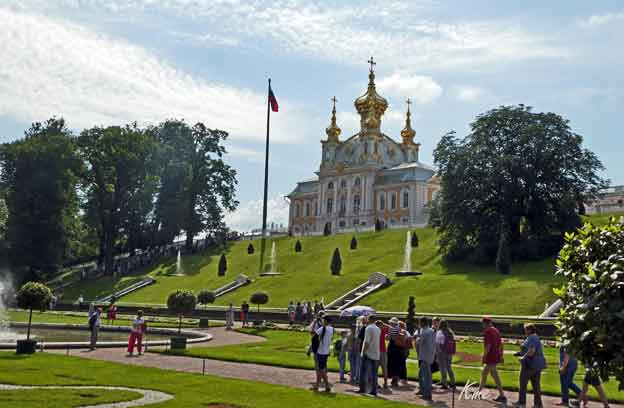
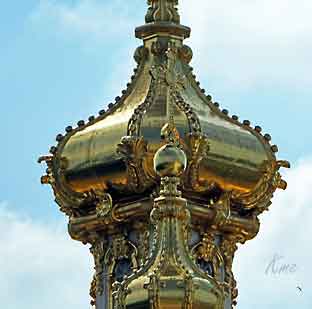 |
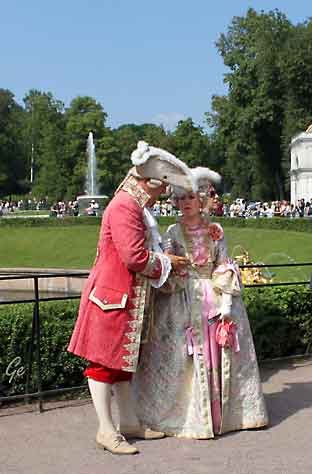 |
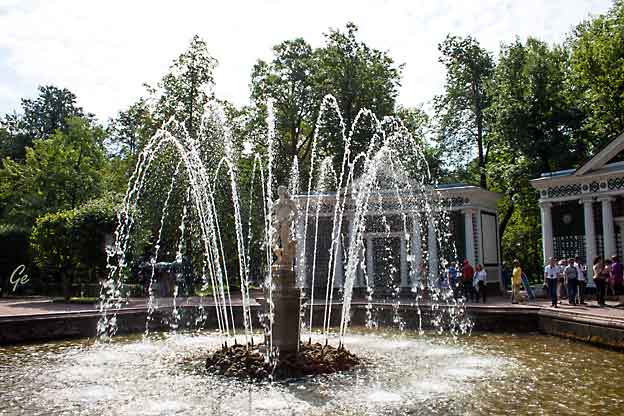
Adams Fountain
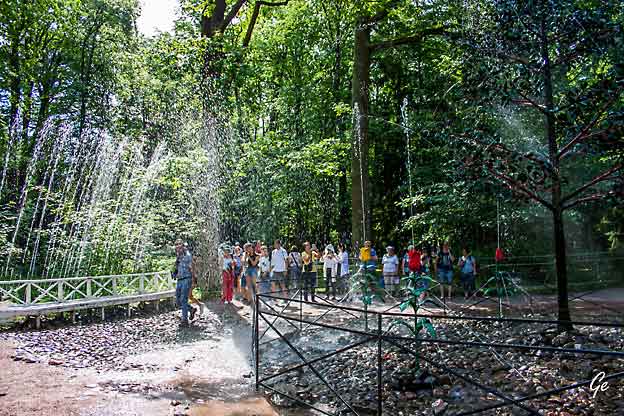
Her kommer det regnskurer hele tiden. Deilig på en varm dag.
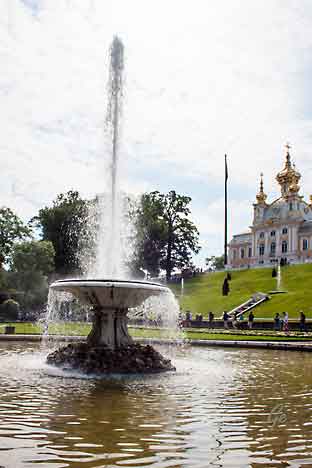 |
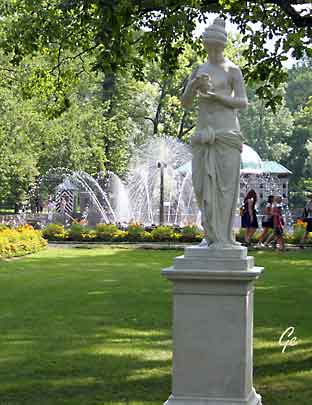 |
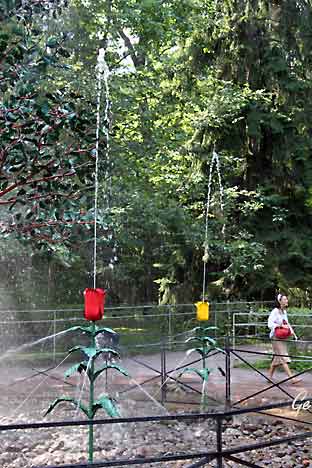 |
Tulipanfontenen |
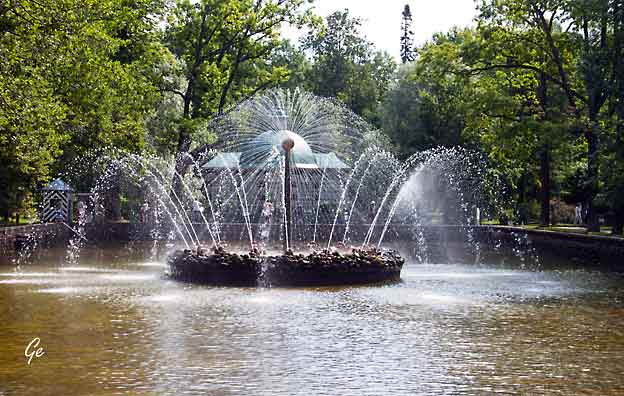
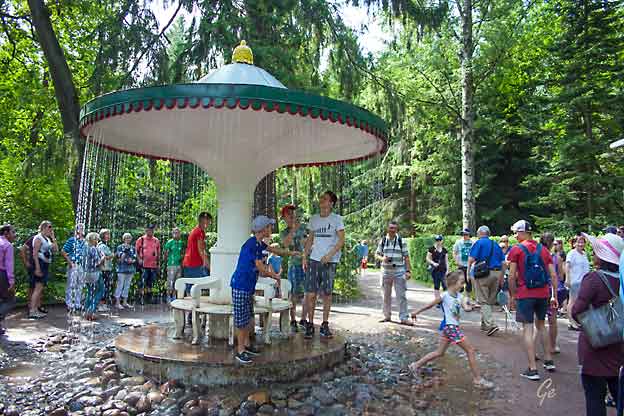
Umbrella Fountain
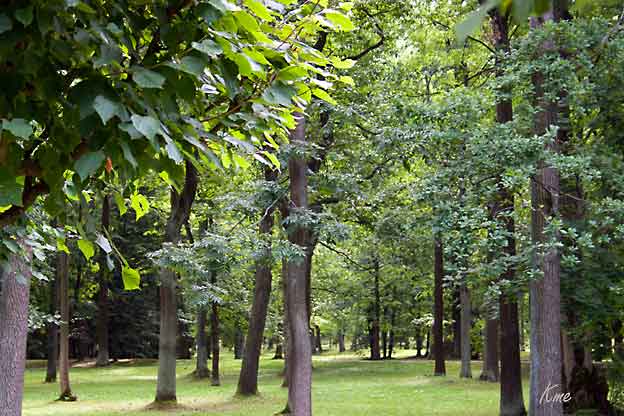
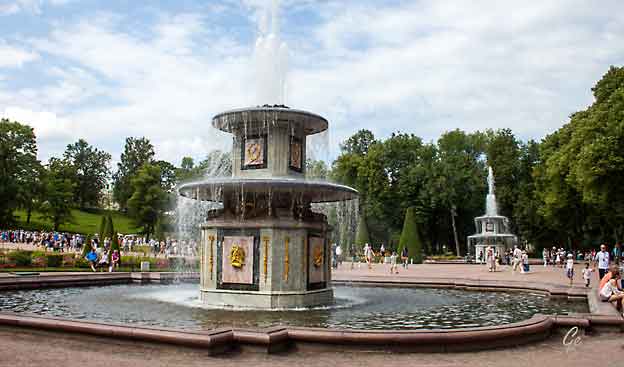
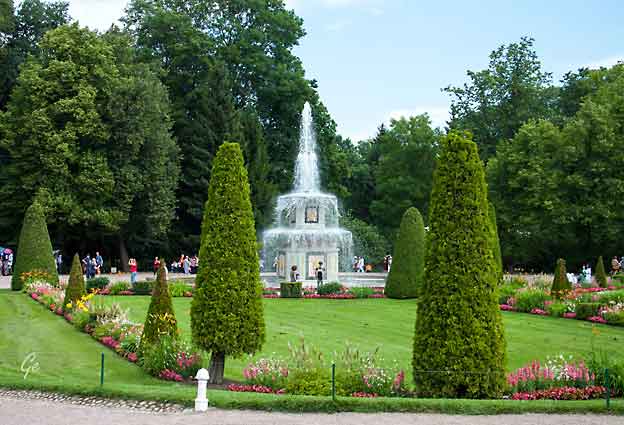
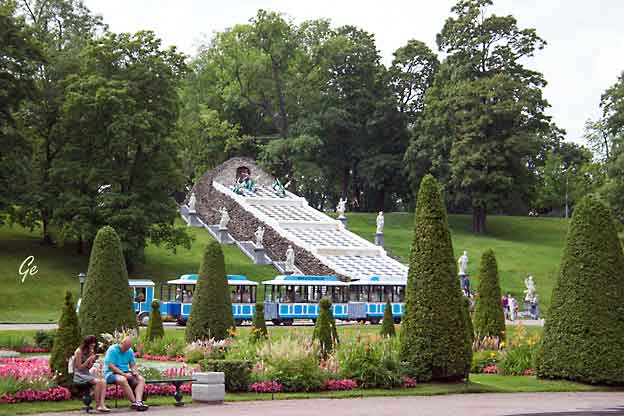
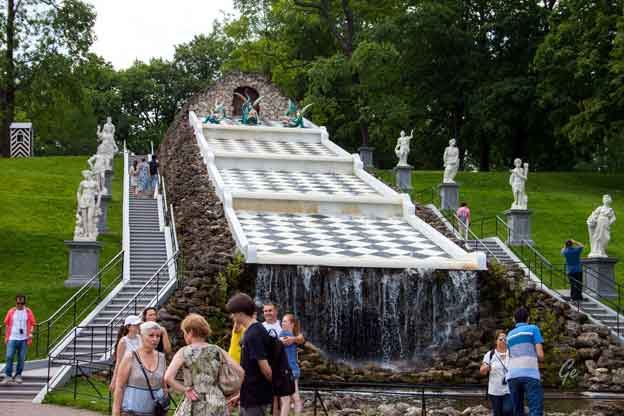
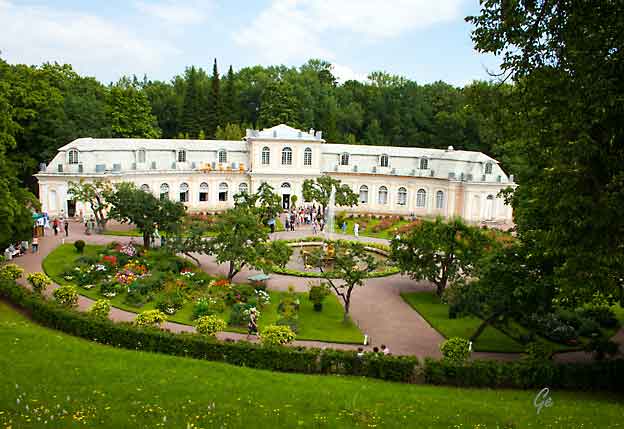
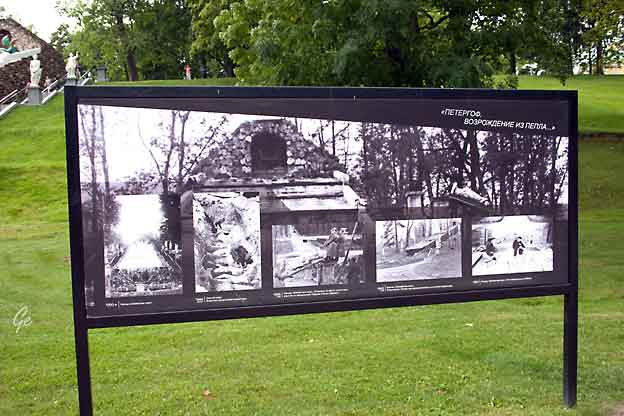
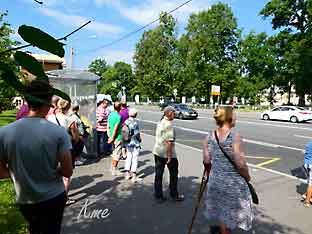 |
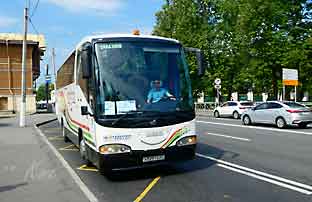 |
Det er lunsjtid, og vi venter på bussen som skal ta oss til restauranten.
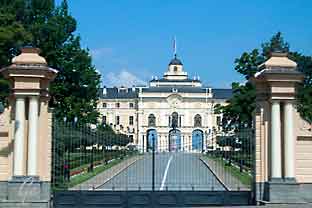 Et slott brukt ved statsbesøk. Til høyre en del av dagens lunsj |
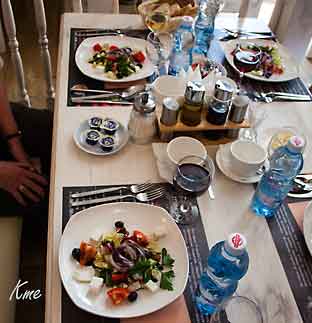 |
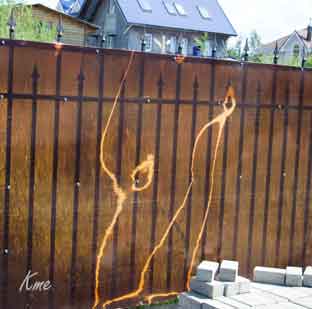 |
Lek
med lys |
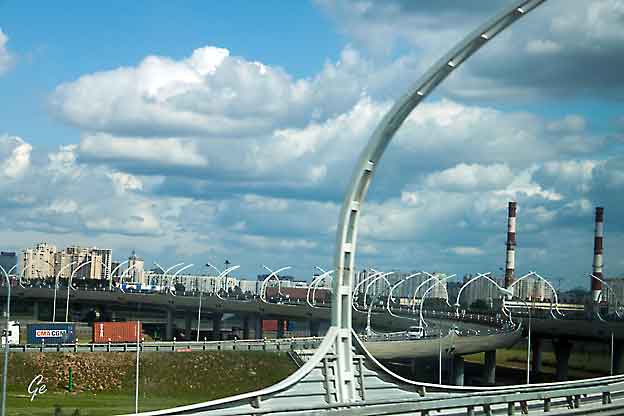
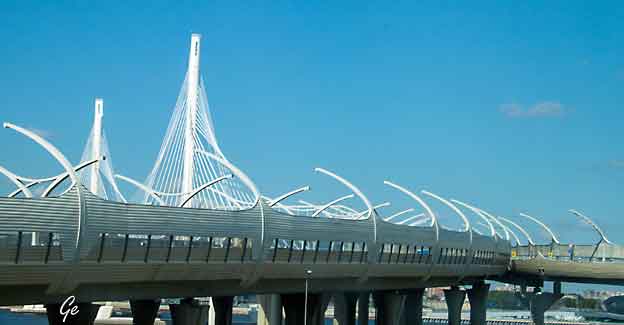
Motorvei ved St. Petersburg
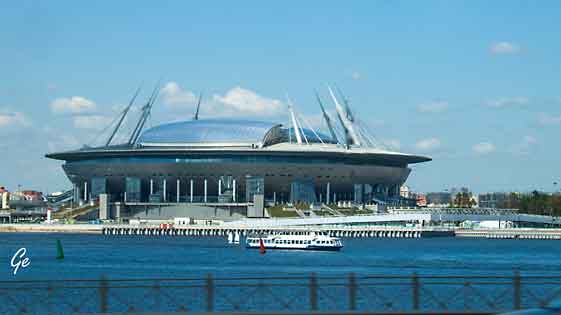
Fotballstadion bygget til VM 2018
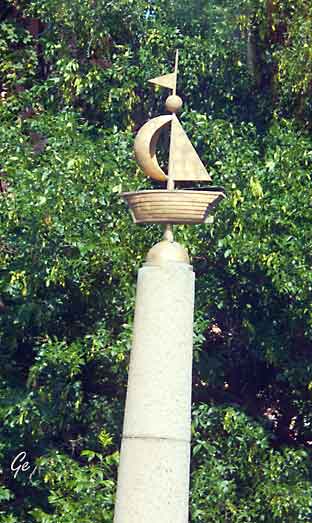 |
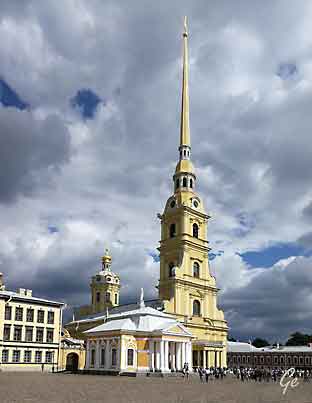 |
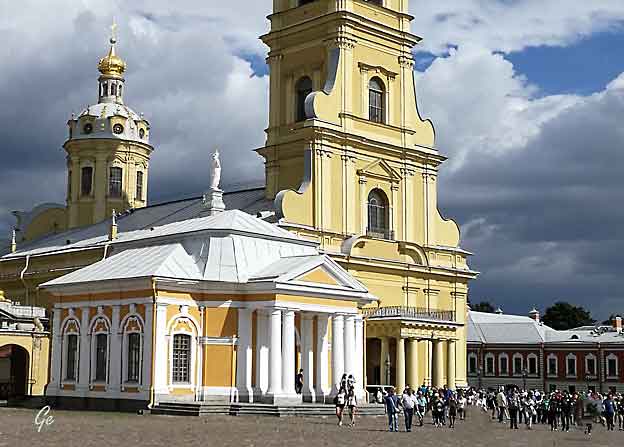
The Boathouse
An attractive pavilion situated to the west of the Ss. Peter and Paul Cathedral,
the Boathouse was built by architect Alexander Vist 1762-1765 in a style that
marked the transition from baroque to neoclassicism.
The pavilion was built to house Peter the Great's Dinghy, a small sailboat that
had been used by the young Tsar to learn naval principles on lakes in the
Moscow area, and thus was hailed as the "Grandfather of the Russian Navy".
Kept in the pavilion from 1767 to 1931, its place has now been taken by a scale
replica. The Boathouse is also used as a ticket office for the exhibitions and
museums in the fortress.
http://www.saint-petersburg.com/museums/peter-paul-fortress/boathouse/
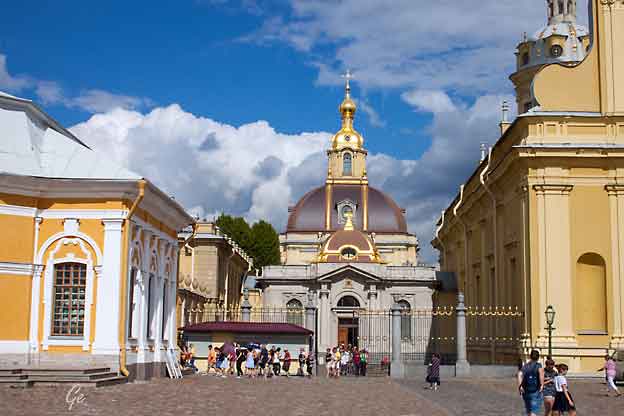
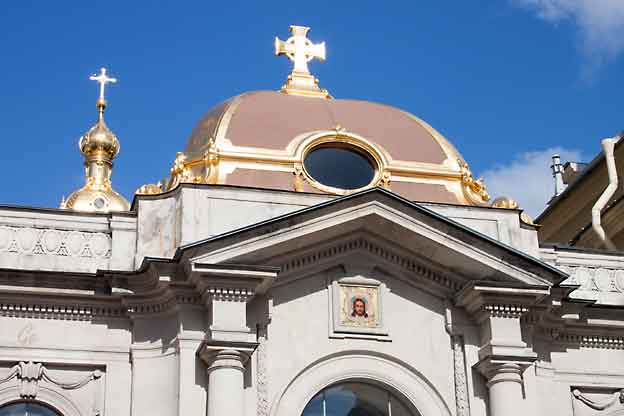
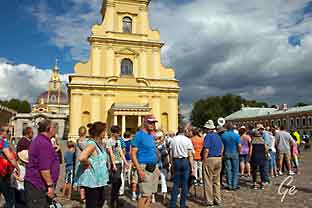 The Peter and Paul Cathedral (Russian: Петропавловский собор) is a Russian Orthodox cathedral located inside the Peter and Paul Fortress in St. Petersburg, Russia. It is the first and oldest landmark in St. Petersburg, built between 1712 and 1733 |
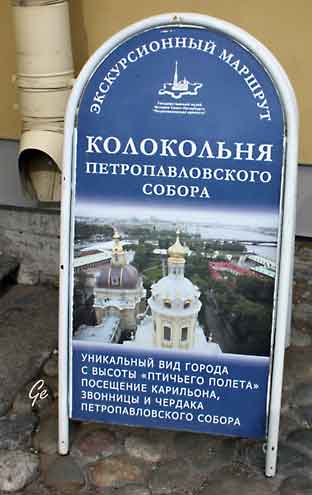 |
fortress were originally built under Peter the Great and designed by
Domenico Trezzini. The cathedral's bell tower is the world's tallest
Orthodox bell tower.
Since the belfry is not standalone, but an integral part of the main building,
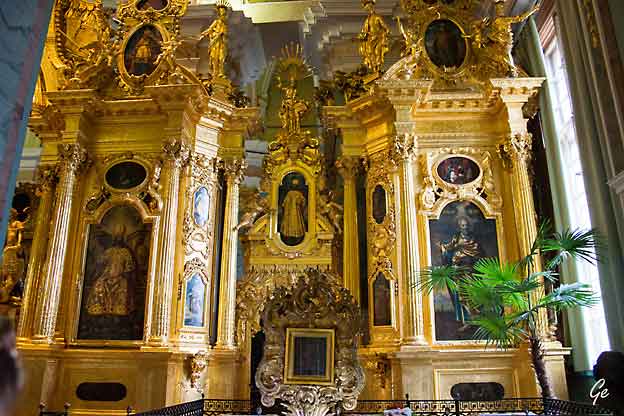
the cathedral is sometimes considered the highest Orthodox Church in the
world. There is another Cathedral of Saints Peter and Paul Church in
St. Petersburg, located in Petergof.
https://en.wikipedia.org/wiki/Saints_Peter_and_Paul_Cathedral,_Saint_Petersburg
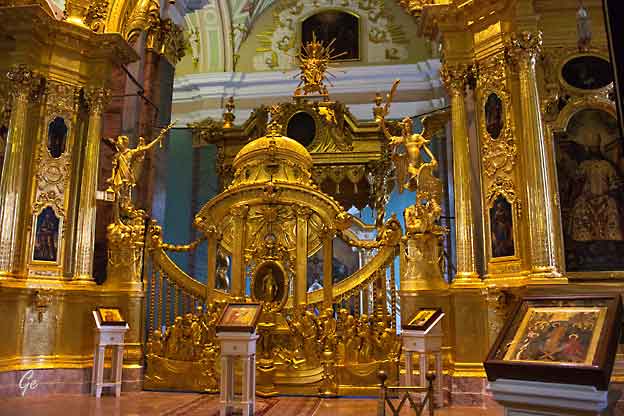
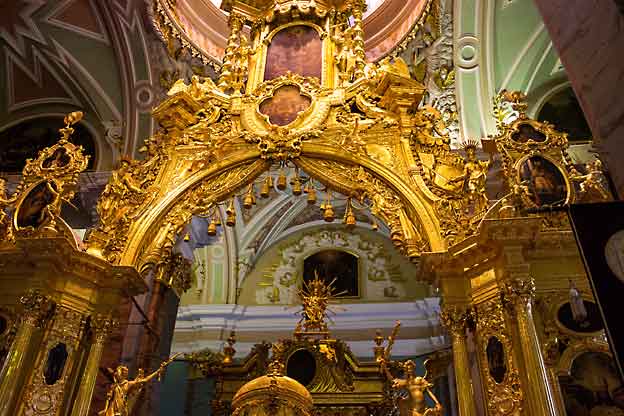
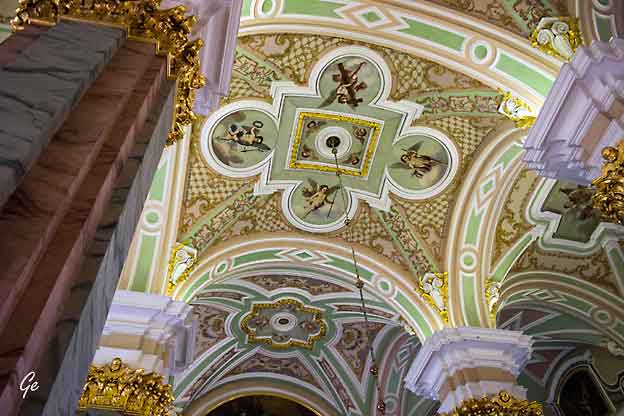
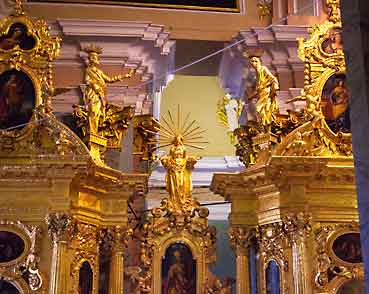 |
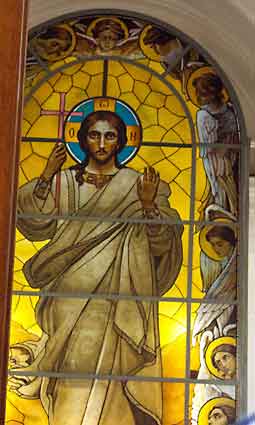 |
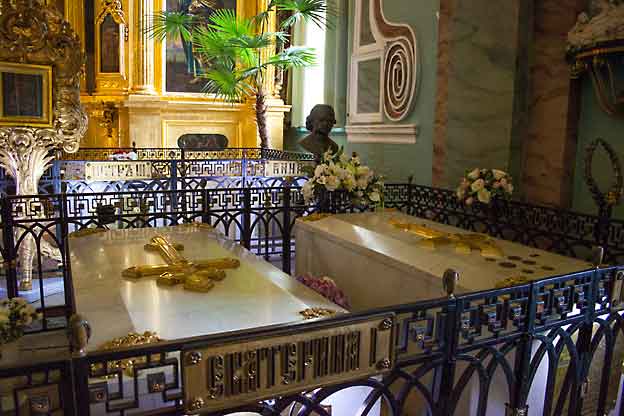
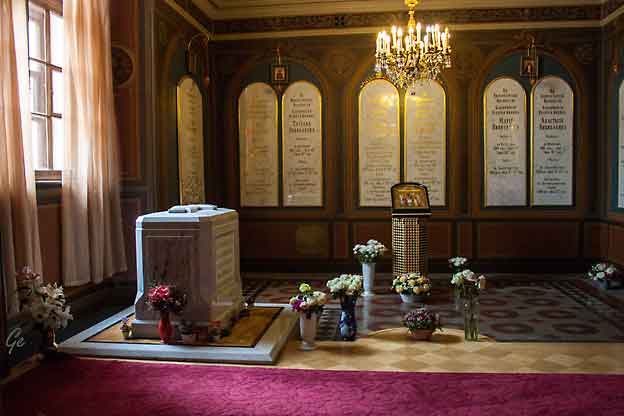
empresses from Peter the Great to Nicholas II and his family, who were
finally laid to rest in July 1998. Among the emperors and empresses buried
here was Catherine the Great, Empress of Russia for 34 years.
Of the post-Petrine rulers, only Peter II and Ivan VI are not buried here.
Peter II is buried in the Cathedral of Michael the Archangel in the
Moscow Kremlin; Ivan VI was executed and buried in the
fortress of Shlisselburg or Kholmogory (alleged discovery at
Kholmogory in 2010 currently under forensic investigation).
Empress of Russia, was reinterred in the Cathedral of St Peter and Paul.
Wife of Tsar Alexander III, and mother of Nicholas II (the last Russian tsar),
Maria Feodorovna died on 13 October 1928 in exile in her native Denmark
and was buried in Roskilde Cathedral in Denmark. In 2005, the
governments of Denmark and Russia agreed that the empress's
remains should be returned to Saint Petersburg in accordance with her
wish to be interred next to her husband.
https://en.wikipedia.org/wiki/Saints_Peter_and_Paul_Cathedral,_Saint_Petersburg
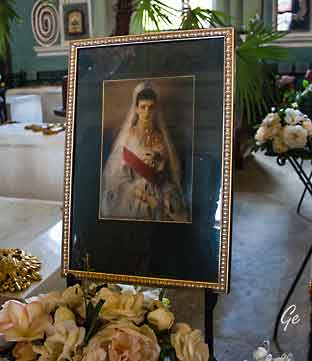 Maria Feodorovna (26 November 1847 – 13 October 1928), known before her marriage as Princess Dagmar of Denmark, was a Danish princess and Empress of Russia as spouse of Emperor Alexander III (reigned 1881–1894). She was the second daughter of King Christian IX of Denmark |
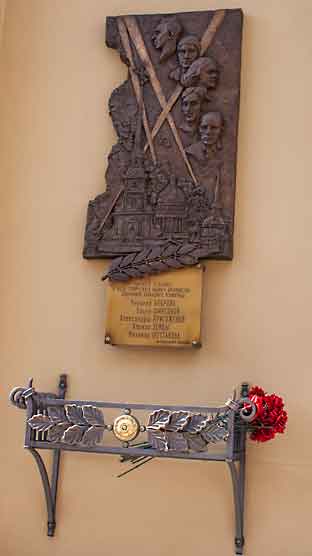 |
the United Kingdom, King Frederick VIII of Denmark and King George I of
Greece. Her eldest son became the last Russian monarch,
Emperor Nicholas II of Russia, whom she outlived by ten years.
https://en.wikipedia.org/wiki/Maria_Feodorovna_(Dagmar_of_Denmark)
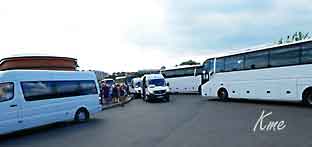 |
Tett
med turistbusser utenfor the Peter and Paul Fortress. |
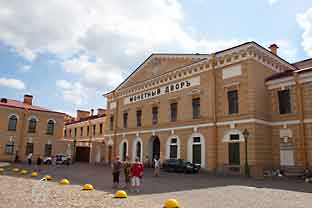 |
The Peter
and Paul Fortress is the original citadel of St. Petersburg, Russia, founded by Peter the Great in 1703 and built to Domenico Trezzini's designs from 1706 to 1740 as a star fortress. In the early 1920s, it was still used as a prison and execution ground by the Bolshevik government. |
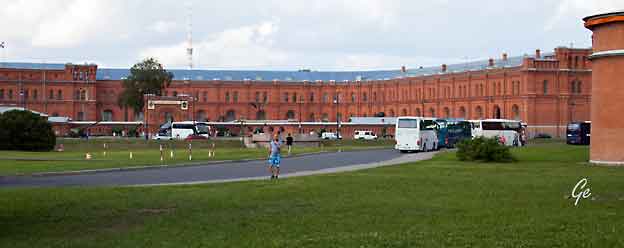
Today it has been adapted as the central and most important part of the
State Museum of Saint Petersburg History. The museum has gradually
become virtually the sole owner of the fortress building, except the
structure occupied by the Saint Petersburg Mint (Monetniy Dvor).
https://en.wikipedia.org/wiki/Peter_and_Paul_Fortres
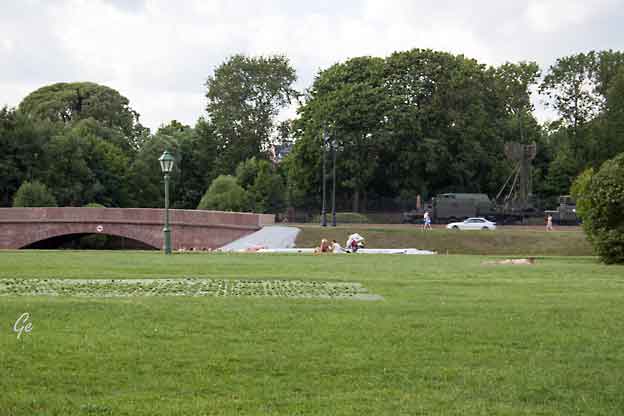
Noen slapper av i gresset utenfor festningen.
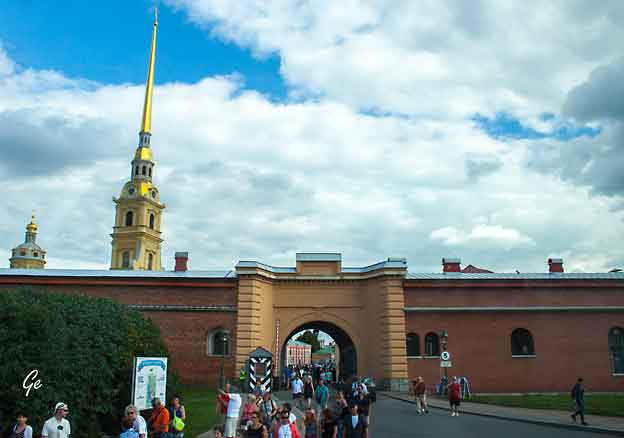
Inngangen til The Peter and Paul Fortress.
Tårnet til Peter and Paul Cathedral er godt synlig.
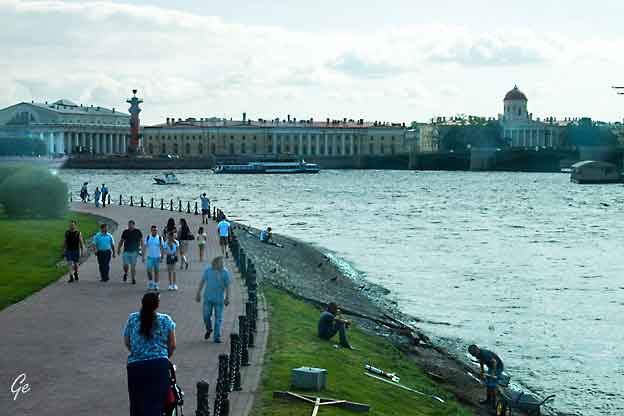
På tur langs Nevas bredder.

Så nærmer det seg slutten på besøket vårt i St Petersburg.
Vi er på vei tilbake til cruiseterminalen.
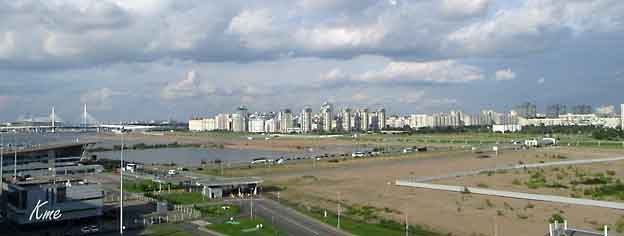
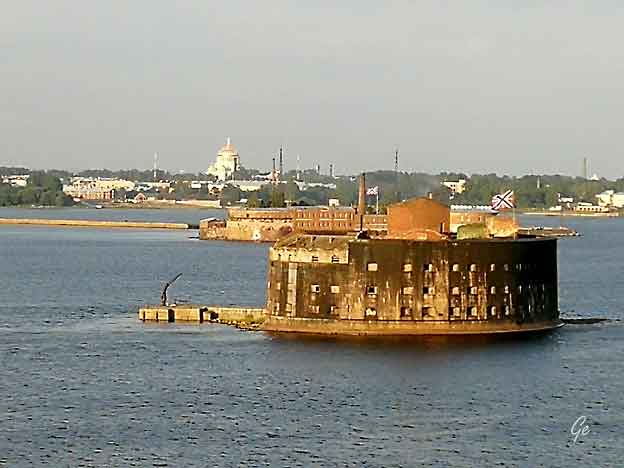
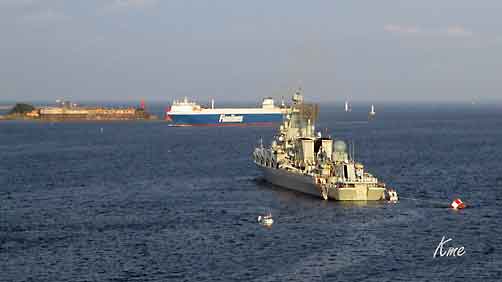
Kotlin (or Kettle, Finnish: Retusaari, Swedish: Reitskär) is a Russian
island, located near the head of the Gulf of Finland, 32 kilometres
(20 mi) west of Saint Petersburg in the Baltic Sea. Kotlin separates
the Neva Bay from the rest of the gulf. The fortified town of Kronstadt
is located on the island. The island serves as a gateway to
Saint Petersburg and as such has been the site of several military
engagements.
https://en.wikipedia.org/wiki/Kotlin_Island
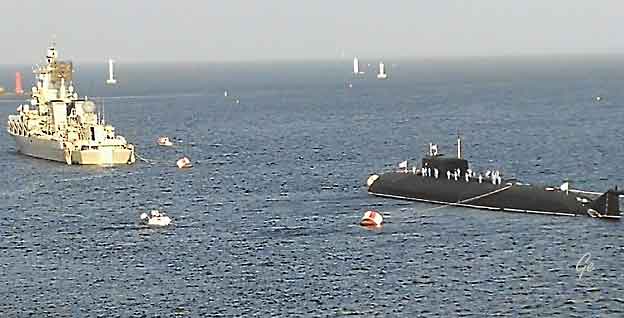
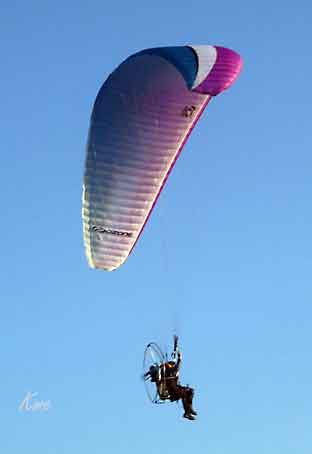 |
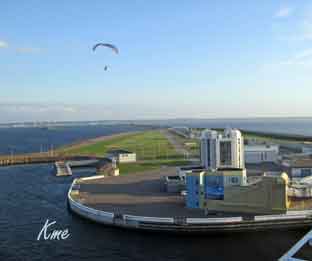 |
fortress and naval base on Kotlin Island. The name "Kronstadt" was
invented by Peter the Great, and in German means "Crown City".
The port is ice-bound for 140–160 days in the year, from the beginning of
December to April. A very large proportion of the inhabitants are sailors.
The Kronstadt Sea Fortress used to be considered the most fortified port
in the world. Kronstadt still retains some of the "forts", small fortified
artificial islands. Others were destroyed or recycled during the
construction of the Saint Petersburg Flood Prevention Facility Complex,
a brand new dam of protective structures, which connects the island to
the shore and is part of the federal city's Ring Road.
and northern shores of the Gulf of Finland. Some fortifications were
located inside the city itself, and one was on the western shore of the K
ronslot Island (on the other side of the main navigational channel).
Until 1998, Kronstadt was a closed city, from then
on it became a touristic
attraction with free access to its territory. The
exception is Kronstadt
military harbor, and the territories of various
military units stationed in
the city and surrounding area. The architecture of
the city center and city
walls mostly dates from the first half of the 19th
century.
In the 1970s and 80s, modern neighborhoods
were built on the outskirts
of the city.
https://en.wikivoyage.org/wiki/Kronstadt
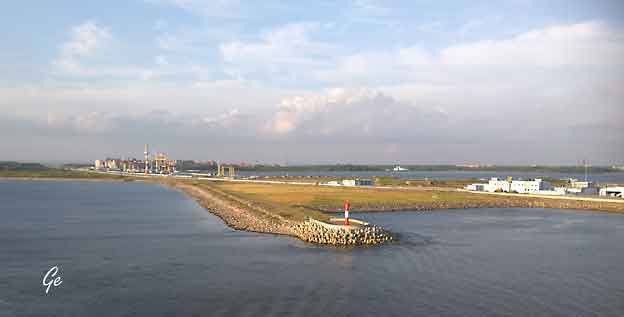
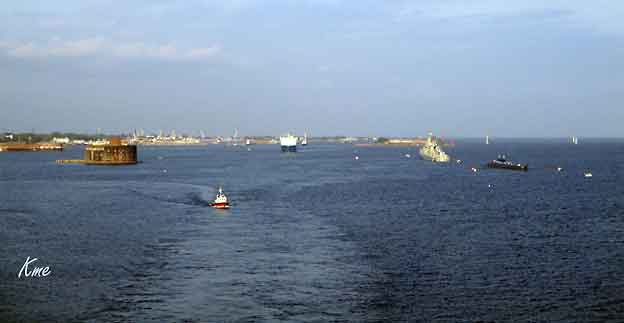
 |
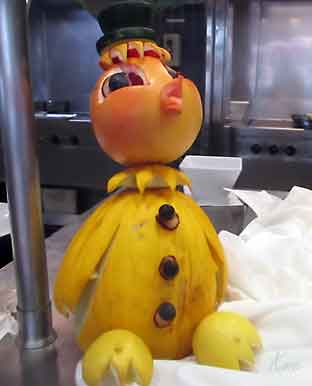 |
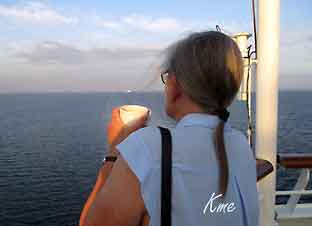 |
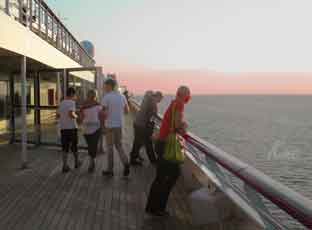 |
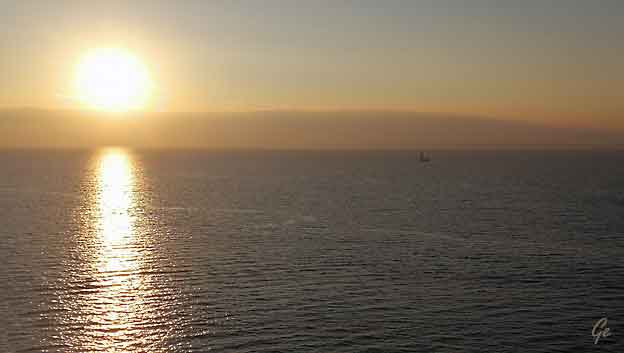
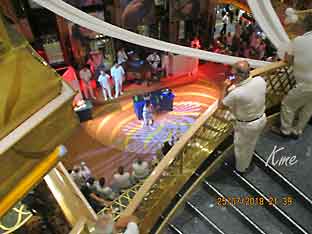 |
Underholdning
på Atria Italia Magica |
Vi ankom Tallinn kl 09 00.
Etter frokost tok vi shuttlebuss inn til gamlebyen.
Det var ikke mer enn et par km å gå inn til byen, men det er lett å gå litt
feil når man ikke er kjent.
Tallinn (tidligere også Reval, gammelsvensk: Lindanäs, gammeldansk:
Lyndanisse) er hovedstaden og den største havnebyen i Estland.Byen har 441 357 innbyggere (1. august 2016) og ligger helt nord på den baltiske halvøy, 80 km sør for Helsingfors.
Den ble erobret av danskene i 1219 og solgt til Den tyske orden i 1346. Byen ble erobret av svenskene under Livlandskrigen i 1561 og var under svensk kontroll til svenskene tapte sine besittelser i Baltikum til Russland i 1710 under den store nordiske krig. Den var hovedstad i det selvstendige Estland fra 1918 frem til den sovjetiske okkupasjonen under og etter andre verdenskrig og ble hovedstad på ny
etter Estlands selvstendighet i 1991. Byen har norsk ambassade.Tallinn er en av
Nord-Europas best bevarte middelalderbyer. Byens gamleby, Vanalinn, ble oppført på UNESCOs verdensarvliste i 1997. I 2011 var Tallinn europeisk kulturhovedstad.
https://no.wikipedia.org/wiki/Tallinn
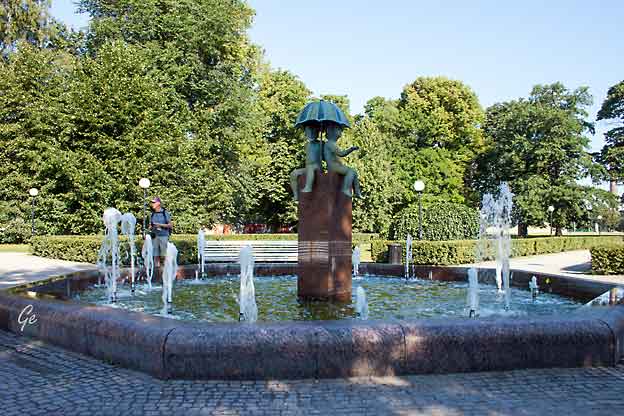
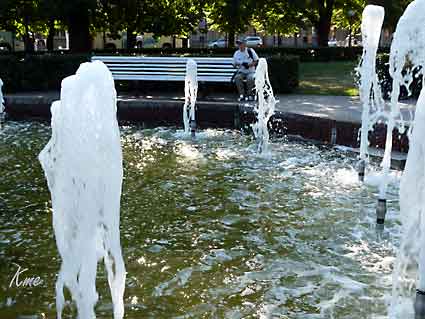 |
The fountain originally stood at a private house. In 1996 the fountain was placed in storage, and later the statue was stolen. A new cast of the sculpture was unveiled at the present location 15 May 2008. http://vanderkrogt.net/statues/object.php?webpage=ST&record=ee013 |
http://vanderkrogt.net/statues/object.php?webpage=ST&record=ee013
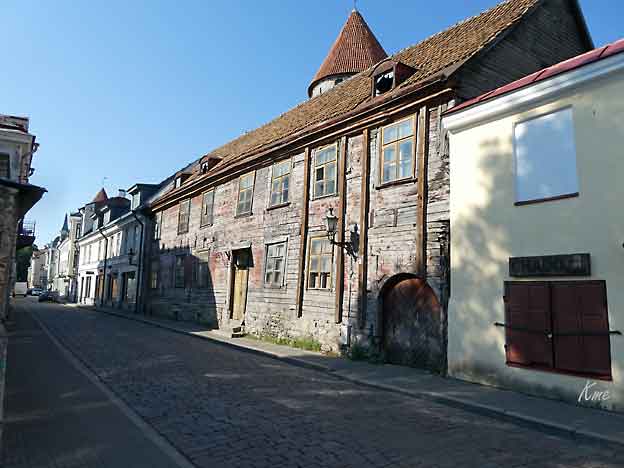
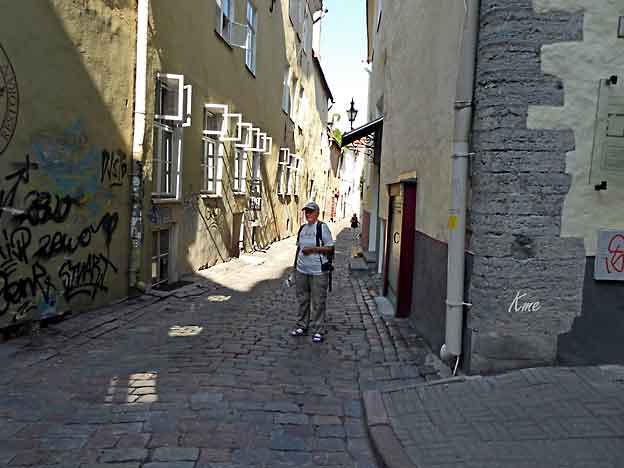
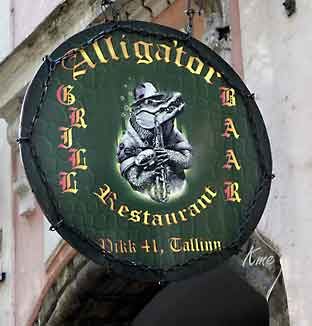 |
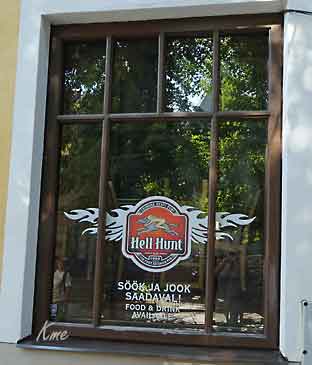 |
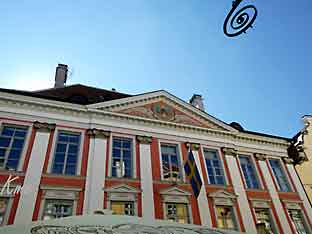 |
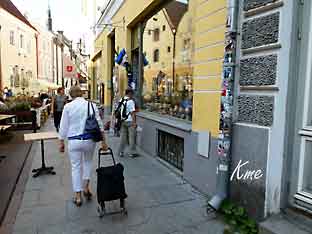 |
Man finner mange forskjellige stilarter i Tallinn.
Se:
https://www.visittallinn.ee/eng/visitor/discover/articles-guides/architecture-in-tallinn
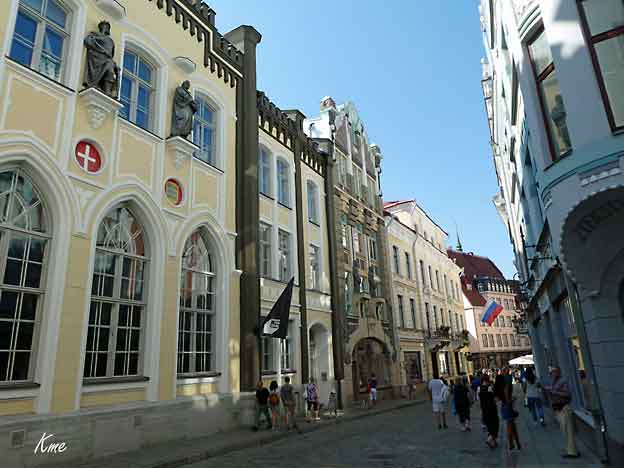
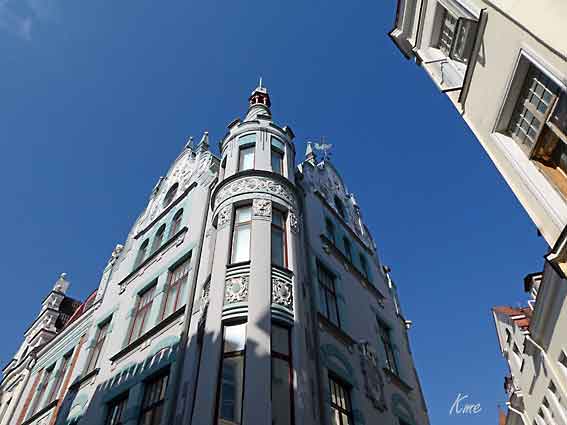
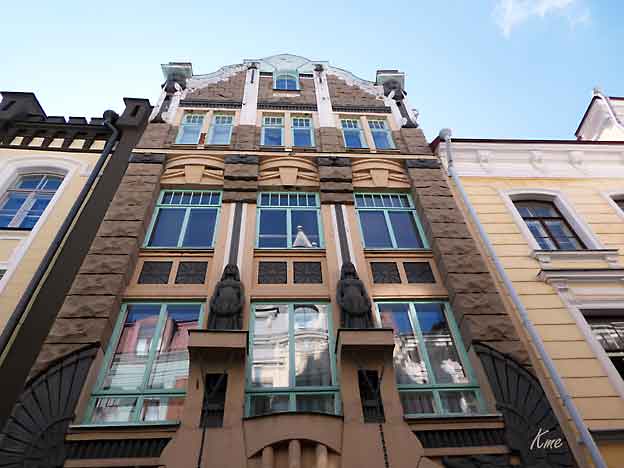
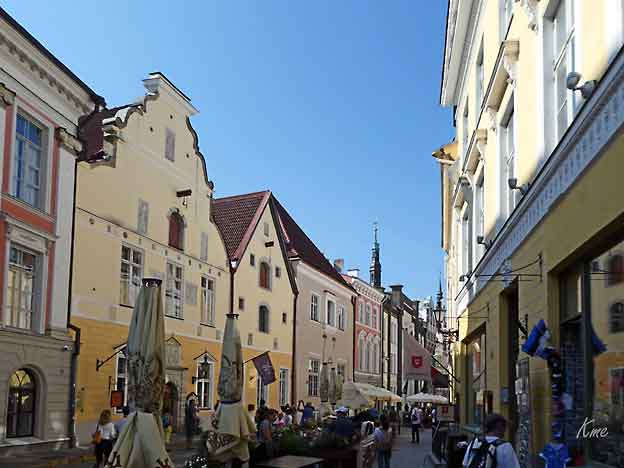
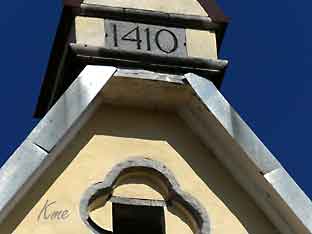 |
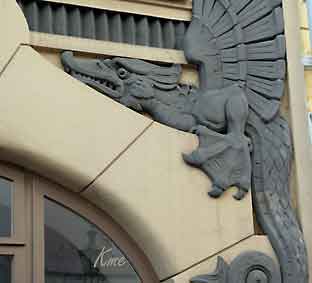 |
metres (121 ft) long. The west wall is 14.5 metres (48 ft) in length, and the east
is 15.2 metres (50 ft).[1] It is a two-storey building with a spacious basement.
It is the oldest town hall in the whole Baltic Sea region and Scandinavia.
The weather vane "Old Thomas" (Estonian: Vana Toomas) on the top of the town
hall's spire, that has been there since 1530, is one of the symbols of Tallinn. The
height of the tower is 64 metres.
Tallinn Town Hall - Wikipedia (29. oktober 2023)
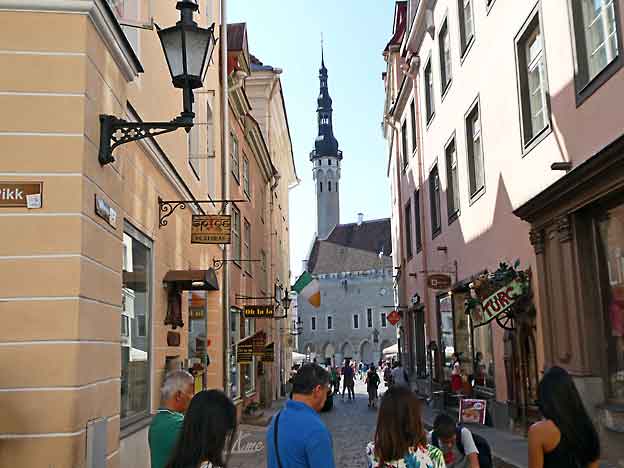
Ved enden av gata ser vi Rådhuset i Tallinn
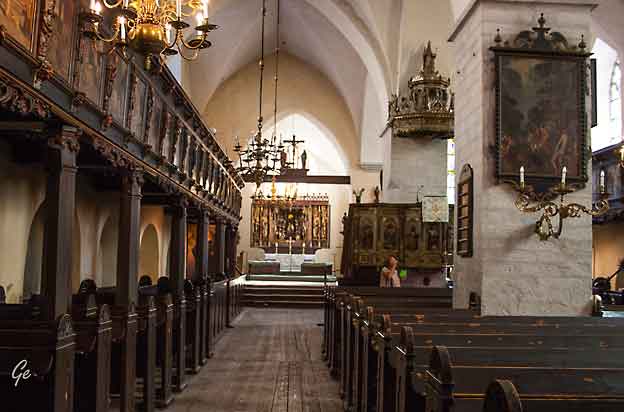
Püha Vaimu Kirik
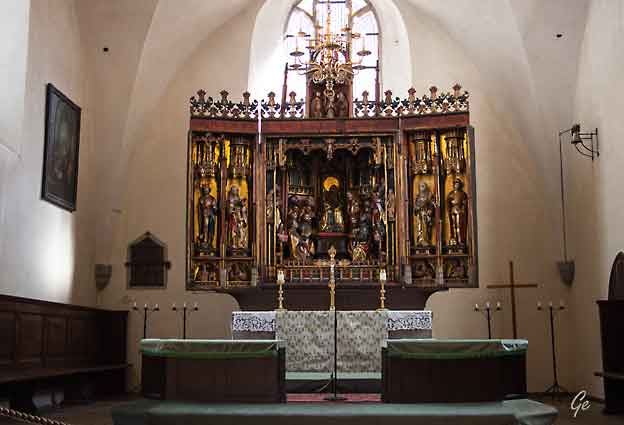
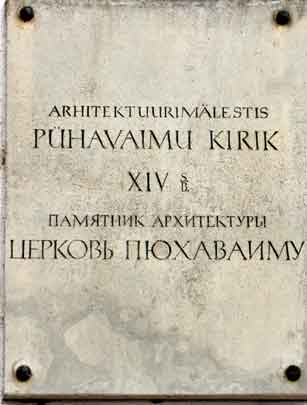 |
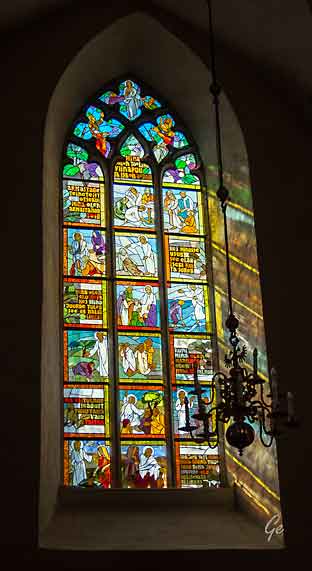 |
Building of the church probably started sometime during the first half of
the 13th century, and the church is mentioned in written sources for the
first time in 1319. The fact that the church does not face due east may
suggest that it was erected in an already built-up area and had to adapt
to the street layout.
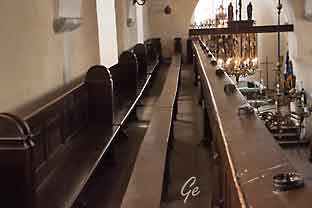 |
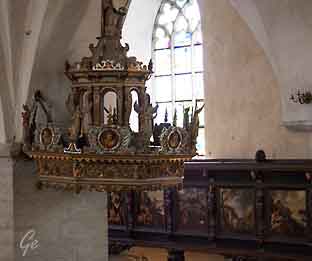 |
dedicated to the Holy Ghost, and apart from the main entrance on the
north side of the church, there was also an entrance from the almshouse
yard, on the south side of the church.
The oldest part of the church is the choir, to which the aisle was added
sometime in the late 13th century or early 14th century. The original
wooden ceiling was replaced in 1360, when the present vaulting, tower
and large gothicwindows were added. In 1630, the tower received its
current appearance, which however is a reconstruction as the tower was
ravaged by fire in both 1684 and 2002. The church was the first church in
Estonia to hold services in Estonian, and the first extracts of the catechism
to be published in Estonian were printed here in 1535.
https://en.wikipedia.org/wiki/Church_of_the_Holy_Spirit,_Tallinn
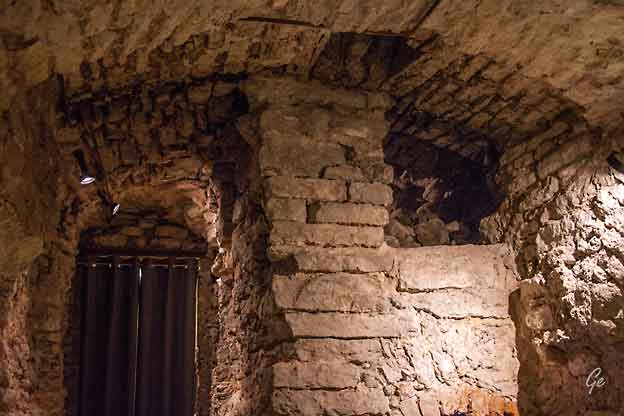
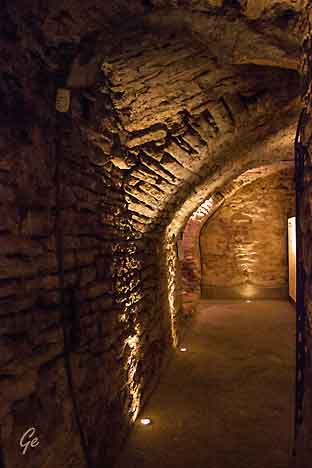 |
Bilder
fra Ajaloo
Muuseum, Grest Guild Hall |
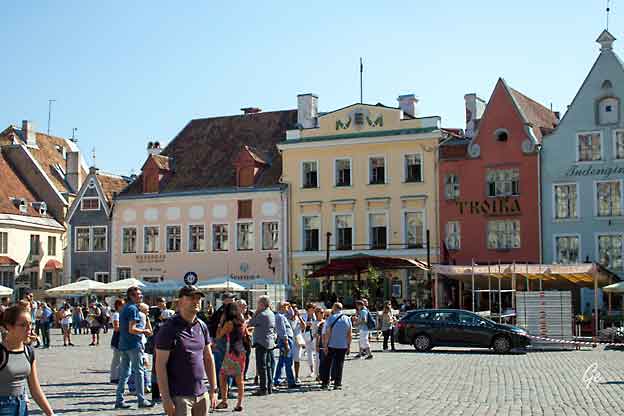
Town Hall Square has been a market place and the centre of this old Hanseatic
town since the Middle Ages. It became the centre of the Lower Town at the turn
of the 13th and 14th centuries.
https://www.visitestonia.com/en/tallinn-town-hall-square
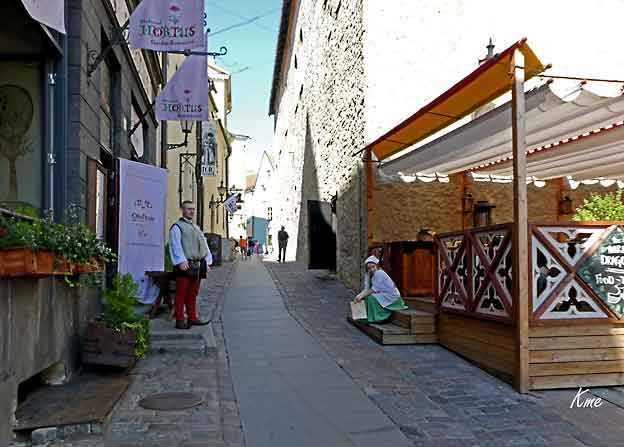
Olde Hansa
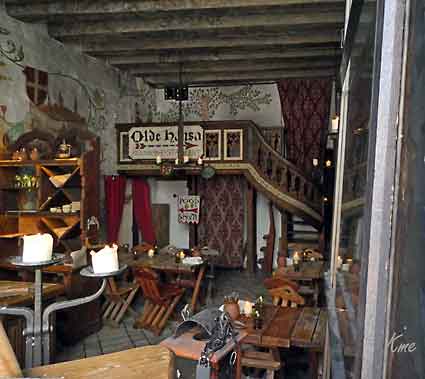 https://www.visittallinn.ee/eng/visitor/eat-drink/r estaurants/pid-175225/olde-hansa |
This unforgettable, Medieval-style restaurant is set up like the welcoming home of a 15th-century Hanseatic merchant. Here you can soothe your hunger with roasted game meat, raise your spirit with flavoured wines and enjoy the genuine Medieval atmosphere complete with colourful murals, period music, candlelight and caring service. |
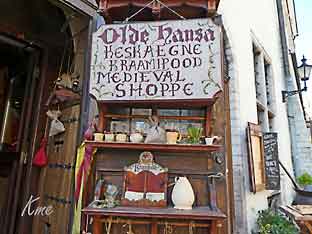 Restauranten: se bildet på http://www.emblemsvaag.no/ Tallinn/Tallinn.html |
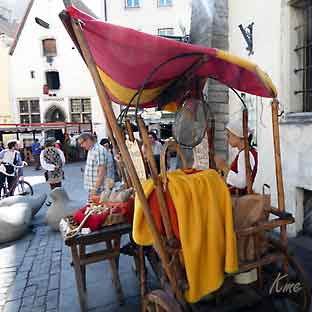 |
The medieval shop based in Olde Hansa, sells souvenirs from local and
international producers including glassware, pottery, silver jewellery
and authentic replicas of items used by medieval townsfolk.
https://www.visittallinn.ee/eng/visitor/see-do/shopping/pid-175622/krambude
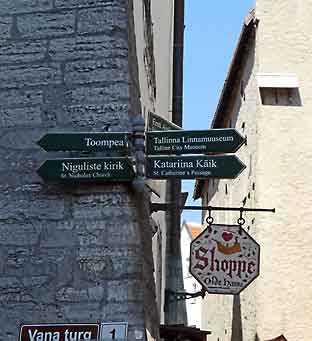 Olde Hansa Shoppe |
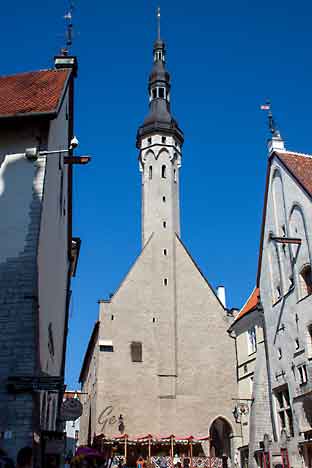 Town Hall |
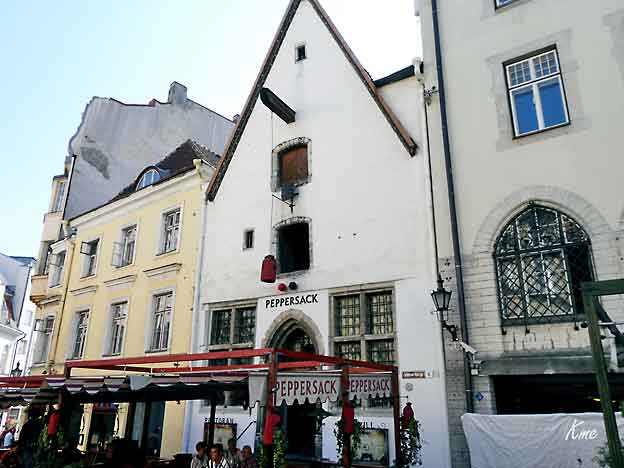
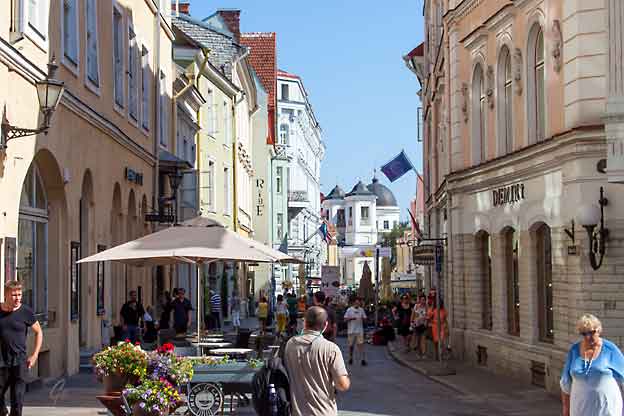
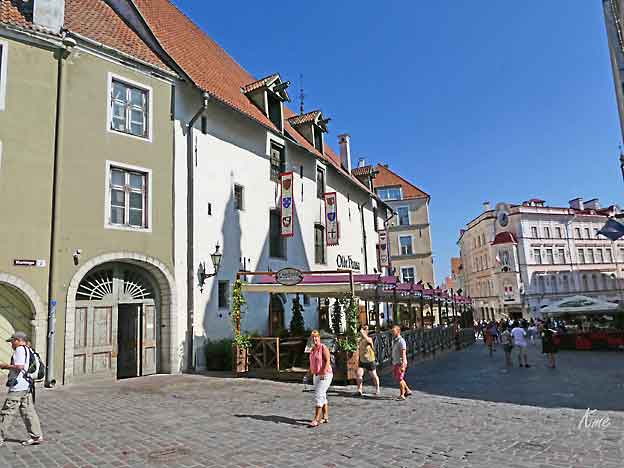
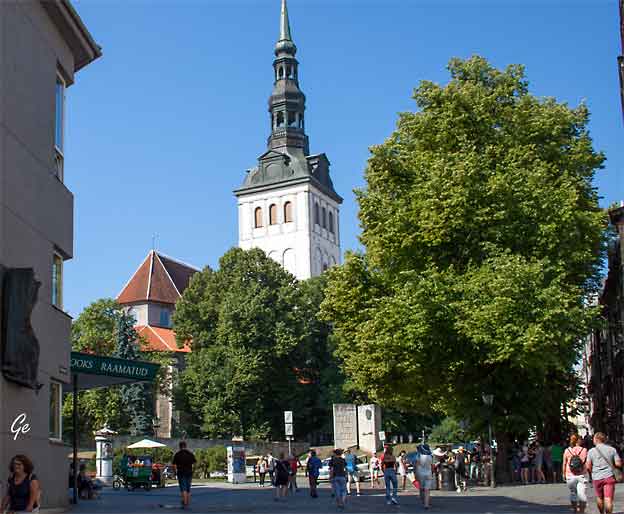
Nikolai-kirken
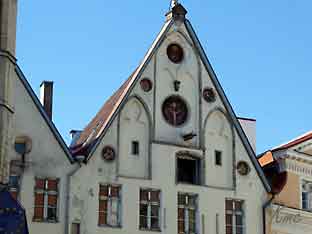 |
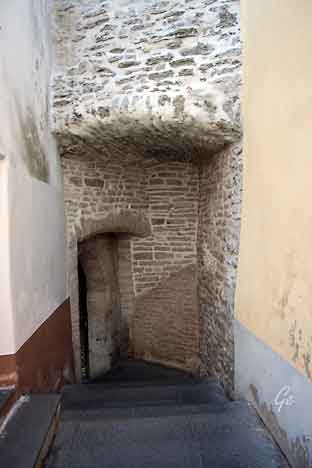 "SHORT LEG GATE" LUHIKE JALG |
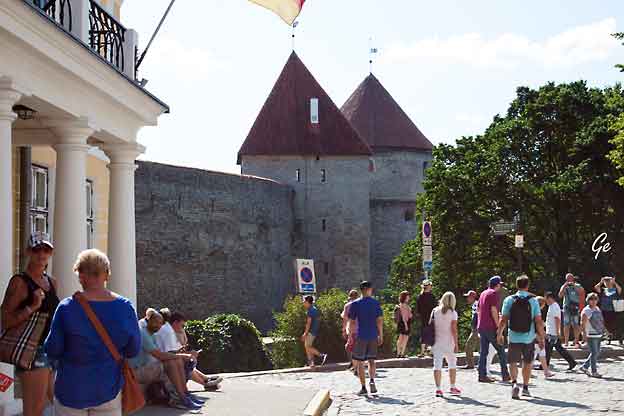
Bymuren
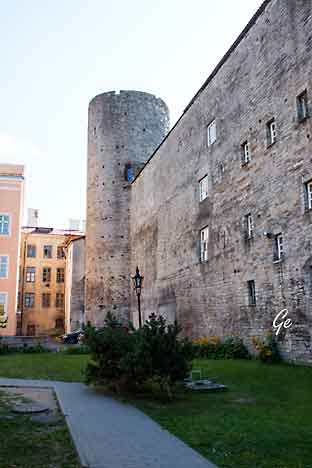 |
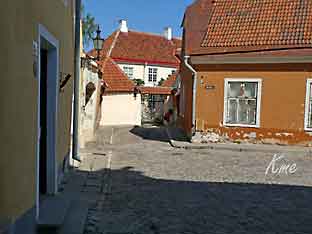 Left: Toompea Castle (Estonian: Toompea loss) (Latin: Castrum Danorum) is a castle on Toompea hill in the central part of Tallinn, the capital of Estonia. The castle, an ancient stronghold site in use since at least the 9th century, today houses the Parliament of Estonia. https://en.wikipedia.org/wiki/Toompea_Castle |
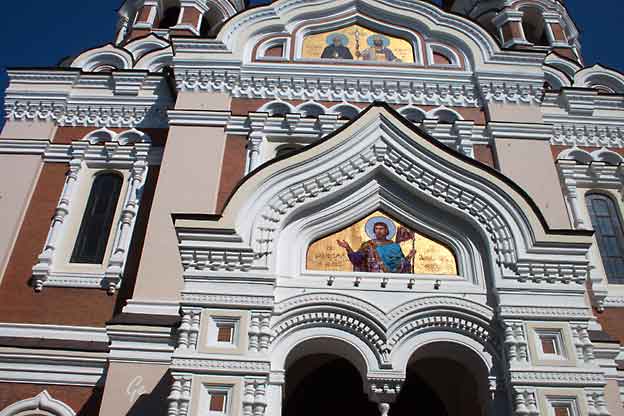
St. Alexander Nevsky Cathedral
This spectacular, onion-domed structure perched atop Toompea Hill is Estonia's
main Russian Orthodox cathedral.
It's also by far the grandest, most opulent Orthodox church in Tallinn.
Built in 1900, when Estonia was part of the tsarist Russian empire, the
cathedral was originally intended as a symbol of the empire's dominance –
both religious and political – over this increasingly unruly Baltic territory.
The cathedral was dedicated to the Prince of Novgorod, Alexander
Yaroslavich Nevsky, who led the famous Battle of the Ice at Lake Peipsi in 1242,
which halted the German crusaders' eastward advance. It was deliberately
placed in this prominent location
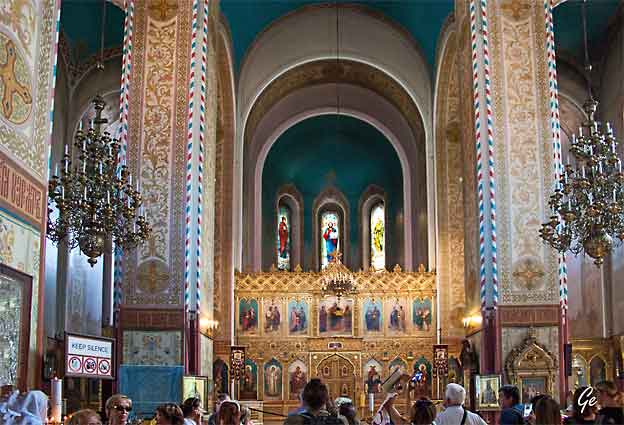
right in front of Toompea Castle, on the same spot where a statue of Martin
Luther had previously stood, to show the mainly Lutheran locals who was
in charge. Now with the controversy long since faded, what's left is simply
an architectural masterpiece. Designed by respected St. Petersburg architect
Mikhail Preobrazhenski, the church is richly decorated in a mixed historicist
style. The interior, filled with mosaics and icons, is well worth a visit.
The church's towers' hold Tallinn's most powerful church bell ensemble,
consisting of 11 bells, including the largest in Tallinn, weighing 15 tonnes.
You can hear the entire ensemble playing before each service.
https://www.visittallinn.ee/eng/visitor/see-do/sightseeing/pid-307/st-alexander-nevsky-cathedral
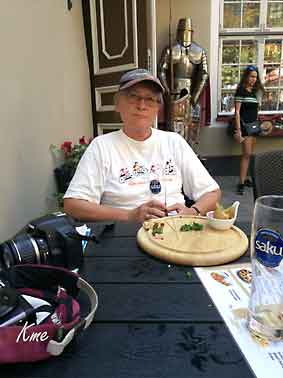 Lunsj i Tallinn. |
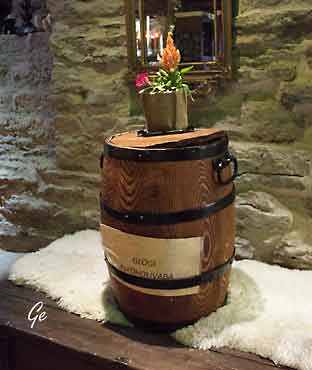 Gløgg-tønne |
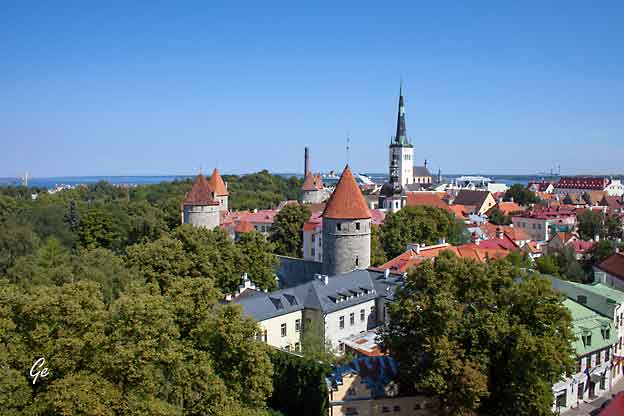
Utsikt-sted
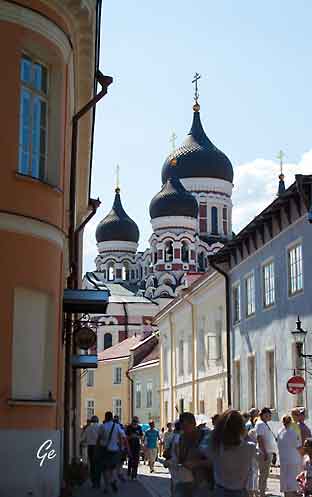 St. Alexander Nevsky Cathedral |
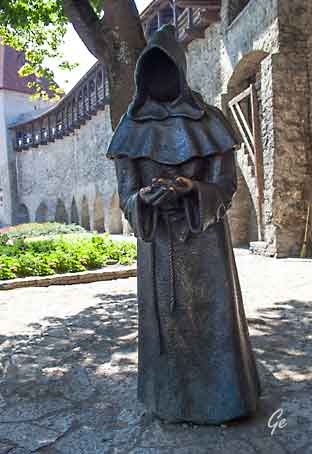 |
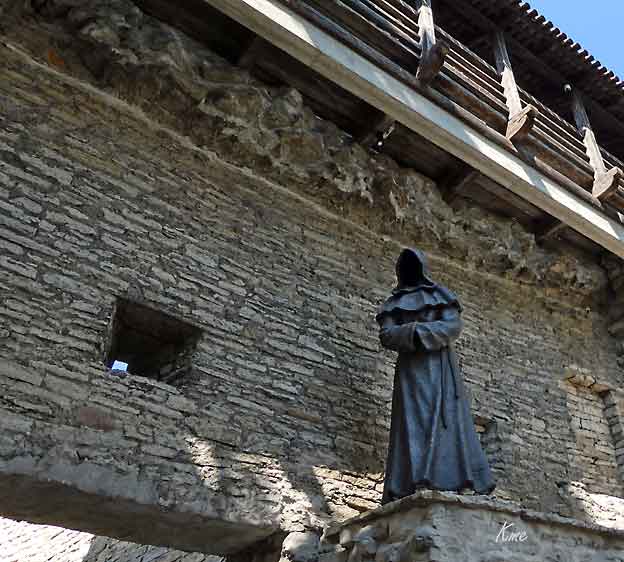
old fortified walls of the city of Tallinn, Estonia. It can be found in the Old
Town Sector, not very far from Town Hall or its sister structure, the Kiek in
de Kok. Both of these towers date back to the 14th Century, and have been
part of the landscape of the town for many years.
The Maiden Tower has suffered from the damage of war at many different
points in its history, and you can see some of the canon damage upon
close inspection. It has undergone repair in almost every century since.
One of the most interesting things about the tower is that is used to
be used as a prison for prostitutes, which is why it is called the
Maiden Tower.
In fact, local legend states that some of the old prisoners still haunt
the structure. On a clear dark night, you might be able to see the
lights of some old ghost roaming the stairs.
https://www.gpsmycity.com/attractions/maiden-tower-(neitsitorn)-25449.html
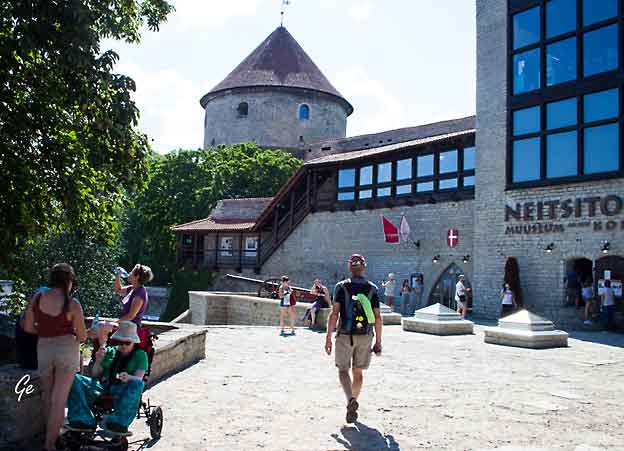
Explore this sturdy, 14th-century tower, sip coffee in its swank café or
walk along the Town Wall for some amazing views.
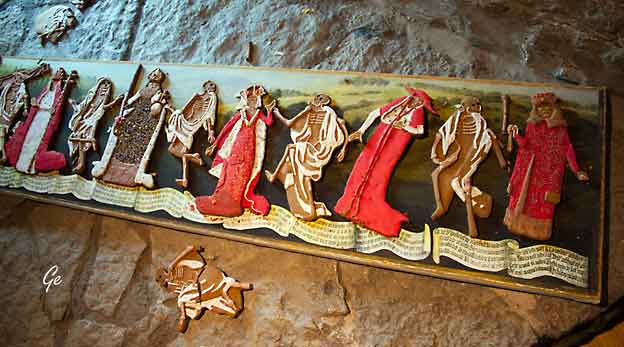
Maiden's Tower,
Since 2012 it has been working as a subdivision of the Tallinn City Museum.
The tower is connected by passageways to its neighbors Talli and Kiek-in-de-Köök.
On the first floor of the Maiden’s Tower you can watch an animated history of the building and the surrounding area. In the basement of the tower there is an
exhibition called “Look in the Bottle,” where objects from the glass collection of
the Tallinn City Museum are on display. There is also a cafe open in the tower.
Maiden's Tower in Tallinn, Old City, cafe and museum, location and photo (triptoestonia.com) (26. januar 2023)
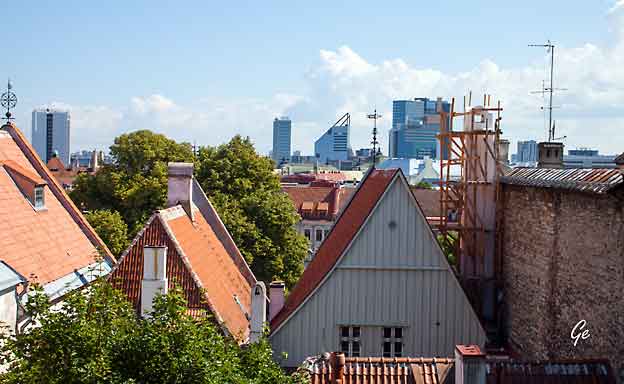
This open, garden-like area on the slopes of Toompea Hill happens to be the
legendary birthplace of the Danish flag.
Nestled between the city wall and Lower Town, this relaxing spot is called the
Danish King's Garden because it was supposedly here that King Valdemar II
of Denmark and his troops camped before conquering Toompea in 1219.
More importantly, a well-known legend both in Estonia and Denmark holds
that the Danish flag, the Dannebrog, originated right here.
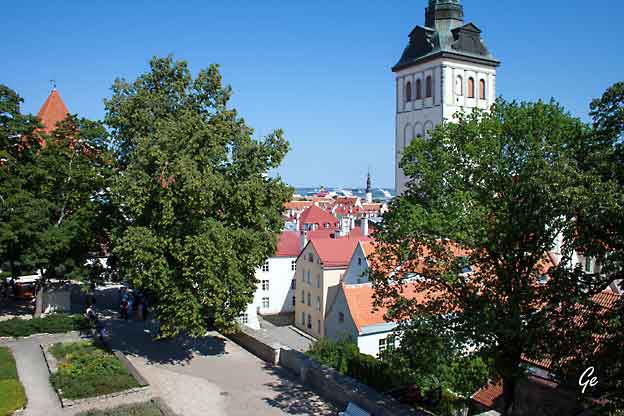
According to the story, Valdemar's forces were losing their battle with the
Estonians when suddenly the skies opened and a red flag with a white
cross floated down from the heavens. Taking this as a holy sign, the Danes
were spurred on to victory.
Today the garden remains a place where locals honour the role Denmark
played in Estonia's history. Halfway down the steps towards Rüütli street
you can see an iron sword and shield
with a Danish cross, and each summer, Danneborg Day is celebrated here.
https://www.visittallinn.ee/eng/visitor/see-do/sport-adventure/pid-174827/danish-king-s-garden
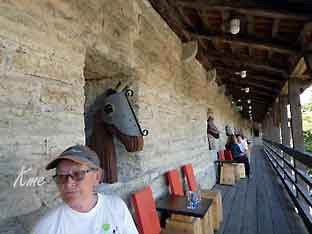 |
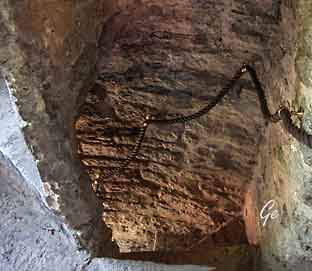 Trapp ned fra tårnet |
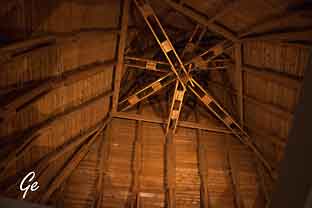 Taket på et av tårna. |
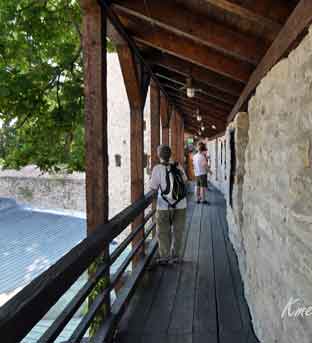 |
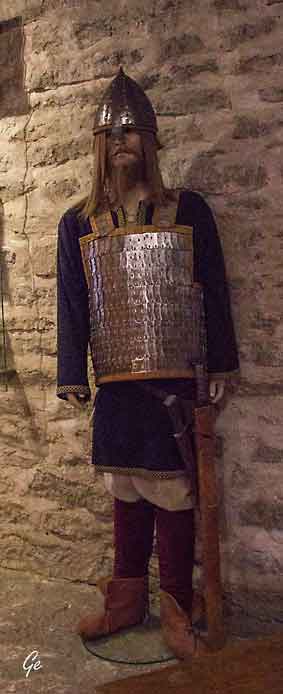 |
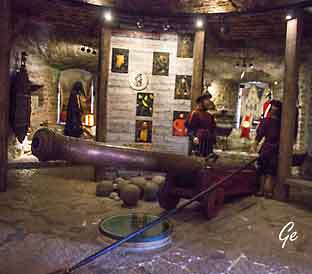 Utstilling i tårnet |
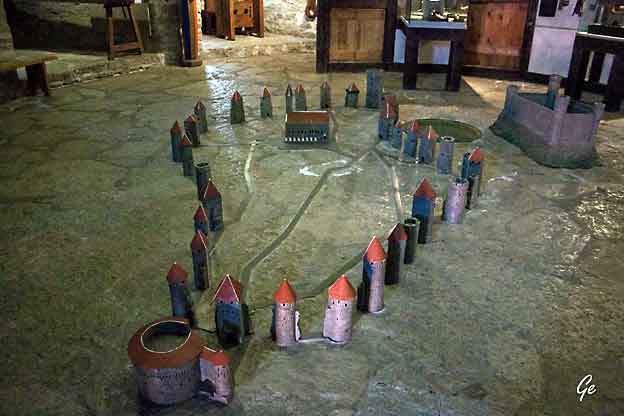
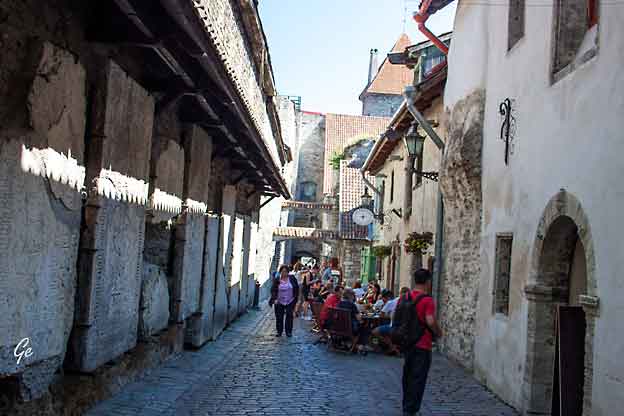
Katariina käik (St. Catherine's Passage)
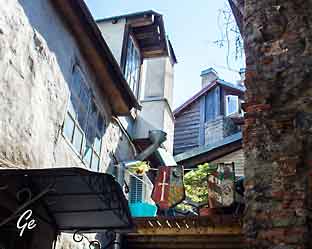 |
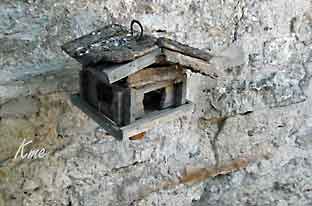 |
behind what used to be St. Catherine's Church. It connects Vene street with the Müürivahe street where the town's famous knit market operates.
What makes the passage particularly interesting is that it's home to the
St. Catherine's Guild, a collection of craft workshops where artists use traditional methods to create and sell glassware, hats, quilts, ceramics, jewellery,
hand-painted silk and other wares. The workshops are housed in the small,
15th- to 17th-century rooms on the south side of the lane, and are set up in an
open-studio fashion so visitors can watch the artists at work, be it glass-blowing, weaving or pottery making.
https://www.visittallinn.ee/eng/visitor/see-do/sightseeing/pid-174826/katariina-kaik-st-catherine-s-passage
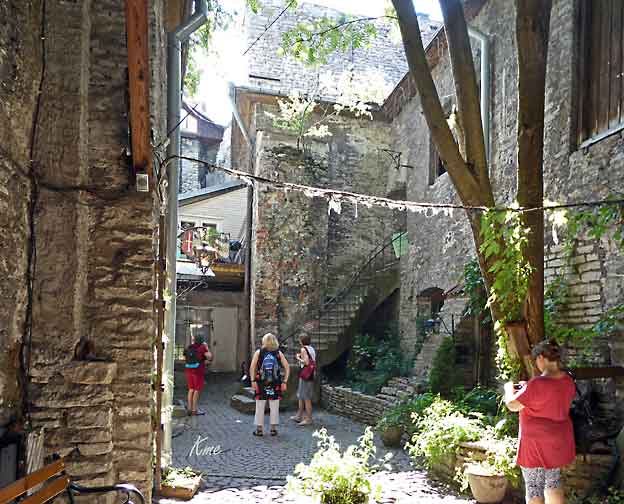
The remains of the Dominican Monastery are very tucked away and as a result
see few tourists. The entrance is off St Catherine's Passage, between
Muurivahe & Vene St. Look out for signs with a spotted dog on, this is the
symbol of Dominicans. In medieval times the monks where called Domini
Canes (Dogs of God) and wore white robes with black capes.
This monastery was founded in 1246 and is one of the oldest buildings in town.
https://www.tripadvisor.co.za/ShowUserReviews-g274958-d3442973-r241658965-
Dominican_Monastery_Claustrum-Tallinn_Harju_County.html
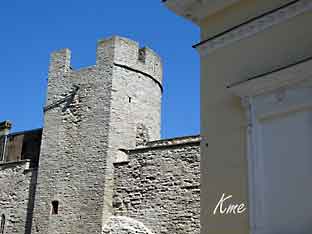 Bymur |
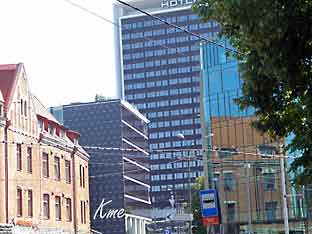 Litt av det moderne Tallinn |
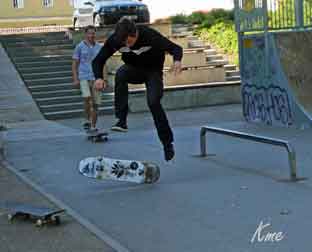 |
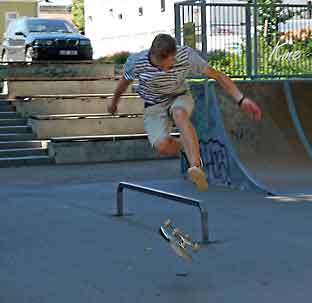 |
Vi var tilbake i båten i god tid før middag, så vi rakk en tur på soldekk.
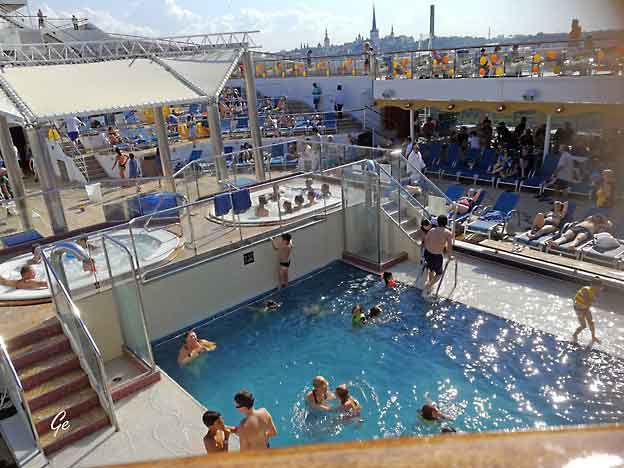
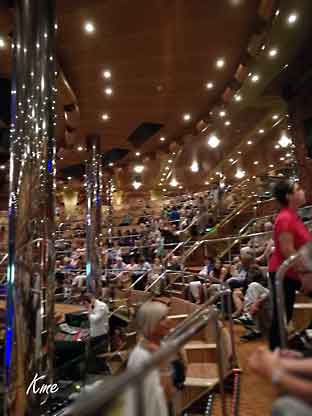 The tenor Spero Bongiolatti "in Consert" Emotion and passion. Urbino teater. |
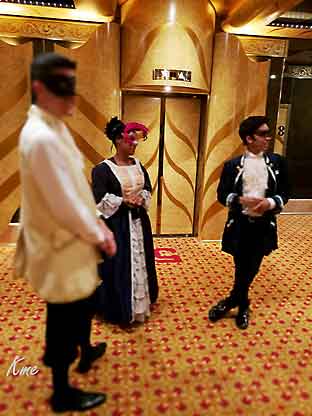 La Notte in Maschera i Capri Lounge |
Vi skulle ha vært i Stockholm klokka 0900, men tåka lå tett over
innseilinga, så vi ble nesten 3 timer forsinka.
Ved 12-tida gikk vi i land og tok shuttlebuss inn til byen.
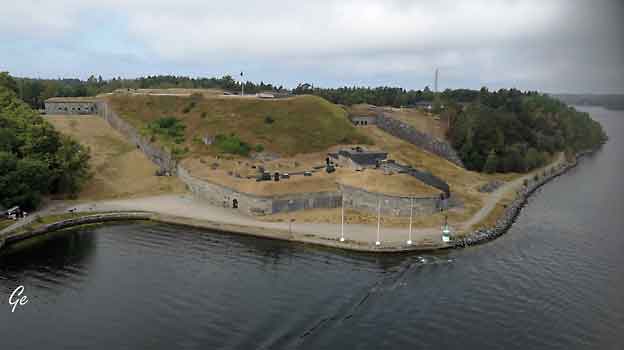
Festning ved Oxdjupet
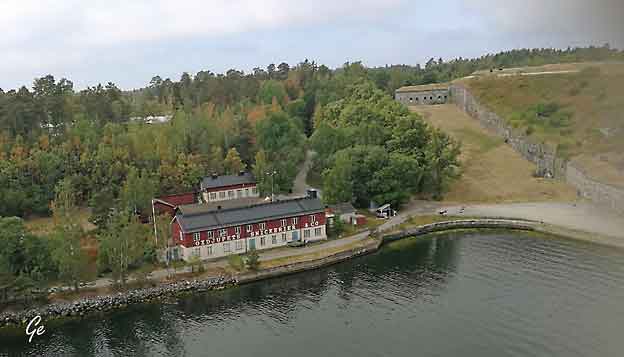
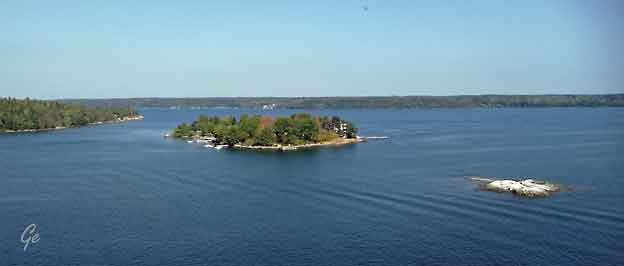
Tåka har letta og vi kan fortsette mot Stockholm
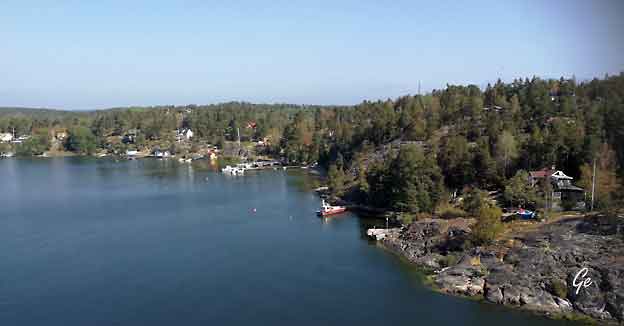
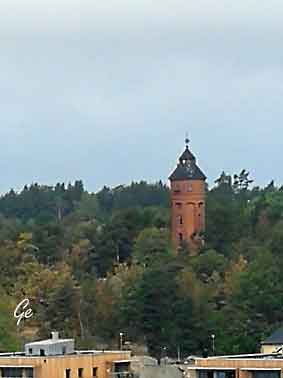 |
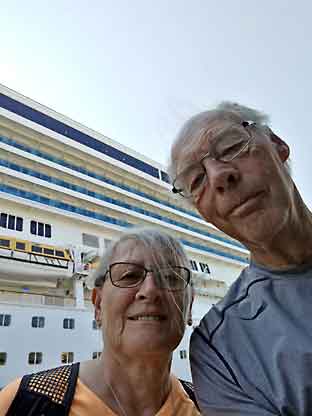 |
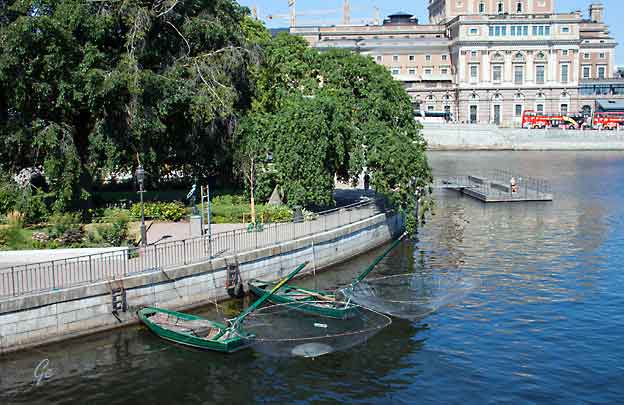
Så er vi i Stockholm. I bakgrunnen Stockholms opera.
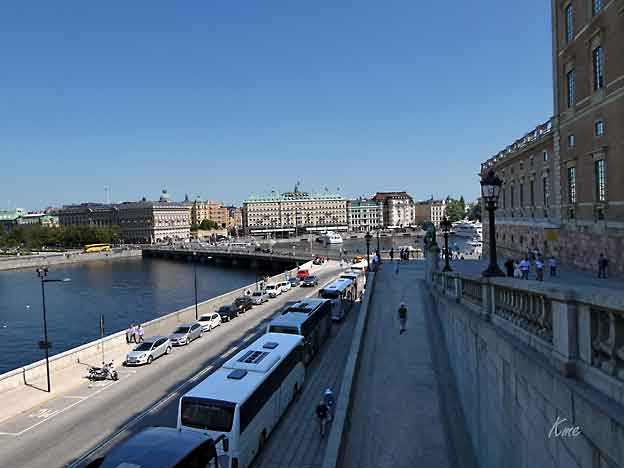
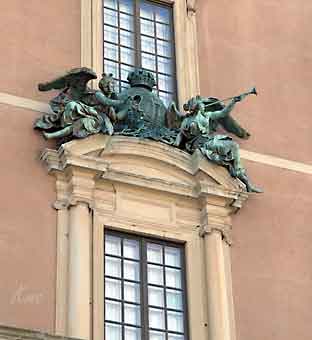 Stockholms slott, norra längan, renomégruppen |
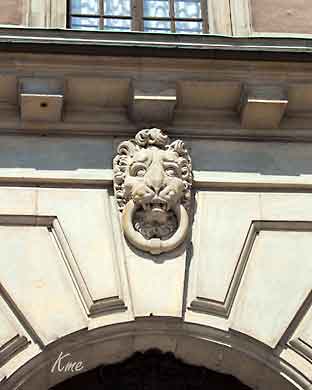 |
De første bygningen vi kom til var Riksdagshuset og det Kungliga Slottet.
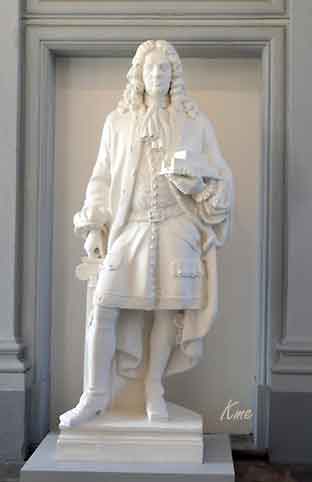 |
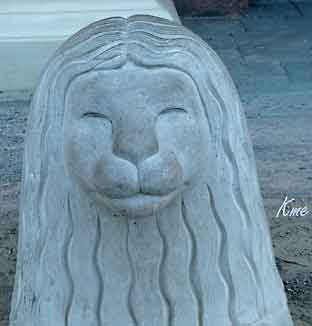 |
Stockholm Palace or the Royal Palace (Swedish: Stockholms slott or Kungliga
slottet) is the official residence and major royal palace of the Swedish monarch
(the actual residence of King Carl XVI Gustaf and Queen Silvia is at
Drottningholm Palace). Stockholm Palace is located on Stadsholmen, in Gamla
stan in the capital, Stockholm. It neighbours the Riksdag building.
The offices of the King, the other members of the Swedish Royal Family, and
the offices of the Royal Court of Sweden are located here.
The palace is used for representative purposes by the King whilst
performing his duties as the head of state.
This royal residence has been in the same location by Norrström in the
northern part of Gamla stan in Stockholm since the middle of the 13th
century when the Tre Kronor Castle was built. In modern times the name
relates to the building called Kungliga Slottet.
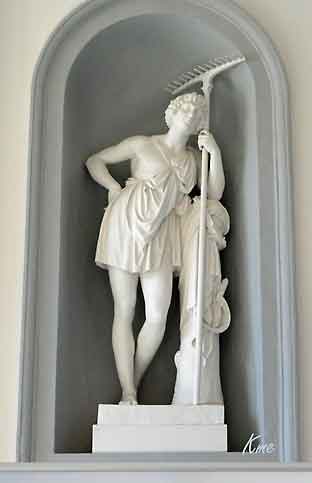 |
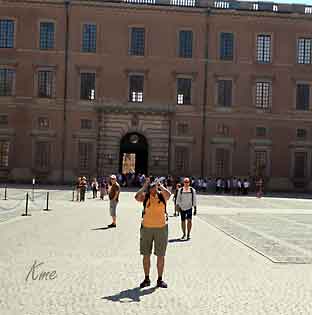 |
The palace was designed by Nicodemus Tessin the Younger and erected on the
same place as the medieval Tre Kronor Castle which was destroyed in a fire on
7 May 1697.
Due to the costly Great Northern War which started in 1700, construction of
the palace was halted in 1709, and not recommenced until 1727—six years
after the end of the war.
When Tessin the Younger died in 1728, the palace was completed by Carl
Hårleman who also designed a large part of its Rococo interior.
The palace was not ready to use until 1754, when King Adolf Frederick and Queen Louisa Ulrika moved in, but some interior work proceeded until the 1770s.
https://en.wikipedia.org/wiki/Stockholm_Palace
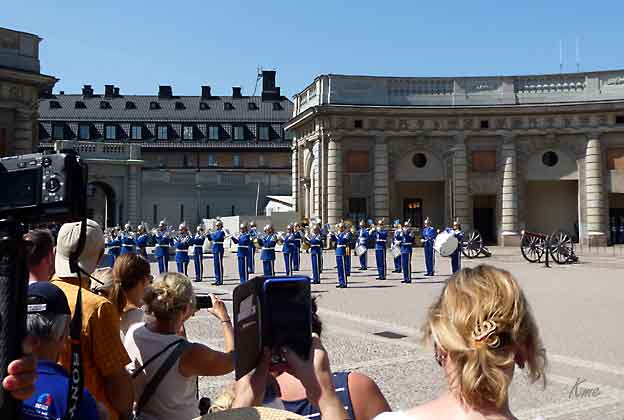
Vaktavløsning
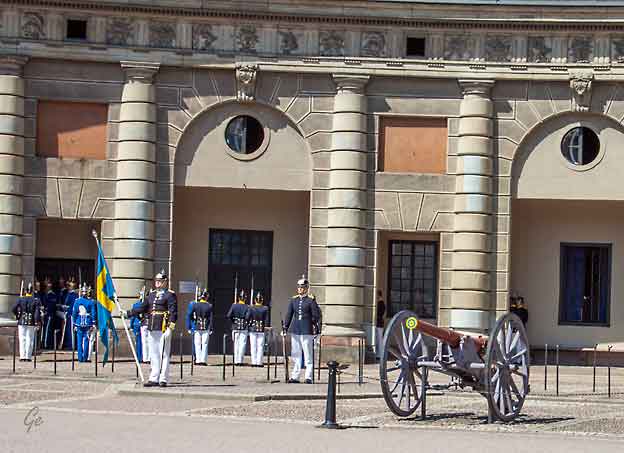
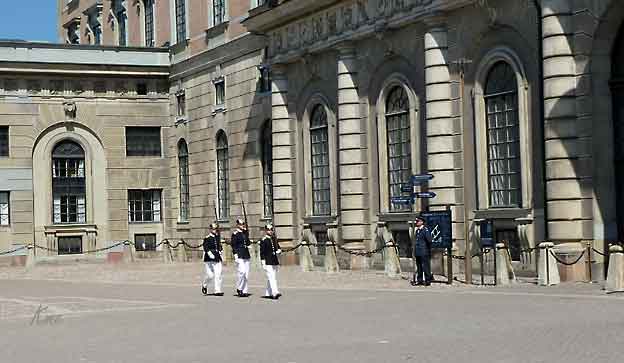
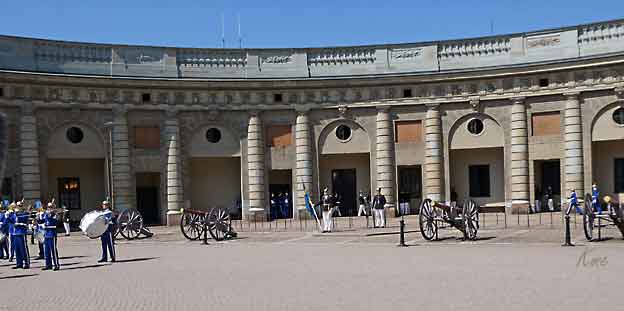
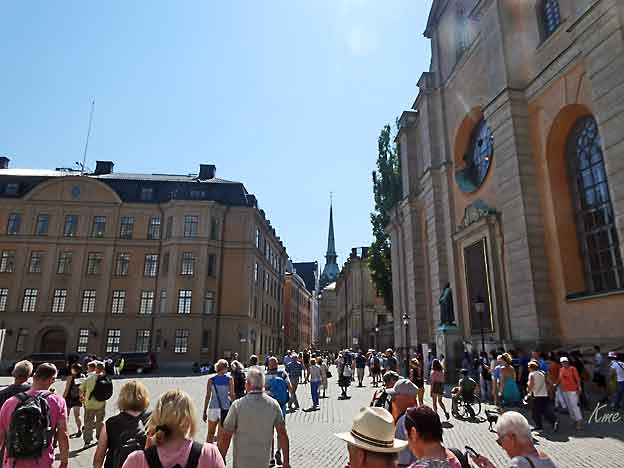
Gamla Stan, the Old Town, is one of the largest and best preserved medieval
city centers in Europe, and one of the foremost attractions in Stockholm.
This is where Stockholm was founded in 1252. All of Gamla Stan and the
adjacent island of Riddarholmen are like a living pedestrian-friendly
museum full of sights, attractions, restaurants, cafés, bars, and places to shop.
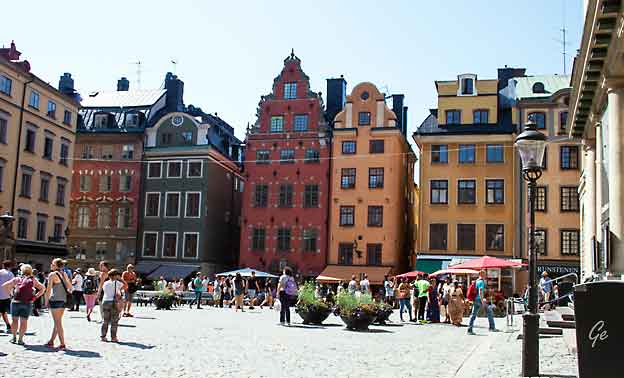
Gamla Stan is also popular with aficionados
of handicrafts, curious, and souvenirs. The narrow winding cobblestone streets,
with their buildings in so many different shades of gold, give Gamla Stan its
unique character. Even now cellar vaults and frescoes from the Middle Ages can
be found behind the visible facades, and on snowy winter days, the district feels
like something from a storybook.
https://www.visitstockholm.com/see--do/attractions/gamla-stan/
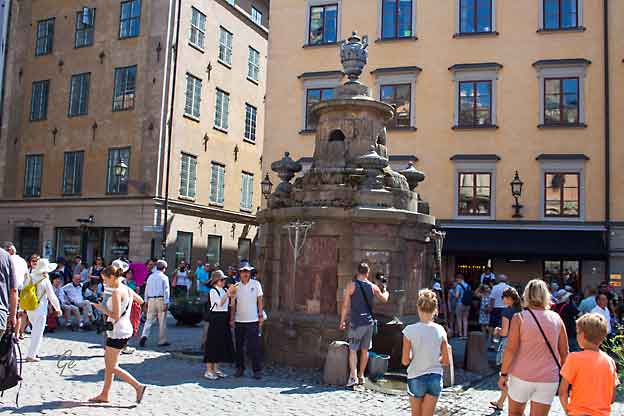
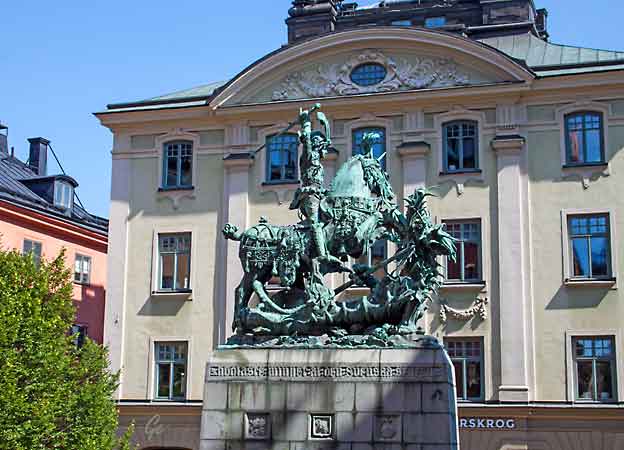
Sankt Göran och Draken
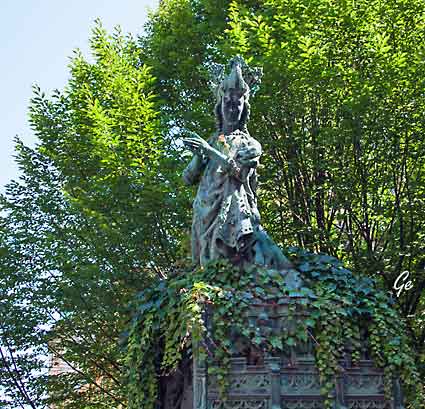 |
Gamla
Stan |
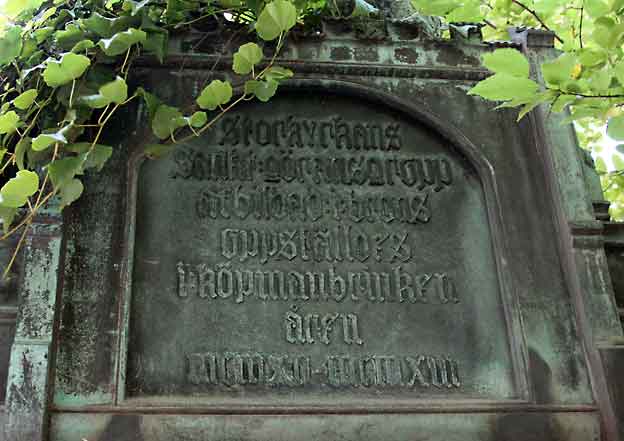
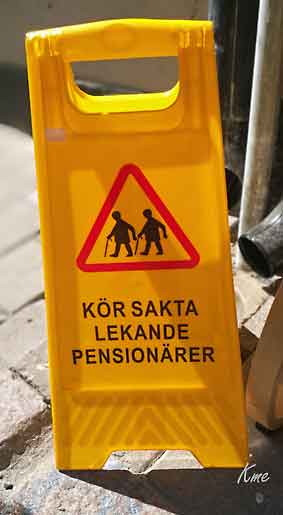 |
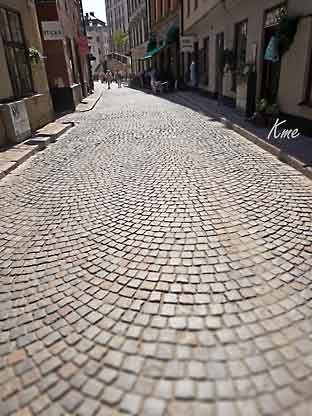 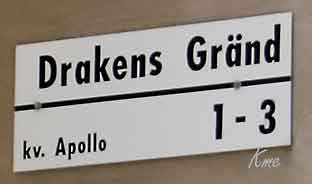 |
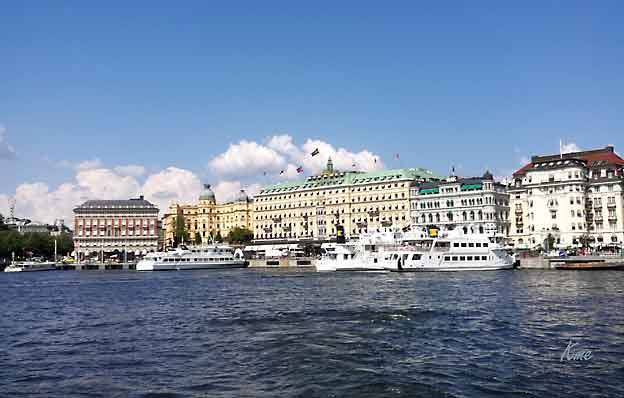
Havn i Stockholm
| Thor
Heyerdahl av Kiel |
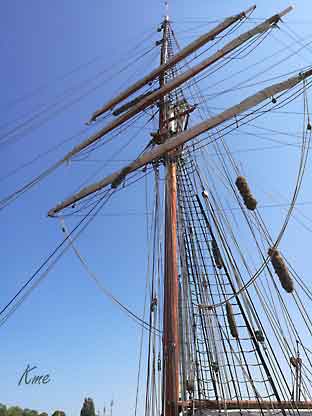 |
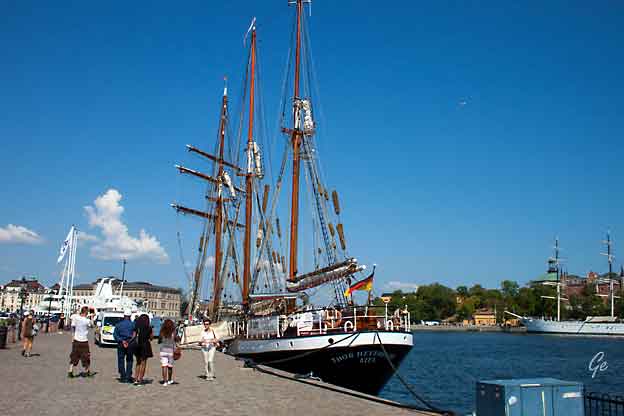
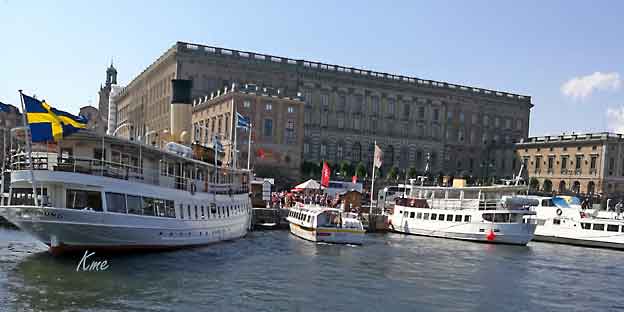
Etter Gamla Stan dro vi på båttur igjen.
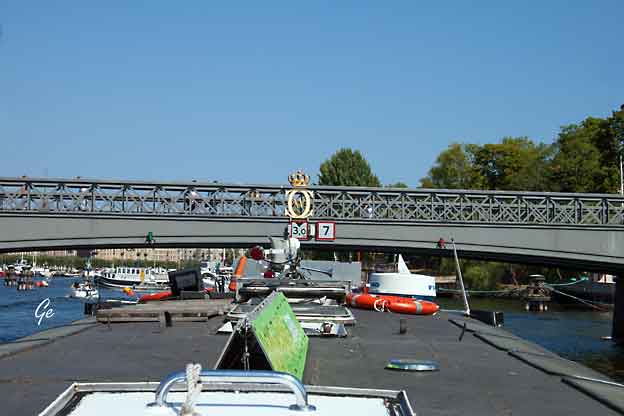
Lav bro
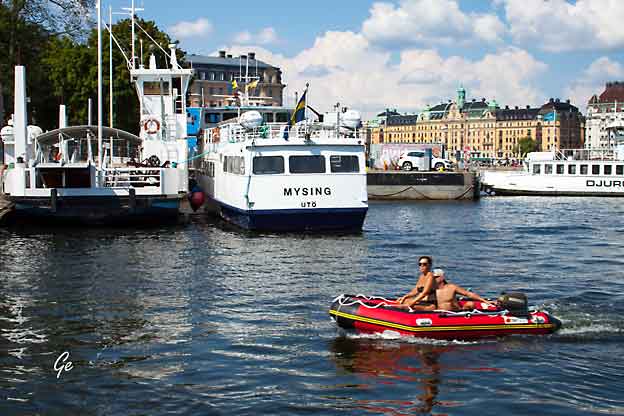
Små og litt større båter
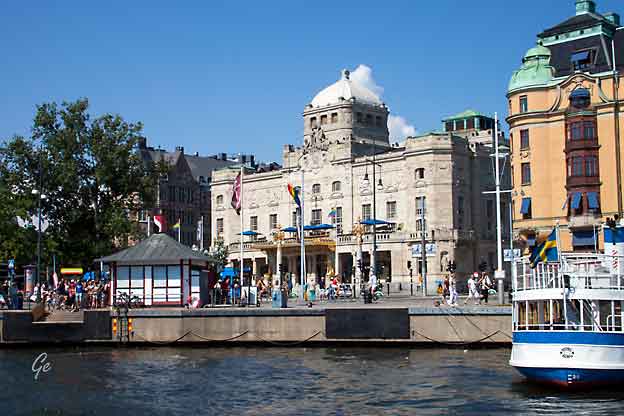
Dramaten
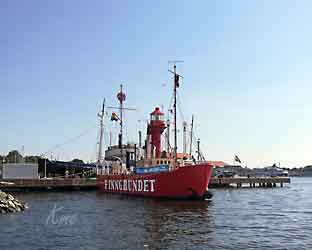 |
The Lightship
Finngrundet is
a lightvessel built in 1903 and now
a museum ship moored
in Stockholm, Sweden. She was the second Finngrundet lightvessel, built in Gävle, Sweden in 1903 and replacing one dating from 1859. She was stationed on the Finngrund banks in the Baltic Sea 40 nautical miles (74 km) northeast of Gävle during the ice-free part of the year. Lightship Finngrundet (1903) - Wikipedia (29. oktober 2023) |
Gröna Lund (IPA: [ˈɡrøːna ˈlɵnːd]) is an amusement park in Stockholm, Sweden.
It is on the seaward side of Djurgården Island. It is relatively small compared to
other amusement parks, mainly because of its central location, which limits
expansion.
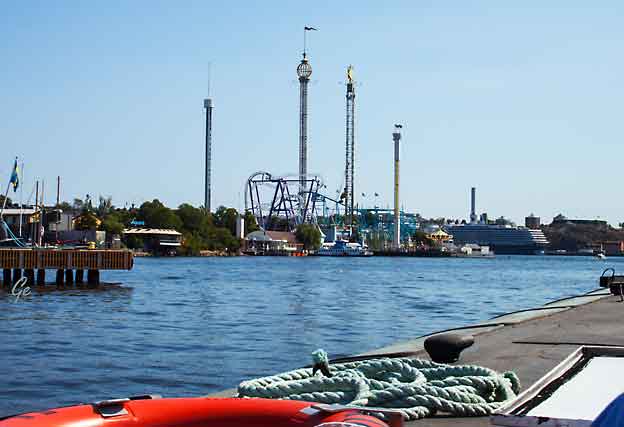
The 15 ac (6 ha) amusement park has over 30 attractions and is a popular
venue for concerts in the summer. It was founded in 1883 by James Schultheiss.
https://en.wikipedia.org/wiki/Gr%C3%B6na_Lund
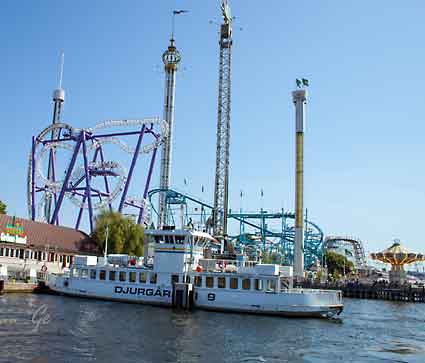 |
Gröna Lund's roots are in the 1880s, making it Sweden's oldest amusement park. However the area has been used for similar purposes since the early 18th century. In 1883, a German by the name of Jacob Schultheiss rented the area to erect "carousels and other amusements". |
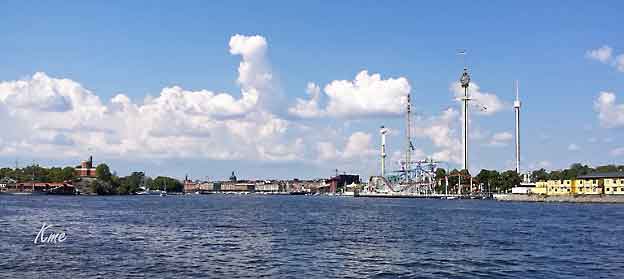
Until 2001, descendants of Schultheiss ran Gröna Lund.
Before the amusement park came into being, Gröna Lund was the name of a
small park.
https://en.wikipedia.org/wiki/Gr%C3%B6na_Lund
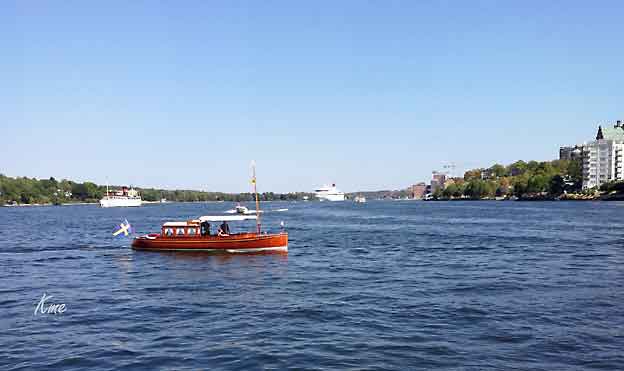
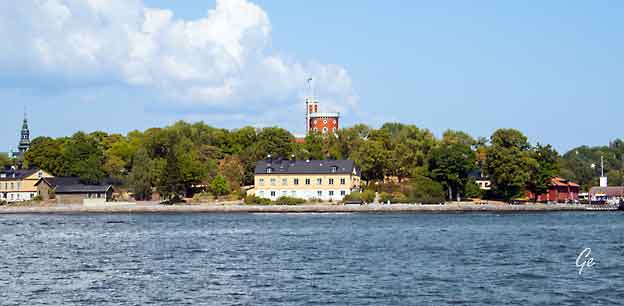
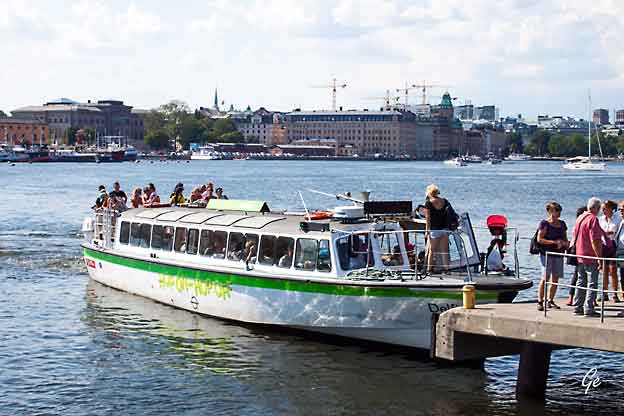
Hop on - hop off
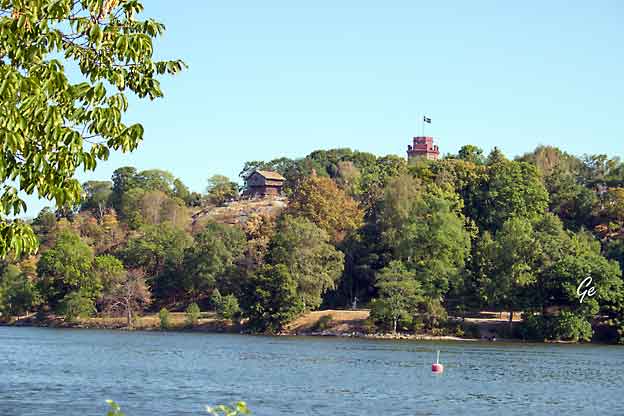
Skansen
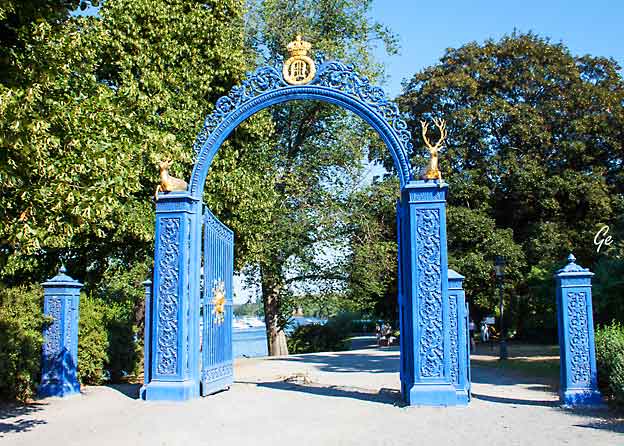
Djurgården
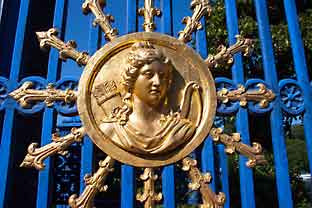 Djurgården |
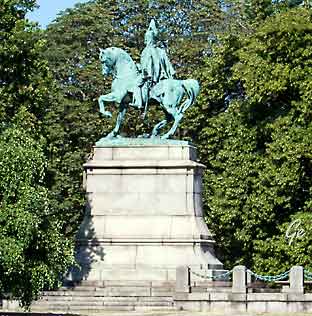 |
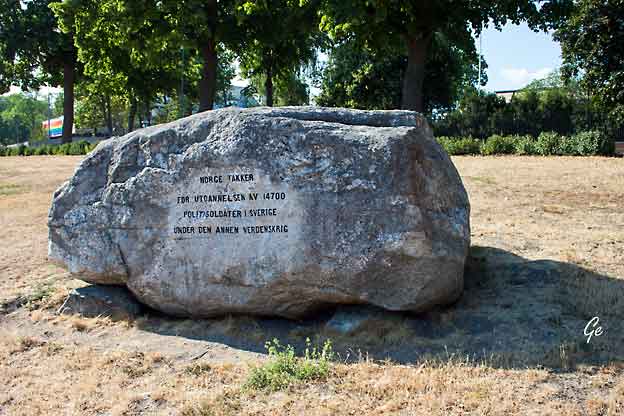
Vi gikk tilbake til Costa Magica, og fikk se denne minnesteinen.
Norge takker for utdannelsen av 14 700 politisoldater i Sverige
under den annen verdenskrig.
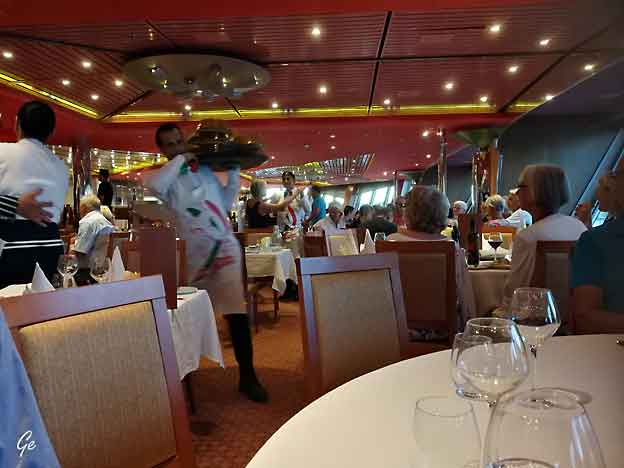
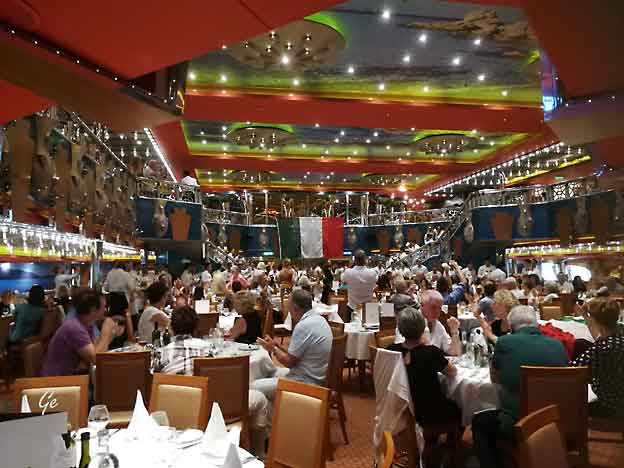
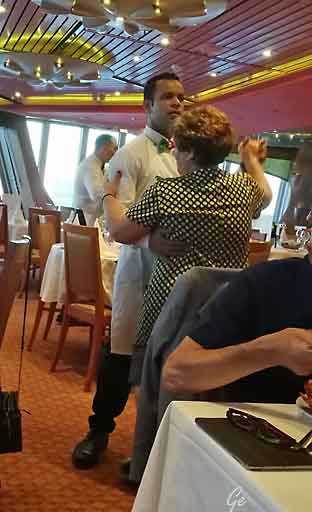 |
Siste
middag i Ristorante Costa Smeralda. Det var underholdning og dans. Kelnerne dansen med gjestene, og tilslutt dannet alle lenke og gikk rundt i restauranten. |
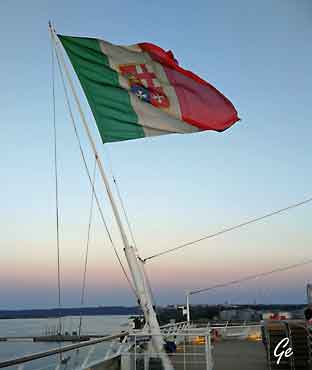 |
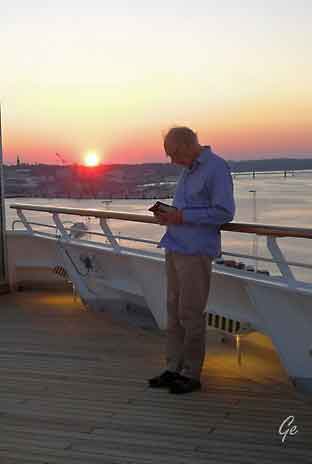 |
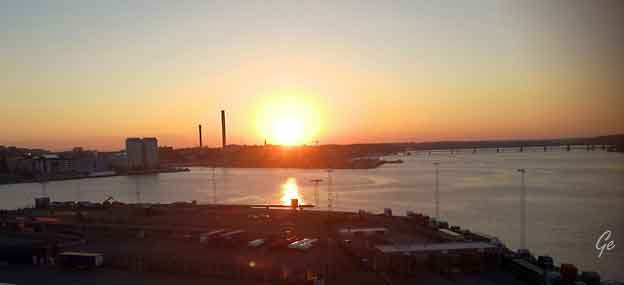
Siste kveld på dekk.
En fin kveld, som alle de andre kveldene ombord.
Vi går i land.
En buss henter oss og kjører oss til Arlanda.
Fra Gardermoen tog til Oslo S, derfra T-bane til
Nasjonalteatret og båt fra Aker brygge.
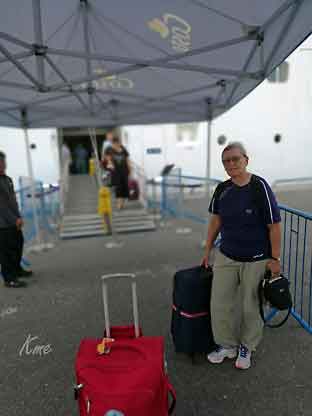 |
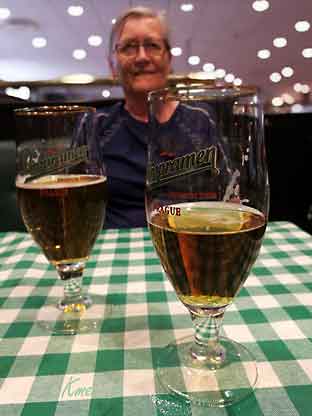 En øl på Arlanda |
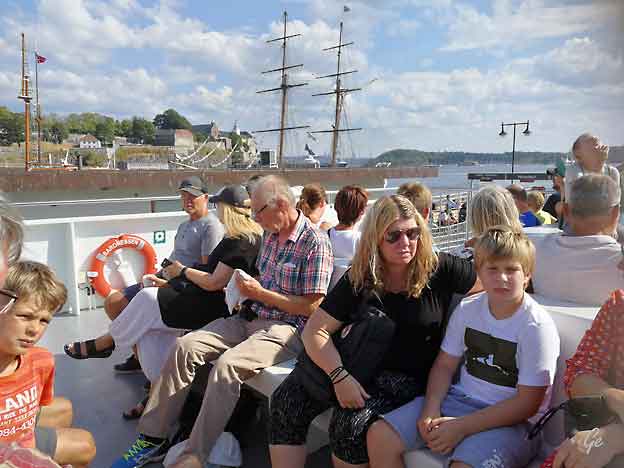
Nesten hjemme. Vi er ombord på hurtigbåten Baronessen.
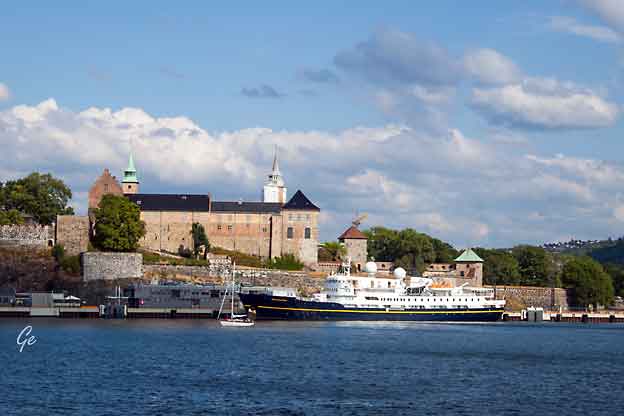
Oslo, Akershus festning
Karl Martin Emblemsvåg og
Grete Emblemsvåg
